















Our integrated report highlights our journey over the past year, focusing on our strategy, performance, opportunities, and outlook in financial, economic, social, governance, and environmental matters. Committed to value creation and preservation, we aim to mitigate any short- and long-term value erosion, ensuring a positive influence on all stakeholders through sustainable operations and responsible corporate citizenship.
Embracing integrated thinking, we incorporate environmental, social, and governance (ESG) factors into our strategic decision-making and operations.This report provides stakeholders with a forward-looking perspective on our financial and non-financial performance, including strategy, risks, opportunities, targets, and governance.
Our report aims to demonstrate our value creation and commitment to fostering shared prosperity for our members, the economy, and society. It offers a transparent view of how we create value across short, medium, and long terms, addressing material financial, economic, social, and governance issues.




We adopt the concept of double materiality, encompassing both internal factors that influence our operations, risk management, and financial performance, and external factors with significant implications for stakeholders and the broader environment, including social and environmental risks, regulatory changes, and emerging trends.
This approach ensures stakeholders gain insights into the material factors driving our immediate operational success, as well as our strategic initiatives and investments shaping medium and long-term resilience, growth, and positive societal and environmental impacts.

This report discloses information about matters that substantively affect our ability to create value over the short, medium, and long term. Short-term refers to 12-18 months, medium-term spans 18 months to 5 years, and longterm extends beyond 5 years.
Aligned with the international Integrated Reporting (IR) Framework and Uganda's National Social Security FundAct Cap 230, this report covers our progress for the year ending 30 June 2024. "National Social Security Fund," "NSSF," and "The Fund" are interchangeably used but refer to the same entity
Our materiality determination process is continually assessed and approved by our Board to ensure relevance of our strategy
Materiality determination process Read more about our material matters
Identify matters by scanning the internal and external environment
Prioritise matters and formulate the strategic risks and opportunity register
Define strategy and targets incorporating performance measures

This report may contain forward-looking statements with respect to the Fund's future performance and prospects. While these statements represent our judgment and future expectations at the time of preparing this report, several emerging risks, uncertainties, and other key factors could cause actual results to differ materially from our expectations.These include factors that could adversely affect our business and financial performance.
Outlook information comprises challenges, opportunities, and disruptive factors we have identified that have the potential to affect the achievement of our strategic objectives and our mitigating response as well as opportunities identified. Outlook information can be found throughout this report; however, most of this information can be found in our outlook section.
The internal audit function plays a crucial role in supporting the integrity and transparency of integrated reporting at NSSF It provides independent assurance on financial and non-financial reporting, governance, risk management, and control processes. By focusing on areas of greatest risk, internal audit ensures the design and operating effectiveness of the framework supporting integrated reporting objectives.
Internal audit at NSSF is structured to support enterprise value creation through integrated reporting. It evaluates reporting processes, governance, risk management, and control adequacy related to financial and non-financial capitals. Providing objective assurance independent of management, Internal audit enhances the integrity of the integrated report's content, ensuring alignment with stakeholder interests.
Internal audit provides assurance on key areas across the six capitals:
This comprehensive assurance framework supports NSSF in delivering value and ensuring transparency in its operations and reporting.
External auditors, KPMG Uganda, were appointed by theAuditor General, to conduct the annual audit of the Fund's Annual Financial Statements for the year ending 30 June 2024.They issued an unqualified audit opinion, aligning with International Financial Reporting Standards and regulatory requirements, affirming the Fund's robust financial health.
In the three lines of defence model, Enterprise Risk Management, Legal, and InternalAudit collaborate to provide combined assurance on risk, compliance, and internal controls.This approach ensures comprehensive coverage and avoids duplication in assuring financial and non-financial information.
execution, financial performance, investment processes, and financial reporting
restructuring, recruitment, rewards, benefits, and
partnerships, CSI activities, and community impact
Reporting frameworks
Our Integrated Report is guided by various codes and standards including: TM
Ÿ King IV Report on Corporate Governance for SouthAfrica (King IV )
Ÿ UK (United Kingdom) combined Code on Corporate Governance
Ÿ Integrated Reporting Framework
Ÿ Global Reporting Initiative (GRI standards)
Ÿ Sustainable Development Goals (SDGs)
Ÿ International Financial Reporting Standards (IFRS)
Ÿ Uganda Retirement Benefits RegulatoryAuthorityAct and the NSSFAct
Our approach to value creation, preservation, and erosion
Our financial, human, manufactured, intellectual, social and relationship, and natural capitals facilitate every aspect of our business and our ability to create long-term value.
We have accordingly defined our structure, activities, and performance against our strategy in this report in terms of these six capitals. Value creation, preservation, and erosion are the consequences of how we apply and leverage our capitals as part of our strategy execution and are evident in how these capitals change over time.
Value creation
We empower people to secure their financial future and well-being by fostering a culture of saving, contributing to a more prosperous society
Value preservation
The Board prioritises long-term value creation for all stakeholders by integrating ESG factors into responsible decision-making, fostering stability, and contributing to sustainable economic growth.
Value erosion
The Board actively mitigates value erosion for stakeholders by strategically leveraging our capitals and considering trade-offs in decision-making.
Integrated thinking guides our decisions, expanding our view beyond short-term gains to consider the broader impact on stakeholders and the environment.This holistic approach is reflected in our strong stakeholder engagement, robust risk management, responsible governance, commitment to employee well-being, and focus on digital innovation. We remain agile, adapting to the new NSSFAct Cap 230 to ensure business resilience.
The Institute of Certified PublicAccountants (ICPAU), the Uganda Securities Exchange (USE), and the Capital Markets Authority (CMA) host the Financial Reporting (FiRe)Awards on an annual basis.
NSSF secured a prestigious SilverAward at the 2023 FiReAwards, outshining over 100 competitors. We also received recognition for outstanding Sustainability Reporting, presentation, and Public Sector Reporting, along with a commendation for corporate governance practices.
The Fund also won the Regional Category in the Corporate Governance Institute of SouthAfrica (CGISA) awards.
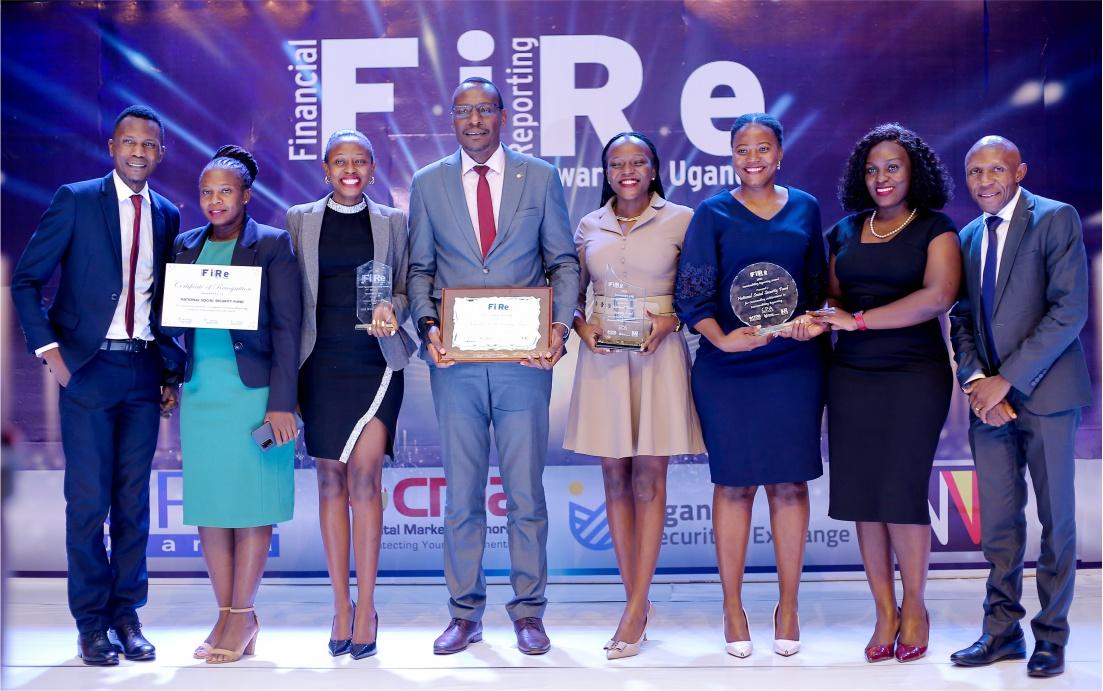


The Financial Reporting (FiRe)Award is the most prestigious and covetedAward in East Africa for financial reporting.The award is presented annually during a gala evening by the joint promoters; the Capital MarketsAuthority (CMA) Kenya, the Institute of Certified Public Accountants of Kenya (ICPAK), the Nairobi Securities Exchange (NSE) the Public-Sector Accounting Standards Board-Kenya (PSASB) and the Retirement BenefitsAuthority (RBA).
Our Board governs the integrated report process, with a dedicated IRTeam led by the CFO. Information is gathered from Board and committee meetings, financial data, and non-financial reports. Drafts undergo rigorous review by a specialised forum before reaching the Executive Committee and Board for approval. TheAudit and RiskAssurance Committee ensures report integrity through internal and external audits, verifying the accuracy of information presented.This includes oversight of work performed by independent service providers.
Ensuring report integrity and credibility
NSSF prioritises the accuracy, completeness, and fair representation of information within our integrated report. This is achieved through a multi-layered approach:
Ÿ Robust systems and controls: We implement strong internal controls and procedures that emphasise diverse input sources, verification processes, and the use of reputable data.
Ÿ Subject matter expertise: Dedicated teams of internal and external experts, including auditors and various committees, contribute to content creation and thorough review.
Ÿ Board oversight: The Board plays a critical role in overseeing the entire preparation process.They approve the process itself, determine materiality, set the report's scope, and conduct a final review and approval of content.
The Board, supported by its committees, is ultimately responsible for the report's integrity They confirm the information is accurate, comprehensive, and fairly reflects NSSF's material matters, adhering to the Integrated Reporting Framework. The 2024 annual Integrated Report was approved by the Board on 26 September 2024, with all material events up to that point included.
The National Social Security Fund (NSSF) has experienced remarkable growth over the years, positioning itself as the largest social security fund in EastAfrica with an asset base of UGX 22.13Tn.This success is not solely attributed to internal efforts but is also a reflection of the prosperity of our members and stakeholders.
Every new day brings with it emerging needs from our membership, ranging from personal business challenges to shifts in the economic landscape and the global arena.These evolving needs present significant opportunities for the Fund, emphasising the importance of providing solutions to address these challenges promptly.
"ANew Day" signifies our commitment to expanding social security coverage to more working Ugandans, aiming to deliver sustainable value to our members and stakeholders. By capitalising on the needs of our members and the opportunities presented by the NSSFAct Cap 230, we are developing strategies to enhance members' lives throughout their life journey and beyond retirement, while also driving long-term profitability for the Fund.
We are achieving this through investing in innovations and forming strategic partnerships that aim to improve members' capacity and willingness to save.These initiatives reflect our commitment to creating shared value for sustainable growth.
The future 50:50:95
As we approach the end of our current 10-year strategic period, our passion and ambition continue to grow. Looking ahead to the next 10-year strategic period up to 2035, our vision is to make NSSF a Fund for everyone. We aim to extend our services to 50% of the country's labour force and increase our asset base to UGX 50 trillion by 2035. We strive to achieve a 95% stakeholder satisfaction rating.
commitment
Dr. David Ogong
Patrick
Ayota CHAIRMAN,
BOARD OF DIRECTORS from 1 September 2024
MANAGING DIRECTOR
We are dedicated to building strong connections with our customers and the public by offering valuable experiences in all our interactions and services, making saving a fundamental aspect of life. Inspired by innovation, reliability, and a forwardthinking vision, we strive to remain relevant and beneficial to all our stakeholders.

Throughout this report, we use the following navigational icons to show the interconnectivity between core concepts and the various sections of this report. Working together and separately, these elements have the potential to impact (positive and negative) our ability to create value over the short, medium, and long term.
Our financial, human, manufactured, intellectual, social and relationship and natural capitals facilitate every aspect of our business and our ability to create long-term value.
We have accordingly defined our structure, activities, and performance against our strategy in this report in terms of these six capitals.
The 6 Capitals
INTELLECTUAL
This tackles how we manage the Fund responsibly and in a profitable manner We do this by making prudent investment decisions from our members contributions and competitive investment returns, which enable us to sustainably grow our assets and the members' Fund.
This resides in our employees, who are also members of the Fund and have a strong alignment with the rest of the NSSF members. In addition, the ability to attract, develop, enable, and retain the best talent is one of the Fund's top objectives. We aim to create an exciting and vibrant work environment and we work continuously to provide our people with attractive career paths that will make them experts in their fields.
This lies in the Fund's reputation. Institutional knowledge and experience are intangible assets that have been built over time and have instilled confidence in us among our stakeholders and in Uganda at large.
MANUFACTURED
This comprises our governance, business processes, building infrastructure, leading systems as well as our investment in information technology infrastructure and innovation that together enable us to manage the organisation in a prudent and professional manner
We are dependant on the form of capital available
Strategic objectives
How we use them
NATURAL
This is the effect of our operations on the environment and the sustainable development goals.
Material matters are those issues that could affect our ability to create value in the short, medium, and long term
SOCIAL& RELATIONSHIP
This comprises the relationships and collaborations we have with our key stakeholdersour members, employees, suppliers, communities, the Board, the Ministry of Finance, the Ministry of Gender, Labour, and Social Development and our regulator URBRA. VALUE-ADDING ACTIVITIES INPUTS OUTPUTSAND OUTCOMES
Our impact on them and the value we deliver
We have prioritised stakeholder issues according to their economic, environmental, social, and financial impact as guided by the GRI reporting framework and have adopted the Global Reporting Initiative's (GRI Standards (2016) (GRI) for purposes of this report.
See our GRI Report as at 30 June 2024
GRI supports the UN (United Nations) 2030 Sustainable Development Goals (SDGs), and our report demonstrates that the activities undertaken by the Fund contribute to the objectives of the SDGs. Our business activities are geared to have a positive impact on people, the planet and prosperity
Last year, the Fund conducted a comprehensive baseline assessment of all key strategic initiatives.This involved detailed research and analysis to evaluate our current practices, identify areas for improvement, and assess our progress against various frameworks, such as the UN Sustainable Development Goals (SDGs).As a result, we have aligned and prioritised specific SDGs, focusing on integrating sustainability into our overall strategy and financial reporting.
The Fund contributes to the following 7 SDGs:

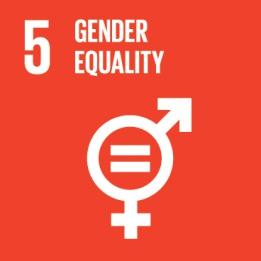
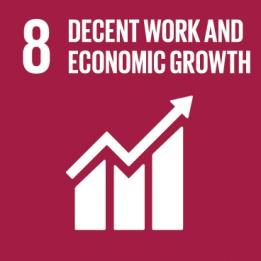

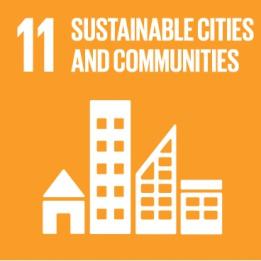
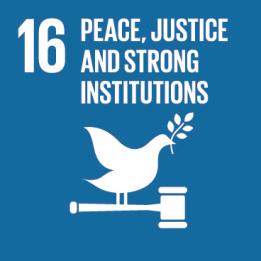


“Through a clear social purpose, we aim to create long-term sustained value underpinned by sound ESG principles”
Dr.
Peter Kimbowa - CHAIRMAN, BOARD OF DIRECTORS
“Building on the momentum of "A New Day - creating shared value for sustainable growth'," our 2024 Integrated Report theme emphasises our commitment to creating shared value not just for financial security, but for a sustainable future. We acknowledge the stark realities of climate change and environmental degradation. As responsible stewards, NSSF goes beyond financial security, aiming to create a thriving social and environmental ecosystem for all Ugandans.”
Dr. Peter Kimbowa, Chairman, Board of Directors

The Fund's FY2024 performance has been truly exceptional.Assets under management reached an impressive UGX 22.13Tn, while the number of Fund members increased by 9% and contributions grew by 13%.This achievement comes despite facing six investigations over eight months.The team's resilience and recovery are a source of immense pride for the Board. We have not only achieved but surpassed most of our set milestones. While we celebrate these successes, we must remain vigilant against potential disruptors to our business model.
The Board and our entire team are committed to staying ahead of any challenges.The Fund is proactively preparing for the future.Adedicated team is actively engaged in scenario building and horizon scanning.This proactive approach will enable us to identify and pre-empt potential threats, ensuring the Fund's continued success. Vision 2035 will also foster a culture of excellence and execution, continuously challenging us to improve.
At NSSF, we prioritise purpose over profits or dividends. Uganda is transitioning from a primitive economy to a modern and prosperous one.The key question will be what value is the Fund bringing to the country?This provides NSSF an opportunity to play a central role in this transformation, contributing meaningfully to the UN Sustainable Development Goals (SDGs).
We are rallying all our stakeholders including partners, regulators, and the public into a common line of sight. NSSF aims to:

We strive to process benefits within hours, even though our current target is one day as outlined in Vision 2035.
We aspire to lead in ESG and sustainability; benchmarking ourselves against international frameworks such as Global Reporting Initiative (GRI) and SustainabilityAccounting Standards Board (SASB), and target to win several global accolades related to this. Our strategies are integrated with robust frameworks to achieve these goals.
The Fund's purpose remains to make lives better by passionately dedicating ourselves to making saving a way of life to enable more and more people improve their wellbeing.
In today's world, it is imperative to develop the ability to use the resources available on our planet for our needs while being conscious that future generations should also be able to thrive. Our generation has been a poor steward of the planet, as we now face not just global warming but global melting. InAfrica, particularly East Africa, the Congo basin with its 300 million hectares of forest provides significant carbon sequestration, yet deforestation rates of one million hectares per year are alarming. In Kampala, the volume of air pollutants is ten times the global average, and only a small percentage of the 600 tonnes of plastic waste generated daily is disposed of properly
The Fund remains ambitious and is committed to leveraging its great pool of talent to continue maximising contributions and earnings to create broad based value over a long-term period. Our commitment is to place people at the centre of corporate purpose, fostering a green environment, green technology, and green skills. This dedication aligns with our Vision 2035, signaling our commitment to a new dawn. NSSF is dedicated to empowering future generations to thrive in a greener, more prosperous future.





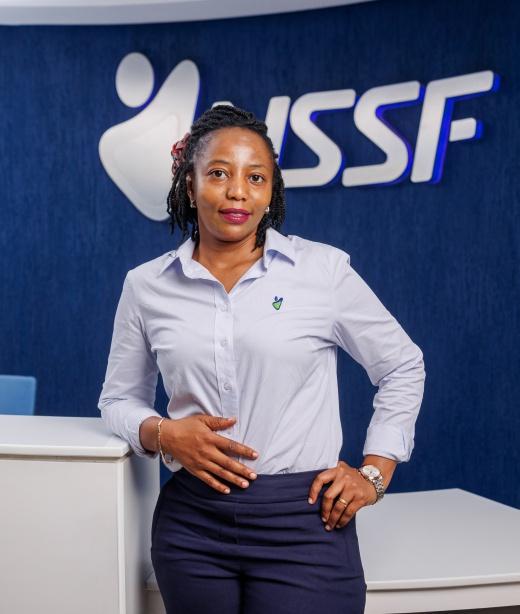
Over the next 12 months, I see opportunity for the Board, the regulator, principal supervisors; Minister of Gender Labour & Social Development as well as the Minister of Finance, Planning and Economic Development and management to achieve five major pillars;
1. Grow the asset portfolio Diversify our assets under management to drive growth.
2. Utilise data analytics, digital channels andAI Use technology to enhance member satisfaction, understanding their concerns and needs, and building a broad basket of benefits.
3. Accelerate efficiency: Leverage technology and data analytics to improve turnaround time on benefit payouts and dispute resolution.
4. Maintain employee satisfaction: Foster a culture of continuous learning and introduce a new concept of “uncommon valor – the courage to experiment, inquire and discover new possibilities.”
5. Champion sustainability and ESG in Uganda: Lead national efforts in sustainability and ESG, integrating these principles into our core strategy.
I express infinite gratitude to the Fund supervisors, and my fellow Board members for their guidance, continued support and collaboration. In addition, and on behalf of the Board of Directors, I extend my gratitude to the Fund's employees and the ManagementTeam for their unwavering dedication and hard work.TheTeam's resilience and commitment have been instrumental in driving the Fund's success and progress towards our strategic goals.
Finally, to our valued members, you remain at the heart of our endeavours. We are committed to being your social security provider of choice, and we will continue to strive for excellence in serving your needs and ensuring your future security.
“The past year stood out as one of resilience, determination, and remarkable performance. Despite the intrusive months of rigorous public investigation inquiry, we emerged from a challenging year even stronger. Our strong governance prevailed and sustained us. Member trust in NSSF remained steadfast. Demonstrating our members' unwavering faith in us, contributions and enrolments increased. The Fund grew by almost UGX 4Tn, underscoring the strength of our strategy.
This resilience gives us the foundation to lay out our strategy for Vision 2035. We are thinking bigger and bolder not only to solve today's problems; but to invest in solutions for a better tomorrow, for our members and for Uganda.”
Mr Patrick MAyota - Managing Director
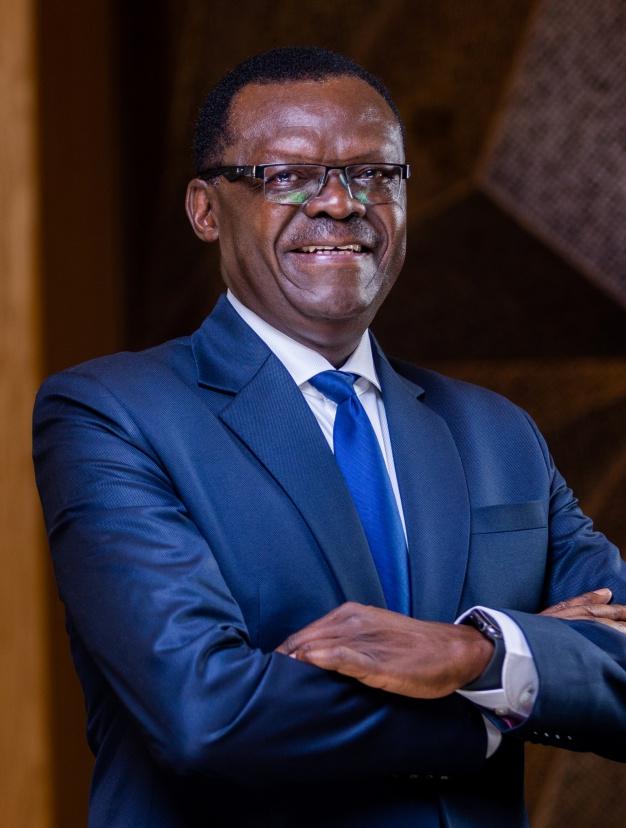
As we reflect on the past year, I am proud to share that the Fund has navigated through a period of both challenges and opportunities with resilience and strategic foresight. Our commitment to innovation, excellence, and sustainability has been the cornerstone of our success, and I am pleased to report that we have achieved significant milestones in alignment with our long-term vision.The Fund has continued to earn the goodwill of our valued members and stakeholders. Our reputation and strength remain steadfast, attracting top talent and positioning ourselves as a leading organisation within the region.
During FY2023/24, amidst the challenging environment, the Fund registered very good performance in the following key financial areas:
• Fund'sAssets grew by 19% from UGX 18.6Tn in the previous year to UGX 22.13Tn, exceeding our 2025 target of UGX 20Tn
• Total realised income grew by 15% from UGX 2.2Tn to UGX 2.5Tn, mainly driven by interest income
• Dividend income earned in the year grew by 21% from UGX 145Bn in the previous year to UGX 175Bn
• Contributions collected in the year grew by 13% from UGX 1.72Tn in the previous year to UGX 1.93Tn
This performance is a clear testament to the trust and confidence that our members continue to place in the Fund.
Dr. Peter Kimbowa CHAIRMAN, BOARD OF DIRECTORS


Building upon our 2025 strategy, we have set ambitious targets for the next decade. Central to our strategy is an active role in the daily lives of young Ugandans, especially in the areas of agriculture and job creation. By promoting a culture of saving and enhancing the capacity to save, we aim to empower Ugandans to achieve greater financial security and prosperity. For 2035 we envision:
As the Fund matures, more and more members will qualify to take their benefits, which will eventually exceed contributions.The Fund, therefore, must widen its coverage to attract new members. Currently, our coverage is at 11% of Uganda's working population. We aim to expand this to 50%, reaching 15 million members. We aim to reach a significant portion of the eligible workforce, particularly within the informal sector.
While our investment portfolio remains resilient, it faces global and local headwinds. We are focused on innovative growth strategies that align with national priorities in infrastructure development and industrialisation. We aim to grow the Fund to UGX 50Tn.
Satisfaction Rate - 95%
Our goal is to create value for all stakeholders—members, employees, government, and the public. We aim for an engagement and satisfaction rate of 95% as we roll out new initiatives including financial education, job creation programmes, and co-investments in priority economic sectors.
As we enter a new decade, we must rethink and innovate our investment approaches to address long-term societal issues like unemployment. Our Hi-Innovator Programme has successfully created over 12000 jobs and led to new contributions of UGX 530M in savings. By supporting entrepreneurs and focussing on long-term investments, we not only help solve societal issues, but also stimulate economic growth, and environmental sustainability. Our specialised and female focussed entrepreneurial programs promote gender parity
We are enhancing our in-house capabilities, nurturing talent, and driving technological innovation. Our internally developed Smart Life product is expanding our value proposition to meet short- to medium-term savings needs. We have also established a dedicated department to explore partnerships, further supporting our Vision 2035 initiatives. By ensuring a smooth transition from Strategy 2025 to Vision 2035, we are committed to making lives better through meaningful and purposeful actions.


We have seamlessly integrated ESG principles into our operations, solidifying our dedication to environmental, social, and governance responsibility. We understand that sustainability is crucial for the long-term success of the Fund and our society. Our initiatives align with SDG 8 (decent work and economic growth), SDG 1 (no poverty), SDG 5 (gender equality) and SDG 2 (zero hunger). We are actively involved in programmes that enhance financial literacy and create economic opportunities, particularly in agriculture.
Our emphasis is that sustainability is about building a strong organisation with longevity and prosperity while being a good corporate citizen. Our efforts are not just about ticking boxes; they are about genuinely making a difference for our planet, our place and our people.
In pursuit of our ambitious Vision 2035, we acknowledge the necessity of evolving our organisational culture. We are currently charting a roadmap to transition from our current state to our desired future.This initiative aims to enhance our agility, foster innovation, and ensure that every team member aligns with our vision and values.
As we pivot from Strategy 2025 to Vision 2035, our purpose remains clear: making savings a way of life and building a prosperous future for Uganda. We are mindful of our role in driving the country's development and growth agendas. By increasing domestic savings, we can significantly impact Uganda's economic stability. With Uganda's long term domestic savings currently at 11% of GDP, we aspire to reach levels similar to those ofAsian countries, which save at least 30% of GDP
Exciting prospects include designing affordable housing using advanced technology. We aim to collaborate with other relevant partners to offer affordable healthcare insurance, ensuring access to basic healthcare for all.Additionally, we plan to work with key stakeholders to advocate for modifications to Uganda's trust laws, which have been unchanged since 1949. We expect these efforts will lead to substantial advancements.
I extend my heartfelt gratitude to the Supervising Ministers, Chairman, members of the board of directors, and all stakeholders for their unwavering support. Special thanks to the ExecutiveTeam and NSSF employees for their hard work, dedication and commitment.Together, we are steadfast in our mission to make NSSF the Social Security Provider of Choice.
Patrick MAyota MANAGING DIRECTOR



The National Social Security Fund (NSSF) is the leading provident fund in Uganda, established to provide financial security for workers in the private sector

Legal foundation NSSF was established by the National Social Security FundAct, Cap 230 (Laws of Uganda).
Regulation
The Ministry of Gender, Labour and Social Development and the Ministry of Finance, Planning and Economic Development are jointly charged with the oversight of the Fund.Additionally, we are regulated by the Uganda Retirement Benefits Regulatory Authority (URBRA), as applicable.
Coverage We cover all private sector workers, regardless of company size or employee count.
· Contributory scheme: NSSF is funded by mandatory contributions from both employees (5% of gross monthly salary) and employers (10% of employee's gross monthly salary).
· Voluntary contributions: We accept voluntary contributions from selfemployed persons and allow members to make additional contributions (top-ups) on their mandatory savings.
· Investment and returns: Member contributions are invested, and we provide annual returns in the form of interest to our members.
· Benefit processing: We process and pay out prescribed benefits to qualifying members, such as retirement benefits, withdrawal benefits, exempted employment benefit, invalidity or emigration, and survivor benefits.

NSSF has grown significantly, becoming EastAfrica's largest social security fund with assets totalling UGX 22.13Tn.This success embodies our integrated report theme, "ANew Day - Creating Shared Value for Sustainable Growth," reflecting our belief in shared prosperity with members and stakeholders.
Each day brings new challenges for our members, from personal business issues to shifts in the economic landscape.These evolving needs emphasise the importance of prompt solutions.
A“New Day" signifies our commitment to broadening social security coverage and delivering sustainable value to more working Ugandans. We leverage member needs and opportunities from theAmendmentAct to develop strategies that enhance lives and drive long-term profitability. Our approach involves investing in innovations, forming strategic partnerships, increasing membership outreach, boosting financial literacy, and offering innovative products and services tailored to evolving needs.


Lira Plot No.43
Bazar Road
P. O. Box 406, Lira
Gulu Plot No. 23
Andrea Olal Road (OppositeTotal)
P.O. Box 730, Gulu
Arua
Plot No. 49
MLPlaza,Adumi Road
P.O. Box 418,Arua
Hoima
Plot No. 33
Lusaka, Hoima-Kampala Road (Next to Messiah Clinic)
Masindi
Plot No. 17/19
Port Road (Opposite Masindi Court)
P.O. Box 199, Masindi
Mbale
Plot No.1, Oval Plaza
Court Road
P. O. Box 1574, Mbale
Moroto
Plot 24
Lia Road
Tororo
Plot No. 8A
Uhuru Drive
P. O. Box 1574, Mbale
Fort Portal
Plot No. 1
Maliba Road
Soroti
CellA
Central Ward, Eastern Division
Soroti City
Jinja
Ground Floor
Jinja City House
Lubas Road
Mukono
Plot No 3A
BishopTucker Road
Central BusinessArea
Mukono
Kampala
Bugolobi
Mbarara 1st Floor
Mbarara City House
Ishaka Plot No. 112
Block 14
Bushenyi-Ishaka Municipality
Masaka
Plot No.21
EdwardAvenue
P. O. Box 1290, Masaka
Kabale Plot No. 91-95
Mbarara Road
P. O. Box 203, Kabale
City Branch Ground floor
Workers House Plot No.1
Pilkington Road
P.O. Box 7140
Kampala
Acacia
Ground FloorAcacia Mall
John BabiihaAvenue
Kisementi
1st Floor Village Mall
Bugolobi
Plot 7-9
LuthuliAvenue
Bakuli Plot No. 719
SirApollo Kagwa Road
K Hotel Building
Entebbe
Entebbe Imperial Mall
Plot M79
LugardAvenue
Kampala-Entebbe Road
Our Purpose
Our purpose is to make lives better. We passionately dedicate ourselves to making saving a way of
to enable more and more people to improve their
Our Vision
To be the social security provider of choice.
Our Mission
To be a relevant partner to our members through continuous innovation in provision of social

Innovation
We are a robust organisation that is always looking for new ways of delivering value to our members.
Customer
We are committed to achieving higher levels of customer satisfaction through continuous improvement in our services.
Efficiency
We promise to continuously collaborate with stakeholders to discover and apply safer, better, faster, and more cost-efficient ways to provide services that our customers value.
Integrity
We commit to be ethical and honest to inspire trust by matching our words to our actions.
We are committed to developing and maintaining healthy internal relations that harnesses respect, positive attitude, and open mindedness in order to meet the demands of our customers.

“The year ended June 2024 will be remembered for our strong focus on creating value for members. We launched the Yo Benefits Campaign, targeting members eligible for age-related benefits, to support them in making prudent financial decisions. Collaborating with our Investments Department and experienced financial and retirement advisors, we pushed beyond traditional retirement benefits, addressing the adequacy, sustainability, and predictability of social security benefits.”

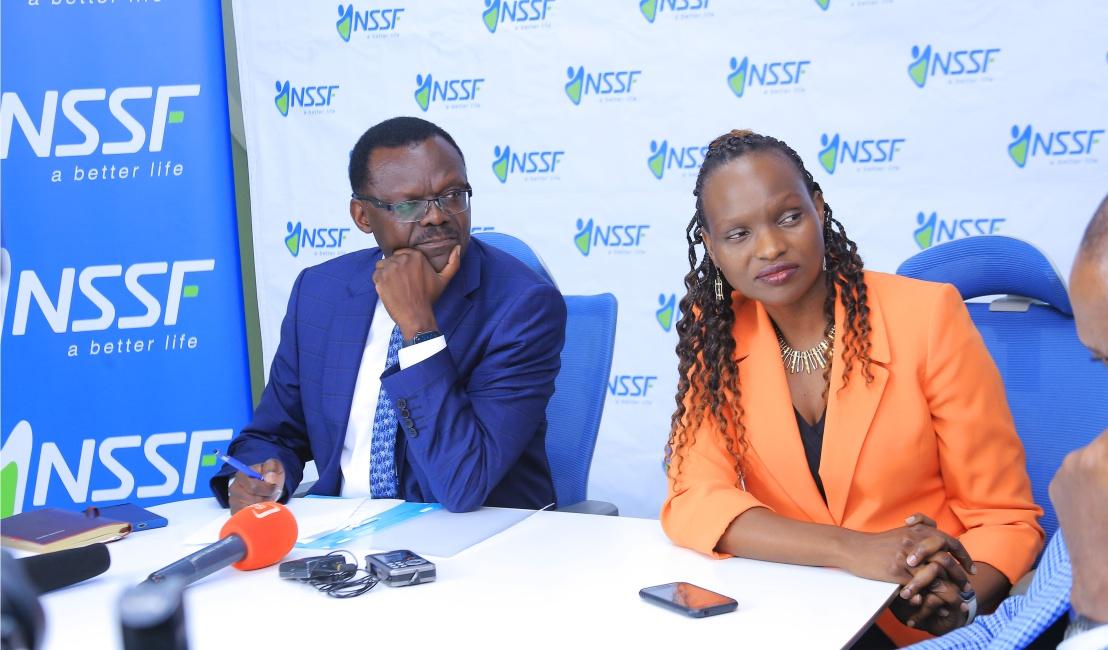
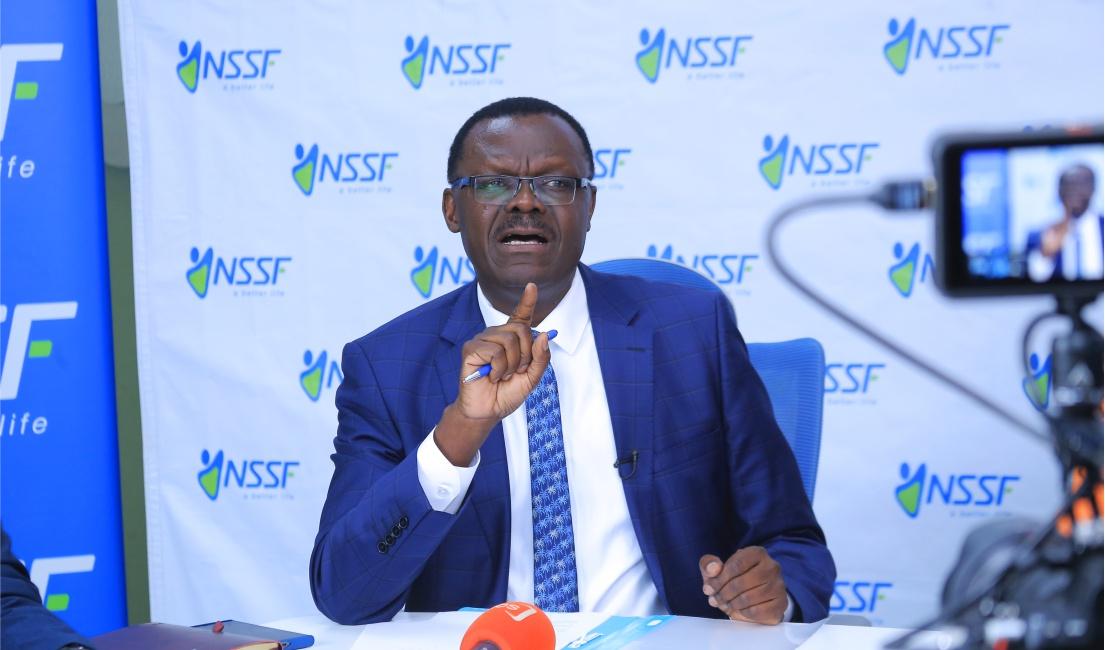
We introduced a new Whistleblower platform to empower members to report cases of noncompliance, thereby enhancing overall compliance and contributions, key to ensuring long-term security for our members. Additionally, we scaled ourAI-supported integration with partners like the Uganda RevenueAuthority, automating the generation of social security bills for employers.This initiative tackled under-declaration in employer remittances, creating additional value for our members.
Our initiatives contributed to impressive results across various areas, though we faced challenges in benefits turnaround time and voluntary contributions. Collections grew by 13%, reaching UGX 1.93Tn, compared to UGX 1.72Tn in the previous year Arrears and new registrations added UGX 157Bn, accounting for over 70% of the growth.Active members increased by 5%, from 734,000 to 771,000, with significant contributions from the Trade and Financial Services sectors.
We registered 8,374 employers compared to the 6,827 recorded the previous year accounting for 23% growth. We also registered 203,446 new members compared to the 180,802 registered in the previous year. 58% of the newly registered members made contributions.

Member engagement and financial advisory impact
Through theYo Benefits Campaign, we provided financial advisory services to over 12,000 members, leading to a notable shift toward drawdown plans and partial benefits.As a result, 1,069 members chose these options, retaining UGX 94Bn, a 56% retention rate.This effort also saw an increase in deferred benefits, with over 76,673 members deferring applications totalling UGX 1.01Tn, reflecting growing member confidence in the Fund.
While we made progress, the Fund's benefits payout time averaged 10.1 days, slightly above the 9-day target but an improvement from the previous year's 12 days. Voluntary contributions fell short at UGX 18.9Bn against a target of UGX 24Bn, due to delays in gazetting new regulations. However, we reduced unallocated member funds to UGX 49Bn, the lowest in over five years, demonstrating our commitment to resolving this issue.
As we move into the new year, our focus remains on member-centred initiatives that generate new value. We will continue to scaleAI-enabled integrations with new partners to improve compliance and contributions, leverage data analytics to identify compliance gaps, and expand our physical and electronic footprint to enhance member convenience. We are also committed to implementing an automated customer feedback solution for real-time member input, and further reducing benefits turnaround time.
As we reflect on the financial year 2023/2024, our commitment to creating shared value and driving sustainable growth has been central to our efforts.This year, we focused on building a future-ready workforce, revitalising our organisational culture, and expanding our reach through innovative products and structural adjustments in line with our new 10-year strategy
Over the past year, we focused on reskilling our employees to align with the Fund's strategic goals. We implemented several key training programmes to enhance skills across the Fund. Notably, the “Manager as a Coach” programme aimed to equip managers with essential coaching skills, improving their ability to guide and support their teams. Additionally, the Pathfinder CatalystAcademy was launched to empower our female employees with leadership skills, preparing them for future leadership roles and advancing the Fund's mission.
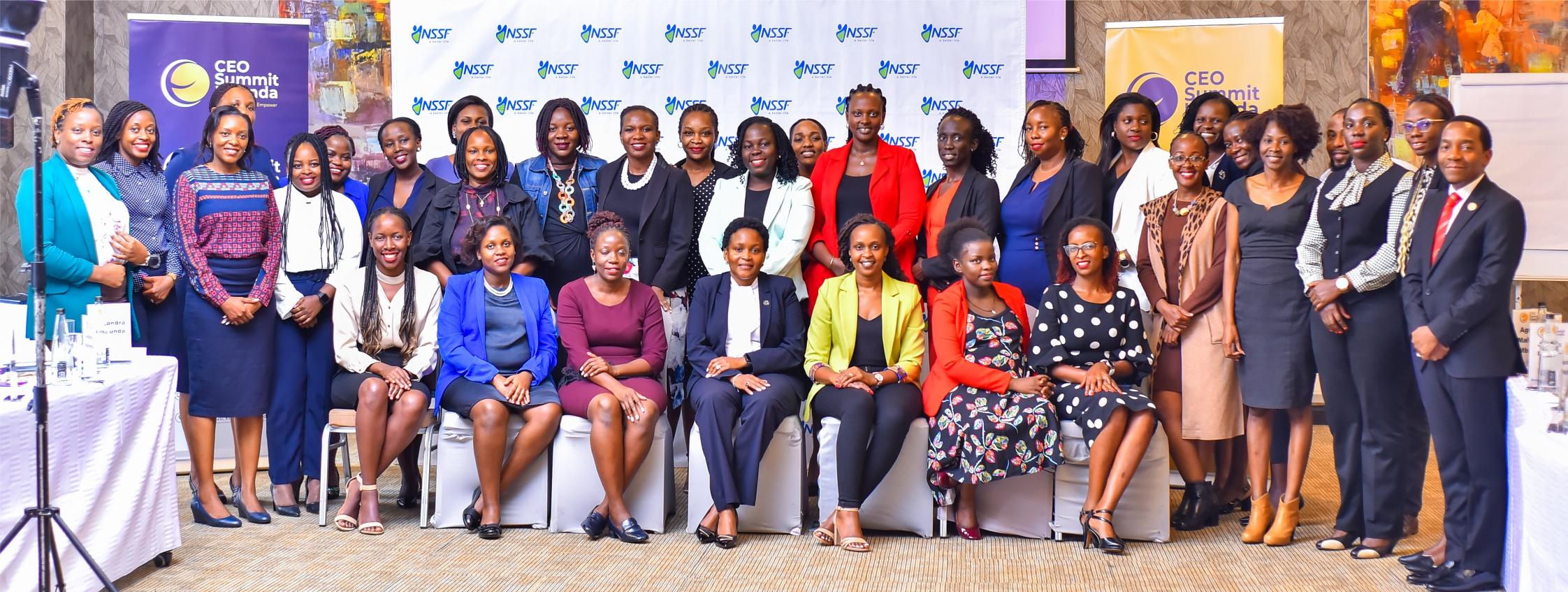
To stay relevant and aligned with the Fund's purpose, we continuously adapt to the evolving business environment.This year, we restructured to create a new department, Enterprise Growth and Development.This department's mandate focuses on expanding membership coverage to at least 50% of eligible Ugandans, with a particular emphasis on voluntary membership. Due to this strategic focus, which is essential for advancing our vision of extending services and achieving sustainable growth, the new department has created 41 new jobs.
Our commitment to encouraging voluntary savings remained strong with the continuation of the Smartlife product pilot among NSSF employees. Smartlife is instrumental in promoting a savings culture among our members, especially contributing to their financial well-being and the Fund's overall sustainability To date, a total of 183 staff have enrolled for the product.

Change is crucial for every organisation, including the Fund.At NSSF, we are committed to staying relevant to both our internal and external customers.This year, we launched "Project Ignite," a transformative cultural change programme aimed at rejuvenating our organisational culture and reaffirming our identity
To ensure broad representation and inclusivity, Heads of Departments selected members for the Project Ignite Committee.This diverse group brought a wide range of perspectives and ideas, helping to shape our cultural rejuvenation journey and ensure the programme's success.

In FY2023/24, the global economy continued to demonstrate resilience in navigating the enduring impact of the pandemic, the Russia - Ukraine conflict, and the resultant cost-of-living crisis. Despite disruptions to energy and food markets caused by geopolitical instability and aggressive monetary tightening to combat decades-high inflation, economic activity slowed but persisted.The ongoing effects of the Russia-Ukraine conflict, exacerbated by other geopolitical tensions like the Gaza conflict further complicated the global operating landscape. However, the IMF projects a steady decline in global inflation from 6.8% in 2023 to 5.9% in 2024 and 4.5% in 2025. Meanwhile, the global economy is forecast to maintain a growth rate of 3.2% throughout 2024 and 2025.
The Fund continues to face cost pressures due to global supply chain disruptions.These challenges are particularly pronounced in the Real Estate Portfolio where certain construction inputs are imported.Additionally, elevated energy prices, a lingering consequence of the Russia-Ukraine conflict, have contributed to increased operational and capital expenditures.
The Fund continually adjusts its budget and operations in response to escalating costs driven by global supply chain disruptions and rising energy prices.These measures have mitigated the immediate impact while a more comprehensive approach, including investment diversification, enhanced risk management, cost optimisation, and strategic partnerships with contractors and suppliers, is being implemented to minimise the impact.

According to the World Bank, Kenya's economy grew by 5.6% in FY2023/24, surpassing the previous year's growth rate of 4.9%.This growth was primarily driven by the agriculture, fishing, and forestry sectors. While projections indicate continued growth, averaging 5.3% in 2024 according to the IMF and World bank and 5.5% according to the National Treasury, the operating landscape remains uncertain.
Kenya's inflation has remained within the Central Bank of Kenya's target range of 2.5% to 7.5% due to a stronger shilling, reduced fuel and electricity prices, and the Central Bank's policy rate increases. While inflation is currently under control, the Central Bank maintains a cautious stance due to global inflationary pressures.
The Kenyan shilling recovered from the previous year, appreciating by 17.2% in the first half of 2024.This improvement was due to factors such as Eurobond buybacks, infrastructure bond issuance, and improved investor sentiment. However, underlying vulnerabilities, including a persistent current account deficit, and dwindling foreign exchange reserves, pose risks to currency stability Additionally, the government's fiscal position remains challenged by revenue collection targets, exacerbated by the withdrawal of the Finance Bill 2024.
Kenya is a significant market for the Fund, with its economic performance directly influencing investment returns.The shilling's appreciation positively impacted the Fund's portfolio for FY2023/24. However, recent unrest poses risks to future returns.
Our response
Kenya remains a key market for the Fund.To mitigate risks and capitalise on opportunities, we maintain close monitoring of the Kenyan economic landscape. Our investment strategy emphasises diversification across sectors and industries to enhance portfolio resilience.This approach enables us to navigate short-term volatilities while maintaining a long-term perspective.
Tanzania's economy has shown steady growth, with a 5.7% increase in 2024, driven by public and private investment. The country has maintained low inflation, which is a key strength. However, challenges persist, including foreign exchange liquidity shortages. While the Central Bank has taken steps to stabilise the economy, such as raising interest rates, the full impact of these measures is yet to be seen.The government's focus on infrastructure development and social spending aims to boost economic growth and improve living standards.
Tanzania's relatively stable macroeconomic environment is a positive factor for the Fund. However, foreign exchange liquidity constraints limit investment opportunities.
Our response
The Fund closely monitors theTanzanian market, seeking to capitalise on emerging opportunities.Adiversified investment approach and a long-term perspective are essential in navigating the market's challenges.
Uganda's economy grew by 6.0% in FY2023/24, driven by gains in agriculture, industry, and services.This momentum is projected to continue, with GDPestimated to grow by 6.4% in FY2024/25. While inflation moderated to an average of 3.0% in FY2023/24, the Bank of Uganda's maintenance of the Central Bank Rate (CBR) at 10.25% sinceApril 2024 reflects a cautious approach to managing inflationary pressures.Although current monetary conditions are deemed adequate to contain inflation around the medium-term target of 5%, the Central Bank remains vigilant given the projected increase to 5.4% in FY2024/25.
The Ugandan shilling, exhibited relative stability, appreciating by 1.7% quarter-on-quarter in June 2024, supported by factors including tight monetary policy, increased foreign inflows, and robust export performance. However, the currency's sustainability remains contingent on addressing the underlying current account imbalances.
The Fund's investments in Uganda are exposed to local economic conditions given that the Fund's largest portion of investments is held locally. Rising inflation poses a risk to the real return on the fixed income investments, while overall economic performance impacts the profitability of equity holdings.
The Fund employs a diversified investment strategy combined with a long-term perspective to mitigate short-term economic fluctuations and generate sustainable returns.
The National Social Security Fund (Amendment)Act, 2021, has yet to be fully implemented due to the pending subsidiary legislation.The conclusion of these regulations is crucial for the effective operationalisation of theAct's expanded scope.
Our response
As we await conclusion of the regulations, the Fund has proactively undertaken a comprehensive review and alignment of its business model, reorganised its structure to include a dedicated department for expanding social security coverage, and is developing innovative products to cater to the needs of the expanded beneficiary base.



Age 50s: Retirement in sight
• Focus: Pay off debt and increase retirement savings.
• Action: Invest in traditional and passive income tools like government bonds and insurance products. Plan how to enjoy your retirement.
You can access your retirement benefits
No matter your age, it is never too late or too early to save.Your financial needs and priorities will vary, but saving consistently is key. Here is a guide for each life stage:
Age 20s: Laying the foundation
• Focus: Start saving early, even if your income is low. Small amounts can grow significantly over time.
• Action: Save consistently and live within your means.
You can start saving for your retirement with NSSF from as young as 16 years old through
Age 30s: Setting priorities
• Focus: Grow your income and avoid withdrawing retirement savings. Preserve and invest wisely.
• Action: Use bonuses and promotions to boost retirement savings. Consider a 15-year mortgage for home financing to secure your home for retirement.
You can make your tomorrow better by enrolling on the NSSF voluntary savings programme
• Focus: Save aggressively, manage responsibilities, and create additional income streams.
• Action: Start another stream of income you can continue into retirement.
If you have been saving for at least 10 years and are 45 years old or older, you may access your midterm benefits of a sum not exceeding 20% of your accrued benefits
In addition, you can unlock your business potential - CLICK
Age 60+ and beyond: Embracing retirement
• Focus: Manage your money carefully to ensure sustainability
• Action: Invest in low-risk, short-term products for emergencies.
The Fund is in the process of developing short-term products which are now made possible through the NSSF Act Cap 230.
“Often when you think you’re at the end of something, you’re at the beginning of something else.” Fred Rogers

Aresilient entrepreneur, devoted wife, and mother of three, living in Seeta, Mukono District. Nakamya is the visionary behind Psalms One Enterprises Limited, a thriving business located on Nkrumah Road in Musana House, specialising in graphic design, printing corporate wear, and promotional items. Her journey with NSSF began in 2005, and it has been a pillar of support throughout her career transition and health challenges.
1. When did you start your saving journey with NSSF?

I began my savings journey with NSSF in 2005 while working for various companies, with Graphics Systems (U) Limited being my first employer. In 2019, I decided to start my own business. I withdrew my savings in 2021 under the Invalidity Benefits Scheme.
After starting my business in 2019, I decided to enrol in the NSSF Voluntary Programme and have been saving consistently since then.
When
commenced
I had mixed feelings at the beginning since I did not have much knowledge about savings. But because it was mandatory, my employer continued to remit my savings until those savings saved my life in 2021 when I got Covid-19.
It was the best thing that ever happened to me, and I had no doubt that the moment I started my own business, I would continue saving with NSSF
3. How did you utilise your retirement benefits?
In 2021, I contracted Covid-19 and was admitted to the ICU for three weeks, relying on oxygen. Everything around me had crumbled. While in the hospital, I overheard my neighbour listening to the news on her phone, where I learned that NSSF was providing invalidity benefits to its members battling Covid.
Unable to access a computer or my phone, I asked my husband to apply and submit a request for my benefits.A doctor later came to validate some of the required information, and within three days, all my benefits were deposited into my account.These funds arrived incredibly quickly and proved invaluable.They enabled me to access the necessary medication, which was expensive at the time, and also helped me treat the post-Covid side effects, aiding in my recovery
After I recovered, I used the remaining money to boost my business, which has since grown significantly. I am forever grateful for that support.
4. What message do you have for people struggling to save money or having challenges with managing their finances?
Initially, I believed that NSSF was only for those in formal employment, but you can contribute voluntarily even if you are self-employed.
Saving can be simplified by setting up a monthly standing order with your bank, which can be automatically remitted to your savings plan.
As you spend, make it a habit to set aside some money to secure your future and take care of your family. Consider short-term investments that can be easily liquidated in case of emergencies, such as medical expenses or school fees.
It is important to manage your debts wisely. Only take on debt that you can comfortably repay with your available disposable income.
5. What message do you have for people planning to withdraw their retirement benefits?
If you are still able to work and earn, avoid withdrawing your NSSF savings prematurely Your money is safe with NSSF. Consider enrolling in programmes like the voluntary savings plan, which allows you to continue saving even after the age of 55.
Before accessing your benefits, make sure you have a clear plan for how you will use them, particularly after retirement. Withdrawing your money in small amounts is less effective, as it may not be sufficient to invest in significant, rewarding projects. Instead, let your funds accumulate and earn interest, which you can access once you have a solid plan for how to use them.
The more you save, the greater your returns will be.
Avoid withdrawing your voluntary savings to pay off debts or cover school fees. Keep your retirement savings as a safety net for your family in case you are no longer able to work or provide for them. Ensure that your personal information in the NSSF system is up to date so that, in the event of an emergency, your survivors can easily access the benefits.
6. Having accessed your retirement benefits, what advice do you have for people saving or planning to start saving with NSSF?
With NSSF, your savings are secure and wisely invested to generate a good return in the form of interest.Take advantage of the upcoming voluntary products that align with your financial goals.
Think of saving as an essential emergency plan.These savings can be a lifeline in times of health issues or family challenges.
For business owners, NSSF offers certificates that are essential when applying for supplier bids, providing an additional benefit of being an NSSF member
In conclusion, I encourage everyone with dreams of enjoying a secure retirement to register through the selfregistration process on the NSSF website and start saving with NSSF for a better future.
Financial highlights
Asset size has significantly grown over the past five years posting a CAGR of 14% driven by investment capital expenditure that is undertaken from the increasing member contributions and income generated net benefits paid out.
Total income constitutes interest income, real estate income, dividends, share of results from associates and other income earned.This has grown by a CAGR of 21% over the past five years with the major contributor being treasury bonds invested over the East African Region.The sharp increase in FY2023/24 from FY2022/23 was due to unrealised foreign exchange and capital gains incurred on our regional investments.
Accumulated members' fund constitutes member contributions, interest credited to member accounts less benefits paid out.This has grown by a CAGR of 14% in the last five years driven by the growing member contributions, increasing interest credited to member accounts net of total benefits pay-outs.
Contributions from members have grown by a CAGR of 11% in the past five years driven by new members, employers' increased registration due to change in the legislation and the increased focus on growing voluntary membership in the past five years.
Benefits Turnaround Time (days)
The Fund's Cost ofAdministration largely reduced due to the Fund's cost saving mechanisms.
TheTurnaround time for benefit pay-outs was 10.1 days in FY2023/24.This was slightly better than previous year due to the improved internal processes in the delivery of services to members e.g. user experience of the pension administration system.
Benefits paid grew by a CAGR of 23% in the last five years.The spike in FY2021/22 and FY2022/23 was due to midterm benefit claims.The slight decrease in FY2023/24 is attributed to the reduction in traffic of the midterm claims.
Compliance for FY2023/24 closed at 57% as of 30 June 2024.This remained stable with the previous year's compliance rate.
NSSF received the Building and ConstructionAuthority (BCA) Green MarkAward certification for the Lubowa Housing Development.





business model
How we run our business
We create, preserve and defend value by using our resources responsibly to generate value maximising outputs and outcomes for our Members and all stakeholders.

•
Manufactured Capital
• Digital channel and innovation spend UGX 2.32Bn (June 2023: UGX 1.799Bn)
• Infrastructure spend (branches and contact centres) UGX 11.2Bn (June 2023: UGX 10.5Bn)
• Substantial investment in our EnterpriseArchitecture UGX 4.6Bn (June 2023: UGX 12.9Bn)
Trade-offs
• Increasing ITcapacity of building more resilient and agile ITsystems
Key inputs
• Tonality score of 92% (June 2023: 79%) • Customer satisfaction rate of 87% (June 2023: 85%)
• Retention of specialist skills (Data Science Specialists, Software Developers, and CFAs)
• Afocus on responsible procurement and supplier development
• Stakeholder engagement
• Focused and committed to corporate social investment
• Prioritising commitment to identified SDGs and responsible ESG practices
Key outcomes and outputs
• 91% of our member transactions and interactions were hosted digitally (June 2023: 92%)
• Uptime of application systems at 99.7% (June 2023: 99.3%)
• Employees efficiently working from home: 100%
• 2.34 million customers (June 2023: 2.26 million)
• Digital Index 74% (FY2023: 66%)
• Pay-out of benefits 10.1 days (2023: 11.9 days)
•
• Building more affordable houses for our stakeholders
Key outcomes and outputs
• Responsible corporate citizen and commitment to SDGs
• UGX 236.77Bn (June 2023: UGX 216.27Bn) direct and indirect tax contributions
• Buy Uganda Build Uganda (BUBU) (98.8% of procurements are with local suppliers) (June 2023: 99.9% )
• Financial literacy campaigns UGX 0.5Bn (June 2023: 0.37Bn)
• Employer Compliance 57% (June 2023: 57% )
• New membership 8%: (June 2023: 6%)
• 94% of customers who logged complaints were resolved at the first attempt (June 2023: 90%)
• Energy efficiency and management
• Ameaningful contribution to our environmental sustainability, aligned to the national, regional and global development goals
• Water conservation and waste management
Key outcomes and outputs
• 27% increase in water consumption (June 2023: 6%)
• 123% increase in energy consumption (June 2023: -28%)
• 5% reduction in paper consumption (June 2023: 15%)
• 100% of the waste from buildings diverted to KCCApipelines in line with City Council Solid Waste Management Ordinance of 2000
• Green certificates for PensionTowers and the Lubowa housing project
Apart from creating and preserving value, there are instances where value is diminished through our activities. When making decisions on how to manage our business, we consider the trade-offs between capitals: we aim to maximise positive outputs and outcomes and limit negative impacts.

How our outcomes have delivered value for our stakeholders, cont
The Fund maintains good relationships with supervisory regulators and a broad array of other policymakers. Our senior leaders and Board commit a significant amount of their time to meet with our regulators and policymakers, providing opportunities for us to understand their needs, expectations and priorities and to keep them informed about developments in our business
Responsible corporate citizen and commitment to SDGs; Taxes Paid (Direct & Indirect) spend of UGX 236.77Bn (June 2023: UGX 216.27Bn)
Compliance with regulatory requirements of the URBRAAct, 2011
processed using e-Government procurement system, and complied to the provisions of the PPDAamendedAct of 2023
100% of the waste from buildings diverted to KCCA pipelines in line with the City Council Solid Waste Management Ordinance of 2000
Water and waste handling, treatment, and disposal are conducted in accordance with regulations, as identified in Section 4.2, Global Environmental Health and Safety (GEHS), which guide water monitoring and management
Environmental ImpactAssessments by the National Environmental ManagementAuthority (NEMA) on all the Fund’s construction projects in compliance with Regulation 37 of the EnvironmentalAssessment Regulations, Statutory instrument No.13 of 1998





Our business model is designed to optimise capital inputs for the best possible outputs and outcomes for our stakeholders. While we strive to make decisions that serve our stakeholders' interests, we sometimes face tough choices that require strategic trade-offs to ensure future growth and resilience.
In addition to creating and preserving value, we recognise that some activities may diminish value. When managing our business, we carefully consider these trade-offs, aiming to maximise positive outcomes and minimise negative impacts.
The trade-offs that we have made during the reporting period and the rationale for our decisions are reflected below
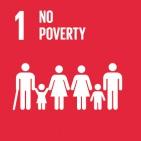
We manage the Fund's investments with the goal of achieving the highest possible long-term returns, guided by our Investment Policy Statement (IPS) and employing a range of strategies.The financial year 2023/24 was affected by unexpected global events, such as Russia's invasion of Ukraine and the global surge in inflation, which altered the economic outlook and affected investment performance.
Key actions
Since 2023/24, the EastAfrican region, particularly Kenya, faced a challenging economic environment, leading the Fund to adopt a more conservative portfolio strategy. Consequently, we did not fully capitalise on the market recovery by June 2024. However, improved investor confidence, spurred by Kenya's successful $1.5Bn Eurobond issuance and the settlement of the June 2024 Eurobond, drove a positive shift in performance. During the financial year, we invested UGX 892Bn in Kenya through treasury and infrastructure bonds, up from UGX 583Bn in 2022/23.
Looking ahead, the Fund is exploring opportunities in alternative investments, including the oil and gas sectors and major infrastructure projects within Uganda.These initiatives will help diversify our portfolio and mitigate some of the risks associated with our current investment exposure.
Trade-offs in our use of human capital
Contributed to the following SDGs

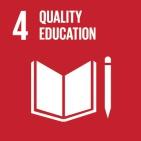
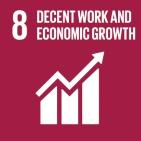
The organisational redesign involved trade-offs: aligning the organisational structure with the Fund's Strategy
To remain relevant and enhance our members' experience, we continuously adapt our business model to meet evolving needs.As part of this, we set up the new Enterprise and Growth department, tasked with expanding membership coverage to at least 50% of eligible Ugandans, with a focus on voluntary membership.
Key actions
The Fund undertook a comprehensive assessment and realignment of its business processes and employee structure to foster a more agile and skilled workforce. In line with the Board's commitment to job security, we will continue investing in reskilling programmes to address skill gaps and support employee transfers within the Fund.
Long term positive impact
• Increased productivity
• Increase in staff skills and agility
• Increased staff confidence
• Positive staff/member engagement and feedback
Short term negative impact
• Employee morale continues to be affected by the organisational redesign
• Organisational redesign negatively impacted workforce productivity
Material matters
2035
• Diversification of
investment portfolio, reducing overall investment risk
• Potential for higher long-term returns compared to a concentrated investment
• Expanding market opportunities
•

trade-offs impacting our capitals, cont
Trade-offs in our use of manufactured and financial capital
Contributed to the following SDGs
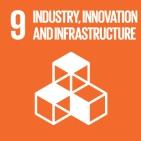
The trade-offs involved in increasing IT capacity revolve around the goal of building more resilient and agile IT systems.
The implementation of the Fund's PensionAdministration system, OctoPAS, as part of our digital acceleration strategy, has created many opportunities.These include the development of new products, which required extensive business process re-engineering and the introduction of new roles such as data scientists, business analysts, and data engineers, with a focus on testing and quality assurance.
Key actions
• Enhanced system performance and resolved issues by addressing the root causes, particularly in the Finance and Contribution modules
• Piloted the compliance module
• Set up a new OctoPAS environment (Sandbox) to enhance testing capabilities and improve the adoption success rate
• Implemented Dynatrace Monitoring to enhance oversight of web and internal applications, optimising performance, detecting issues more quickly, and minimising downtime
• More enhancements will be made in FY25, with ongoing implementation of user-submitted change requests
Long term positive impact
• Increased productivity and system performance through root cause analysis and advanced monitoring
• Increased system usability and improved customer experience within the new testing environment
• Increased system adoption through piloting new system functionalities
Short term negative impact
• Considerable time and effort is needed while focusing on root cause analysis and implementing new business requests
• Increased ITspending by improving current processes and providing ongoing support for OctoPAS will require increased investment

Trade-offs in our use of financial, social and relationship capital
Contributed to
The trade-offs of affordable houses: Building more affordable houses for our stakeholders.

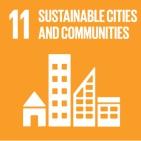
Real estate is a key part of our investment portfolio. Uganda faces a housing deficit of approximately two million homes, and constructing affordable, decent housing is still costly due to high infrastructure expenses, including land, roads, water, and electricity These fixed costs elevate real estate development expenses, affecting the final house price.
Despite the societal need for affordable housing, these challenges can affect the returns on real estate projects, and the total return which we aim to maintain at least 200 basis points above the 10-year average inflation for our members.
Key actions
During the financial year, the Fund made noteworthy progress on the construction of affordable housing inTemangalo. The feasibility study confirmed that the site will support affordable housing for middle- and lower-income segments.The project, which will eventually include 3,500 units, is progressing as planned. Phase one, featuring 550 units, is on track for completion by December 2025.
Long term positive impact
• Increased public confidence
• Future reduction in the housing deficit in the country
• Good gross return to members
Short term negative impact
• Increased cost of houses given increased basic infrastructure costs
matters

“The FY2024 was characterised by persistent geopolitical tensions that disrupted global economic recovery and intensified risk complexities. This evolving environment has introduced new challenges, impacted economic momentum and shaped a dynamic risk landscape. NSSF remains committed to proactive risk management and seizing opportunities to ensure the long-term security of our members.”
Edward Senyonjo, Chief Risk Officer

Balancing risk and return is crucial for success, as higher risks can yield greater rewards but also significant losses. We manage this delicate balance using our risk appetite framework, which has consistently supported our strong financial performance. We view risk management as integral to our operations and shared by all key stakeholders.This fosters a cohesive culture that enhances stakeholder value.
Risk appetite statement
"The Fund exercises prudence in pursuing opportunities, avoiding risks that could significantly erode member value or harm our reputation.”
This statement guides our decision-making, setting boundaries and establishing risk tolerance limits based on forwardlooking assumptions. We proactively assess risks before implementing new systems, products, or processes to ensure alignment with our risk appetite and minimise potential negative impacts on member value and reputation.
Party
Board of Directors
Audit & Risk Assurance Committee (ARC)
Executive Committee (EXCO)
Risk Management Committee (RMC)
Enterprise Risk Management (ERM) department
Risk Owners
Accountability
The Board oversees the Fund's overall risk management strategy, ensuring effective enterprise risk management and compliance with relevant policies, laws and regulations.
TheARC ensures the integrity of financial reporting, the effectiveness of internal controls, and compliance with policies, laws and regulations. It reviews risk reports from management and advises on the adequacy of the Fund's risk management strategy
Management handles risks and opportunities within the Board-approved risk appetite to create value, ensuring alignment with strategic objectives and effective risk management.
The RMC evaluates the effectiveness of the enterprise risk management strategy and activities, providing guidance to the Chief Risk Officer on managing risk exposures.
The ERM department is crucial in coordinating the risk management process across the Fund and delivering risk awareness training and sensitisation throughout the Fund.
Risk Owners are employees directly responsible for managing risks effectively by implementing actions to mitigate them.
Level or nature of risk that the Fund deems acceptable in pursuit of business objectives If the risk is within this area, it is within our risk appetite

Combined assurance
Combined assurance integrates activities across the three lines of defence, aligning with our business model and risk appetite.This strategic approach enhances risk management, mitigates risk exposures, and maximises opportunities for stakeholders in the medium and long term.
1st Line of Defence Operational Management
2
2nd Line of Defence Risk & Compliance
3
3rd Line of Defence InternalAudit

Despite starting the FY2023/24 with heightened regulatory compliance risks due to several investigative reviews by regulatory agencies, the Fund achieved strong performance, as reflected in the financial statements.The Fund's image, previously impacted by negative press, significantly improved from 56% in July 2023 to 93% by 30 June 2024, according to media tonality measurements. The NSSF risk landscape has been shaped by various global, regional, and local factors.
Global factors
The escalation of the Israel-Hamas conflict, which began with Hamas's attack on Israel on October 7, 2023, followed by Israel's extensive bombardment of Gaza, alongside the ongoing Russia-Ukraine war, is likely to disrupt the global oil and gas supply chain.This disruption is expected to lead to higher oil prices and contribute to increased global inflation.
Regional factors
During the period under review, the EastAfrican region experienced heightened geopolitical tensions, including escalating conflicts led by the M-23 andAllied Democratic Forces (ADF) in Eastern DRC.These conflicts disrupted trade among DRC, Rwanda, and Uganda and resulted in significant loss of life.Additionally, violent protests against the Finance Bill in Kenya in June 2024, which led to 23 deaths and property damage estimated at Kshs 2.4 billion, may deter foreign investors in the short to medium term.
EastAfrica is highly vulnerable to climate change, experiencing extreme weather such as heavy rains leading to flooding and prolonged dry spells causing water and food shortages.These conditions severely impact human and animal lives, especially children and the elderly
The CDP(Carbon Disclosure Project) 2024 report highlights significant flooding from intense seasonal monsoons and heavy rains in Kenya, Ethiopia, Uganda,Tanzania, Burundi, and Somalia.Approximately 1.6 million people were affected, with 473 fatalities and over 410,000 displaced by these extreme weather events.
Uganda, Kenya, and Ethiopia continue to host substantial numbers of refugees, particularly from conflict-affected regions like South Sudan, DRC, Somalia, and Eritrea.As of March 31, 2024, Uganda alone had 1,611,732 refugees, according to UNHCR statistics.
The influx of refugees strains the host countries' resources and complicates the delivery of essential services such as housing, education, and healthcare.
Economic growth reached 6% in the year, surpassing the previous year's 5.3% (Budget SpeechYear 2024/2025).This robust growth contributed to increased contributions to the NSSF from UGX1.72Tn in 2022/3 to UGX 1.93Tn 2023/4.
Inflation:
The low level of inflation enabled the Fund to improve its cost of administration from 1.03% in 2022/23 to 1.0% in 2023/24. Inflation remained low at an average of 3.2% in the 12 months to May 2024 (Budget speech FY2023/24).Annual headline inflation reduced from a peak of 10.7% in October 2022 to 3.6% in May 2024.
Interest rate:
Interest rates in the domestic market remained generally stable, averaging at 11.2% on the one-year government treasury bills. Interest rates on the 20-year, 15-year, 10-year and 5-year bonds averaged at 15.87%, 16.40%, 15.53% and 14.72%, respectively As a result, the Fund's interest income grew from UGX 2.04Tn in 2022/23 to UGX 2.24Tn in 2023/24.
Exchange rate:
The Uganda shilling depreciated against majority of the foreign currencies through most of the year and traded at an average of 3,771 against the USD.The depreciation of the UGX against the KES enabled the Fund to reverse the unrealised foreign currency losses registered in the previous year
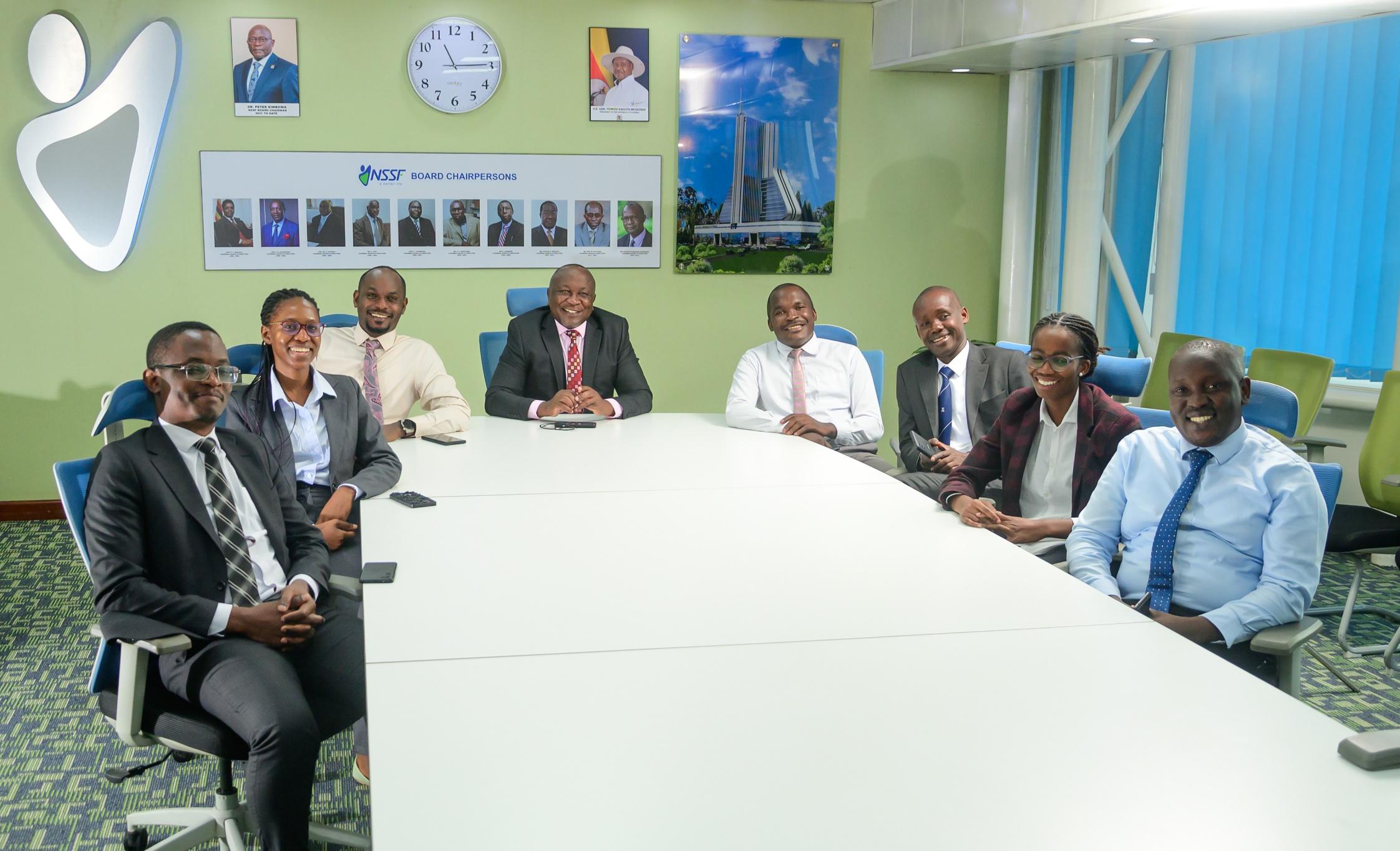
Embedding risk awareness culture
We believe effective risk management begins with awareness. Our comprehensive risk awareness programme includes face-to-face training and sensitisation for employees.
Additionally, we publish "The Risk Echo," a unique magazine dedicated to risk management topics.This publication features contributions from both internal and external experts and is the only one of its kind in the country
Read more on the NSSF website
We issue weekly bulletins to all staff with key advisories on managing various risks.This extensive risk awareness programme and proactive monitoring have led to 94% staff satisfaction with the Fund's risk management culture, as reported in a recent survey
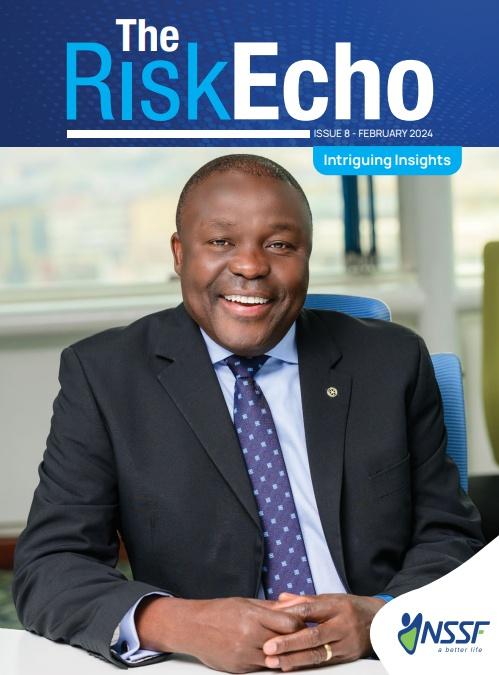
Knowledge transfer though benchmarking
In FY2023/24, NSSF was recognised as a benchmark for excellence in enterprise risk management. We hosted employees from NAPSA(Zambia), the Public Procurement and Disposal of PublicAssetsAuthority (Uganda), and the Uganda ElectricityTransmission Company (UETC) Ltd, who sought to learn from our practices.
The Fund operates a fully-fledged disaster recovery site with real-time data replication from our primary location at Workers House. However, merely having the site is not enough; it must be rigorously tested to ensure effective recovery during major incidents.
In June 2024, we conducted a comprehensive disaster recovery test, simulating a worst-case scenario where the primary site was assumed destroyed, and all operations shifted to the recovery site.The test results indicated that we met our target recovery time objectives for all critical systems.

This
Heatmap (severity and trend): 2022-23
Risk and mitigation
Currently, the Fund is engaged in real estate projects totalling approximately UGX 456Bn.These projects have faced construction delays and increased costs due to global inflation caused by the RussiaUkraine war. To mitigate this risk we are reviewing the performance of all contractors with a view to holding them accountable to agreed timelines.
Compliance risk arises from the complex landscape of laws affecting our operations, increasing the likelihood of non-compliance.
To manage this, we monitor legislative developments and maintain a comprehensive compliance framework with a zero-tolerance policy for non-compliance.
New laws and regulatory changes periodically heightens the risk of non-compliance, potentially leading to legal challenges.
Compliance with laws and regulations helps us avoid penalties and enhances transparency and accountability in our operations.
Capitals impacted Stakeholders impacted Material matters Strategic objectives impacted
Risk and mitigation
Operational risk is the risk of loss arising from inadequate or failed internal processes, people, and systems, or external events.To mitigate this risk, we have automated most of our processes and we ensure that our systems are robust.
Operational risk assessment helps identify and address process weaknesses proactively
Capitals impacted Stakeholders impacted Material matters Strategic
Appreciation of the UGX against foreign currencies, particularly the KES, which represents a significant portion of the Fund's foreign currency-denominated assets, results in unrelaised foreign exchange losses.
We minimise foreign exchange (FX) risk through allocation of more funds to the domestic market (About 63% of the portfolio).
Technology risks result in system malfunctions, which impact the operations of the Fund. We resolve system malfunctions by analysing root causes and implementing patches or reconfigurations to ensure reliability
This risk is expected to decrease with the implementation of a real-time monitoring tool that detects malfunctions and recommends corrective actions.
Despite the inherent high risk of financial crime, the Fund has robust internal control systems in place.
We expect this risk to rise as criminals use more sophisticated technology To counter this, we've strengthened our cybersecurity measures.
Opportunity
In the rare event of a financial crime incident, it provides an opportunity to review and strengthen the affected controls.
and mitigation
Liquidity risk was rated low, as the Fund enjoyed a strong liquidity position, as indicated by a net positive position of cash and cash equivalents as at 30/06/2024 - Refer to the statement of cash flows in theAFS.
Governance risk increased due to litigation over Mr. PatrickAyota's appointment as Managing Director. However, the Fund successfully defended his appointment in court, affirming his lawful status.
2035
The Board's term ends inAugust 2024.Any delay in appointing a new Board could create a governance gap.The Fund has informed the Minister to begin the appointment process.
The new Board will be crucial in guiding the Fund as it embarks on its strategic journey towards 2035.
Capitals impacted Stakeholders impacted Material matters Strategic objectives impacted
Astrong liquidity position allows the Fund to seize investment opportunities.
impacted Stakeholders impacted Material matters Strategic objectives impacted
and mitigation
Negative press from regulatory reviews and litigation over Mr. Patrick Ayota's appointment initially harmed the Fund's image at the start of FY 2023/24.
However, following the dismissal of the case, the Fund restored its credibility, as reflected in a rise in positive media coverage.
The expectation gap (i.e.The difference between the Fund's legal mandate and public expectations), frequently leads to negative perceptions.
The new stakeholder engagement framework enables the Fund to improve public engagement, bridging the expectation gap and addressing concerns more effectively
impacted Stakeholders impacted Material matters Strategic objectives impacted
Material matters are issues that could significantly impact our ability to create value in the short, medium, and long term. These matters influence our strategy, how we manage associated risks, and the opportunities we explore as a result.
The
Define the value creation process of the Fund. Clearly articulate how this value will be delivered over time.Assess materiality of matters and identify those that could threaten the ability of the organisation to deliver value.
Our materiality process has prioritised the following themes. While these themes do not differ significantly from those identified in FY2023, governance-related challenges involving investigations into the Fund following negative press from the Parliamentary probe, as well as investigations by theAuditor General and Inspector General of Government (IGG), have been adequately addressed (see risks 8 and 10 on page 33).
Anew material matter for the Fund is the strategic execution of Vision 2035, which is critical for NSSF's long-term viability (see material matter #2).
What it means to NSSF
NSSF faces persistent challenges in expanding its product range due to regulatory restrictions.These limitations hinder our ability to enhance our product offerings.
Short-term mitigation response
• The Fund is in the final stages of obtaining regulatory approval for new products, particularly in the voluntary savings space
• To address immediate and medium-term savings needs, NSSF has developed and piloted the Smart Life Savings Plan product
Opportunities and impact on the business model
Long-term mitigation response
• NSSF plans to roll out several new products in the medium and long term, aligning with our mission to promote savings as a lifelong habit
• Potential membership growth: Once the regulatory framework that supports the provision of our voluntary product offering is finalised, there is an opportunity to attract new members
• Increased outreach: New products are expected to expand membership, particularly among Ugandans in the informal sector, supporting our goal of making saving accessible to more people
Targets
• Accelerate delivery of value-adding products: Insurance Partnerships, UnitTrusts, Wealth Management
• Implement a new business model to enhance product and service offerings
• Roll out the Smart Life Savings Plan to promote voluntary savings

•
•
What it means to NSSF
The ambitious goals outlined in Vision 2035 are critical for NSSF's long-term viability As our membership base ages and accesses benefits, contributions may not keep pace, potentially impacting the Fund's and members' financial health.To ensure a sustainable future, we must focus on three key areas:
• Maximise contributions: By creating a willingness and capacity to save for our members
• Maximise earnings within our risk tolerance: Through creating a stream of alternative investments for the Fund
• Maximise value to members so they do not exit
• Establish and operationalise a dedicated department to develop partnerships with organisations that can support the informal sector
• Scale-up the successful Hi-Innovator programme, empowering a larger number of young entrepreneurs through financial support
• Define a clear roadmap to foster a culture of innovation and agility, aligning our employees with Vision 2035 goals
• Expand existing financial literacy initiatives to educate Ugandans on the importance of saving and responsible financial management
• Empowering farmers: Agriculture is a crucial sector for Uganda's development and NSSF's success. We will create programmes to:
- Improve market access: Connect farmers with reliable domestic and international markets to ensure fair prices for their produce
- Boost productivity: Provide resources and support to help farmers increase their yields and overall income
• Empowering rural women: Recognising their critical role in Uganda's economy, the Fund will develop initiatives to financially empower rural women
• Livelihood programme: Expanding our membership base by reaching grassroots communities within the informal sector
3. Global economic uncertainty
What it means to NSSF
The ongoing Russia-Ukraine conflict and the resulting global economic uncertainty pose a significant challenge.Additionally, the situation in some EastAfrican countries, including potential for renewed political unrest, adds to the overall uncertainty This volatile market environment could impact the performance of our investment portfolio, potentially leading to slower membership growth and contribution levels as economic downturns affect household income and willingness to save.
Short-term mitigation response
• The Fund is a long-term investor; hence our strategy is not to respond to short term market movement Long-term mitigation response
• Monitoring market variables and adjusting the portfolio mix to respond to the changing market environment
Opportunities and impact on the business model
•There is an opportunity to acquire stock at a cheap price for companies whose investment fundamentals are strong
•There is an opportunity to acquire assets at low prices as soon as there are indications of economic stability in Kenya Targets
•

NSSF has implemented a robust core pension system aimed at improving efficiency, enabling product innovation, and creating a seamless customer experience. However, maximising the system's potential and ensuring security requires a particular focus on:
• Automating manual processes (registration, collection, claims initiation) to ensure effective system use and faster member benefit payouts
• Increased automation creates efficiencies but introduces potential vulnerabilities to cyberattacks, requiring robust security measures
• Leveraging member data effectively for informed decision-making and improved member services
mitigation response
• We are rolling out an Enterprise Resource Planning (ERP) system to centralise data management and decision-making processes
• We continuously monitor our systems using advanced tools to quickly identify and resolve vulnerabilities.This proactive approach ensures a high-performing and secure environment for our members
• Developing a strategic roadmap for digitisation that aims to enhance our core system with advanced digital solutions, utilising our in-house talent
• NSSF places a high priority on continuous cybersecurity training for employees and conducts regular system testing and scenario analysis.These measures are aimed at enhancing the organisation's resilience against future cyber threats and technological disruptions
• Our ongoing digitisation efforts, which have led to the automation of several processes, have significantly improved the customer experience and expanded our coverage. Our members can now register from any part of the world at any time, making our services more accessible and convenient as reflected in our customer satisfaction score
• The implementation of new systems has enhanced our ability to serve customers globally, ensuring efficient and timely support regardless of their location, significantly reducing turnaround time for benefits payments
• The ERPdeployment will centralise data and decision-making, including the implementation of virtual customer service agents and language-based support to enhance customer interactions
• We are developing a robust internal compliance module to ensure adherence to regulatory requirements and enhance overall system integrity
• We will introduce new value-driven features and improvements within OctoPAS, leveraging our internal expertise
7

Introduction
FY2024/25 marks a pivotal year for the Fund. We will be concluding our 10-year strategic plan, endorsed by the Board in 2015, and embarking on a new transformative journey that will shape the business through 2035.Astrategic plan is not merely an expression of intent—it is a commitment that holds the Board and Management accountable, serving as a cornerstone of sound corporate governance.
As we reflect on our journey since 2015, it is important to revisit the core principles that guided our strategic vision:
1. Preserve the value of members' savings
2. Simplify services through accessible and seamless channels
3. Empower members through innovative products

As we close this chapter and prepare for the future, we remain steadfast in our commitment to these foundational goals.
Did we fulfil our intentions?
Here is the scorecard.
Preserve Value - Sustain a return on member savings that is at least 2% above the 10-year moving average rate of inflation.
Simplify service through ubiquitous and seamless channels - In 2015, over 70% of our members were served through a physical channel. Covid-19 changed the narrative.The pandemic presented a catalytic opportunity to transform our service offering to the point that digital is now the default service channel.

Today, 90% of our major services are conducted through digital channels, a significant achievement considering where we started in 2015. Back then, we processed 15,000 benefit claims. Fast forward to 2023, and the Fund has processed over 40,000 claims, disbursing UGX 1.1Tn - most of which was facilitated through our digital platforms.
Empower members through innovative products -The Fund's traditional mandate has been to offer a basic retirement package. However, in 2015, the Board challenged us to think beyond this. We committed to becoming a “relevant partner” in our members' journey to economic security. Our financial literacy programme is a key initiative in this mission, and we recognised that innovation is crucial in empowering our members.
To this end, we developed an innovation strategy focused on transforming members' lifestyles through saving. By engaging with communities and co-creating value within these ecosystems, we have launched initiatives like Hi-Innovator, which supports start-ups and creates employment, expanding our membership base.
Additionally, we advocated for amending the NSSFAct to introduce new benefits addressing social security needs before retirement, leading to the creation of the Mid-termAccess (MTA) benefit.
The impact of MTAis clear; we nearly doubled the benefits paid in 2024 (43,000) compared to 28,000 in 2021. Initially introduced to help members cope with the adverse effects of the Covid-19 pandemic, MTAhas become a mainstream benefit. However, members are now seeking more from the Fund, with affordable housing and medical insurance among their top demands.
This aligns with the Managing Director's Vision 2035 commitments. Our new strategic intent focuses on sustainability and shared value, positioning the Fund as a catalyst for Uganda's sustainable transformation.This vision is guided by three key metrics: 50%, 50 trillion, and 95% (50,50 95).
The Fund is a vital national institution, with a diverse range of stakeholders-starting with our people. Investing in their future is essential for our long-term sustainability. Our people strategy is built on key pillars: skills development, diversity, wellness, and fair pay This foundation supports a customer-centric business, enabling us to develop products and services that resonate with our members and the public. The success of the Fund is of public interest, especially in a country where 42% of the population lives in poverty As a responsible institution, we are committed to closing the equity gap by creating jobs through responsible investing, entrepreneurship support, and financial literacy initiatives.
Uganda's active labour force, currently at 17 million, is projected to reach 30 million by 2035.Yet, less than 10% of the workforce currently accesses our services. With 50% of the population under 18, fostering a culture of longterm saving is crucial to prevent widespread old-age poverty. Over the next 10 years, we aim to expand our membership from 2 million to 15 million, covering 50% of the workforce. Our strategy includes investing in strategic agricultural value chains to boost the earnings of 4 million farmers, who will then become active NSSF members.
We recognise the need to diversify our investment portfolio, especially given our current exposure to government bonds and the evolving economic landscape. While prioritising safety and returns, the Fund will leverage its balance sheet over the next 10 years to attract private capital into strategic sectors of the economy.
The Government aims to grow GDPfrom USD 55 billion to USD 500 billion in this period, with a significant portion driven by infrastructure investment. However, relying solely on government borrowing (with a current debt-to-GDPratio of 49%) is unsustainable.To achieve these goals, Uganda must adopt innovative financing models like Public-Private Partnerships (PPPs). NSSF will use its balance sheet and investment expertise to position Uganda as a prime destination for PPPs, ensuring sustainable double-digit returns for our members.
Our impact
50,50 95 encapsulates our sustainability strategy and intent over the next 10 years. We are creating a Social Security Fund that works for every Ugandan. We call this shared value!
Our theory of change
Strategic risk refers to risks that could substantially impact the Fund's assets and earnings.
Complexity of laws and regulations impacting the Fund's operations.
The Fund's revenue stream is at risk due to regional market volatility and currency fluctuations, leading to unrealised losses resulting from the appreciation of the Ugandan shilling against the Kenyan shilling.
The instability of the core system presents a potential risk.
Ongoing investigations have created a reputational risk, impacting internal processes, employees, and member services.
Measured through defined Key Performance Indicators to track performance included in the organisation’s Balanced Scorecard and cascading to employee scorecards.
Reward and remuneration is linked to both individual and business performance.

As we enter the final year of our 2025 strategy, we celebrate significant milestones and unwavering commitment to our core goals.
During this period, we continued to focus on our four key objectives:
• Member satisfaction: We aimed for a 95% customer satisfaction rate.
• We targeted a FundAsset size of UGX 21.10Tn (up from the initial UGX 20Tn). In addition, despite Financial strength: the challenges posed by escalating global supply chain prices, we have maintained a strong focus on improving cost efficiency across our operations.
• Operational efficiency: We strived to pay members claiming benefits within 1 day
• Employee well-being: We prioritised a 95% staff satisfaction rate.
This year, the Fund made considerable progress towards these goals. Key strategic initiatives included:
• Building strategic partnerships: We established a dedicated department to explore and establish partnerships, expanding our reach and impact.
• Driving innovation: We embraced technological advancements to enhance our services and member experience.
• Enhancing culture: We conducted a culture benchmark exercise to identify strengths and weaknesses, creating a roadmap for building a future-proof workplace culture.
• Embracing ESG: Partnering with an ESGAdvisor, we implemented a comprehensive approach to integrate environmental, social, and governance practices within our operations.This included policy development, cultural evolution, and a dedicated team.
• Empowering agriculture: Recognising its importance to Uganda's economy, we strategically invested by establishing the NationalAgricultural Marketing Company (NAMCO). NAMCO empowers farmers by connecting them to new markets and opportunities, promoting job creation, food security, and financial inclusion at the household level.
• Expanded value proposition: We piloted the "Smart Life" product, expanding our offerings to meet short- and mediumterm savings needs of our members.
• Livelihood programme:This new initiative is designed to support economically disadvantaged youth and young women in grassroots communities across Uganda. By facilitating their transition into business, the programme aims to boost their income-generating capabilities and improve their quality of life.Additionally, it seeks to expand its membership base and enhance social security through contributions from community members.

Looking forward to Vision 2035
Our 2025 strategy has proven remarkably successful, positioning us to achieve most targets ahead of schedule.This sturdy foundation allows us to look forward with ambition. Building upon these successes, we have established ambitious targets for the next decade in our Vision 2035:
• Expanding coverage: We aim to achieve a 50% coverage rate of Uganda's working population, increasing our membership base to 15 million.Targeted initiatives will focus on the informal sector, fostering a culture of saving and building the willingness and capacity to save.
• Financial sustainability: We aim to grow our asset size to UGX 50 trillion.
• Stakeholder focus: We are committed to achieving a 95% stakeholder satisfaction rate, encompassing members, employees, and partners.
The 2025 strategy is anchored on four pillars which denotes our long-term aspirations. Progress against each of our aspirations for the reporting period and outlook ahead is illustrated below:
Providing world-class service to our members
New business model: We continued to review, organise, and implement our new business model to ensure the Fund is ready for a voluntary product offering.The success of our voluntary model hinged significantly on regulatory compliance and technological integration.
Smart Life savings plan: On the product development front, we successfully completed the development and pilot testing of the Smart Life Voluntary Savings Plan. Currently, we are in the process of awaiting regulatory approval for the draft regulations.
Partnerships: Throughout the year, we strategically leveraged our existing partnerships while forging new ones to explore diverse business opportunities.This included successful collaborations with Ministries and Government departments, expanding our network and enhancing our ability to serve a broader range of clients and stakeholders.
Financial literacy campaigns: Through our financial literacy campaigns, we educated claimants about the advantages of unit trusts, empowering them to make informed investment decisions.
As we strive to maintain a competitive edge in the market, our focus will be on accelerating the delivery of valueadding products and services to our clients.Three key areas that present significant growth opportunities are insurance partnerships, trusts, and wealth management.
We will continue implementing our new business model, characterised by streamlined processes, innovative technologies, and a client-centric approach. Our objective is to launch the Smart Life Savings Plan, designed to empower individuals with a powerful value proposition for voluntary savings.
Sustainable growth – value creation for long-term sustainability
2021/2022
Target: UGX 17.19Tn
Achieved: UGX 17.25Tn
2022/2023
Target: UGX 18.98Tn Achieved: UGX 18.56Tn
2023/2024
Target: UGX 21.10Tn
Achieved: UGX 22.13Tn
2025
Target: 20Tn
This year, we exceeded our projected target, driven primarily by a 13% increase in annual contributions compared to last year Additionally, our total revenue exceeded the budget by 30.1%, due to unrealised gains from both currency and capital gains.
Several key initiatives contributed to our financial success, including: Reviewing the strategic asset allocation: We continued to review our StrategicAssetAllocation (SAA) with the objective of further diversifying our portfolio.This helped us ensure that our investments remain well-balanced and resilient, allowing us to capitalise on emerging opportunities and mitigate potential risks in the market.
Value-based-budgeting: This year, we implemented "value-based budgeting" as a practice across the Fund, concentrating on the "cost-to-realised-income" metric to enhance financial efficiency and maximise returns.
Partnerships to drive up compliance and coverage: This was aimed at helping the Fund accelerate compliance and expand coverage. We collaborated with external entities to increase awareness and ensure regulatory adherence.
Our focus will be on implementing strategic actions that align with our growth and development objectives.These priority initiatives will aim to maximise value from partnerships, enhance our voluntary product offerings, refine asset allocation strategies, and address challenges in real estate development.Together, these efforts will pave the way for a more successful and resilient future.
National Marketing Company (NAMCO): Here, we aim to improve farmers' livelihoods by granting them access to markets with advantageous pricing, thereby empowering them and facilitating savings for 8 million households with the Fund.
Livelihoods programme: We plan to launch the first official cohort aimed at expanding our membership base by reaching grassroots communities within the informal sector.This initiative will focus on providing tailored financial education and support, enabling these communities to benefit from the Fund's services and contribute to their financial stability and growth.
Enhancing asset allocation: We will continue to review our strategic asset allocation. Our focus will be on incorporating more "alternative assets" into our portfolio to mitigate risks and enhance returns for our members.
Addressing real estate development challenges: In collaboration with government bodies and other partners, we will tackle obstacles hindering real estate development, thereby unlocking the sector's growth potential.
Hi-Innovator programme: We will continue to seek new partnerships to establish a more sustainable model for the Hi-Innovator programme.To this end, we plan to set up a venture fund as part of the alternative asset class offering focusing on social impact. In addition, we will continue our partnership with Master Card Foundation to drive our agenda on job creation via catalytic interventions in the SMME ecosystem.
Increasing efficiencies to improve service delivery
Operational excellence – turnaround time for payout of members' benefits
2021/2022
Target: 7 days
Achieved: 12.3 days
2022/2023
Target: 9 days
Achieved: 11.9 days
2023/2024
Target: 4 days 2025 Target: 24 hours
Our primary focus for the year has been on re-engineering and enhancing the benefits process to support our strategic objective of paying out benefits within one day. While we have made significant progress, we have not yet achieved the target we set. However, we believe that the developments we have implemented have substantially improved the overall experience for our members.
Key developments include:
Optimising OctoPAS: We were able to optimise our OctoPAS system to enable straight-through processing across core pension services such as registration, contribution, and claims.This optimisation is crucial for enhancing efficiency, reducing manual interventions, and improving the overall member experience.
Digital transformation: We successfully transitioned 44.8% of claims applications to online and walk-in digital formats.This shift has significantly reduced manual interventions, streamlined processes, and provided our members with more convenient and efficient ways to manage their claims.
AI-driven financial literacy conversational agent: Internally developed and tailored specifically for the Ugandan audience, this agent is designed to enhance financial education. It provides support in English, Luganda, and Swahili, making financial literacy more accessible and inclusive for all users.
In the coming year, our focus will be on building new capabilities by leveraging our in-house talent to enhance the Fund's core system, OctoPAS. Our priority actions will include:
Developing a compliance module in-house: Creating a robust compliance module internally to ensure adherence to regulatory requirements and enhance overall system integrity
Implementing value enhancements in-house: Introducing new value-driven features and improvements within OctoPAS, using our internal expertise.
Creating a medium-term digitisation transformation roadmap: Developing a strategic roadmap for digitisation that aims to enhance our core system with advanced digital solutions, utilising our in-house talent.
Achieving significant cost savings and faster time-to-market:The initiatives are expected to result in substantial cost savings and enable quicker deployment of new products to the market.
Deploying ERPto centralise data and decision-making: Rolling out an Enterprise Resource Planning (ERP) system to centralise data management and decision-making processes.This will include the implementation of virtual customer service agents and language-based support to enhance customer interactions.
Becoming the employer of choice
2021/2022
Target: 90%
Achieved: 92%
2022/2023
Target: 90%
Achieved: 86%
Compared to the previous financial year, we have observed a significant improvement in our employee satisfaction scores.This positive change can be attributed to several key initiatives implemented last year aimed at enhancing staff engagement and performance.
Boost innovation and productivity: We adopted agile methodologies and initiated the creation of national subject matter experts within the Fund.Additionally, we actively sought placement and secondment opportunities for talented staff to further their professional development.
Significant organisational and structural improvements:This included reconstituting the staff committee to foster better representation and involvement, as well as reviewing and finalising a new organogram to address risks identified from the voluntary early retirement initiative.
Fostering employee well-being and inclusivity: We embedded staff well-being, including mental health support, into our business-as-usual operations and strengthened our inclusivity initiatives, with a particular emphasis on achieving gender parity
Optimise performance and communication: We revisited job descriptions and job grades to ensure alignment with our organisational goals. Furthermore, we strengthened communication channels with employees to enhance transparency and engagement.
In the coming year, we aim to further develop our team through several key initiatives designed to enhance talent management, performance, and innovation.
Establishing a clear talent management journey: We will implement a comprehensive talent management journey for all employees that digitises the entire experience from application to alumni.This initiative aims to unlock more opportunities for employee growth within the Fund, ensuring that every stage of their career is supported by seamless and integrated processes.
Introducing a new performance management approach: To accelerate employee productivity, we will implement a new approach to performance management.This approach will focus on clear goals, continuous feedback, and tailored development plans, driving higher levels of performance and engagement across the Fund.
Enhancing employee innovation and productivity: Enhancing innovation and productivity among our employees is one of our top priorities.To achieve this, we will introduce agile methodologies, fostering a dynamic and adaptive work environment. By promoting a culture of continuous improvement and responsiveness, we aim to empower our employees to contribute more effectively and drive the Fund's success.
against strategy
How we performed against key metrics to measure performance
Our reward and incentive structures are linked to both individual and business performance. The tables below illustrate how we performed against key metrics to measure performance.
The Fund's brand health rating rose from 71% to 78% this year, driven by increased member confidence in the Fund's engagement and perceived value. Members feel more secure about their investments and value the competitive returns, boosting overall trust and positive perception of the brand.
Additionally, positive sentiment has increased significantly, rising from 56% in July 2023 at the beginning of the financial year to an average of 92.1%.This improvement is closely linked to increased exposure and enhanced engagement initiatives.
Objectives Key Measures
The Fund's total assets grew 19.3% to UGX 22.13Tn, driven by UGX 640Bn in
including
in foreign currency gains and UGX
in capital gains.This resulted in a gross return on investments of 12.8%, up from 12.6% last year.
Additionally, our value-based budgeting initiative successfully kept the expense ratio below targets, enhancing resource efficiency and benefiting our members and stakeholders.
Increasing efficiencies to improve service delivery
Becoming the employer of choice
performance culture
and engagement index
processing turnaround time, days
and Compliance Index
Number of new products and services
Number of alternative investments approved
% completion of milestones for the deployment of the new PensionsAdministration System
Our focus for the coming year will be on developing new functionalities internally, extending beyond the capabilities of OctoPAS
Supported by the NSSFAct Cap 230, the Fund can now develop and pay new benefits in line with ILO Convention 102, though final approval from key stakeholders is pending.
This year, we made notable progress with the National Marketing Company (NAMCO), aimed at improving farmers' livelihoods and facilitating savings for 8 million households through NSSF. We have received no objections from the Ministry of Finance, and submitted draft documents to theAttorney General's office, now awaiting the Solicitor General's response for company registration.
Additionally, we are forming a project team to enhance OctoPAS, aiming for significant cost savings and system optimisation.

talent management
This year, our employee satisfaction score rose to 89%, up from 86%, largely due to employees finding their work meaningful, which scored 95%.This improvement reflects the success of our efforts to enhance job satisfaction and create a more engaged and motivated workforce.

Every new day signifies our commitment to expanding social security coverage and providing sustainable value to our members, stakeholders, and society The Fund achieves this through prudent investing, innovations and forming strategic partnerships that shall improve our members' economic capacity hence willingness to save. Continuous reflection on our dedication to sustainable social security growth drives the level of engagement with our respective stakeholders.
Achieving our purpose relies on collaborative engagement with stakeholders to understand their diverse needs and expectations. Our commitment extends to providing comprehensive social security services as a safety net against life's uncertainties. Our stakeholders include oversight bodies, government entities, trade unions, media, professional associations, service providers, members, and our management and employees.
Our Board-approved Stakeholder Engagement/Management Policy guides our identification, management, and governance of stakeholders in alignment with the Fund's overall strategic objectives.This approach aims to foster shared prosperity among our members, the economy, and society at large.
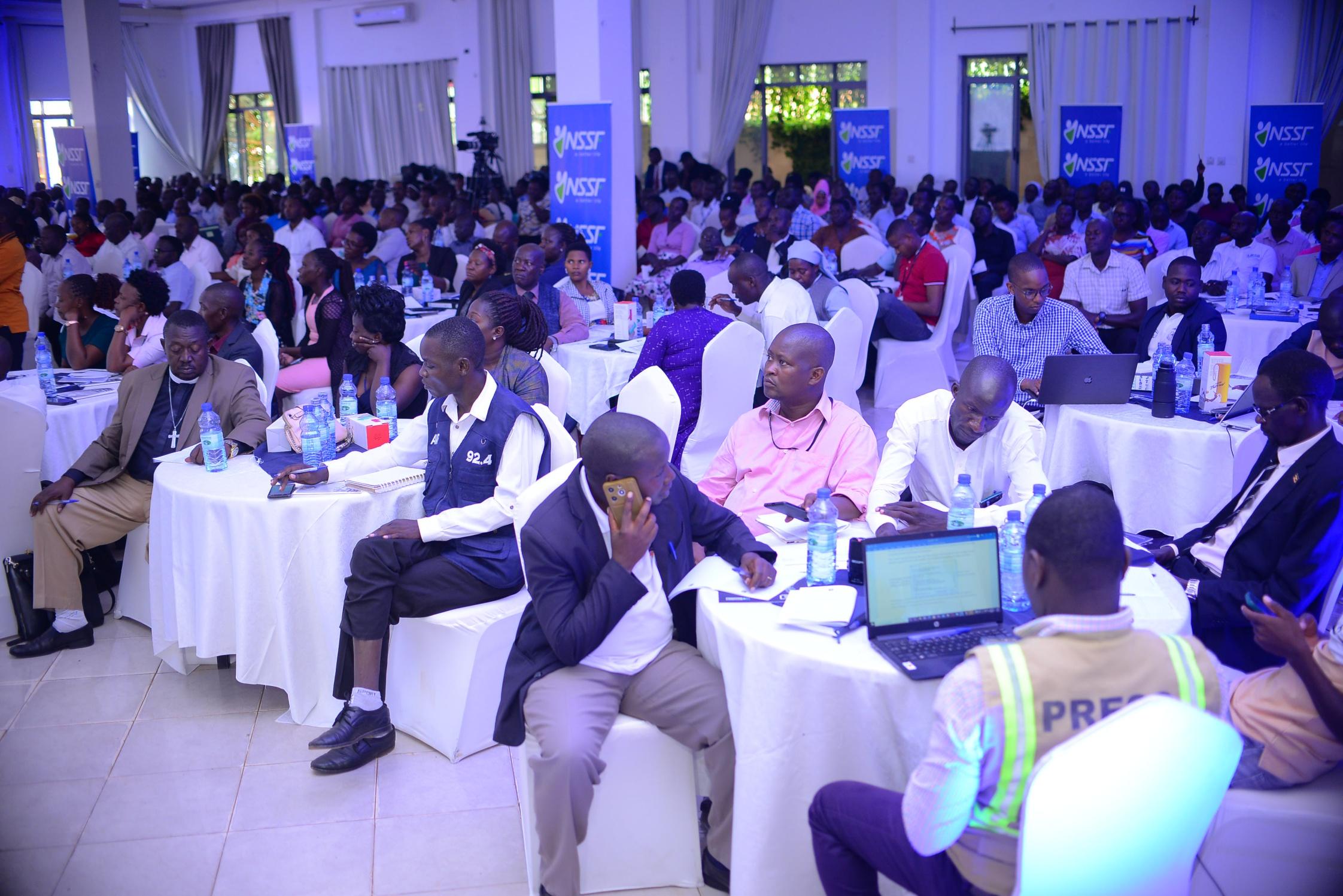

We measure the quality of stakeholder relationships through defined metrics to monitor satisfaction levels on an ongoing basis. Overall, for the period under review, we believe that through focused engagement with our stakeholders, the Fund has maintained healthy and mutually rewarding relationships.
Below, we demonstrate our commitment, engagement, and quality of our relationships with key stakeholders through the value we have delivered.
We serve a diverse range of customers, from individuals to employers, each with unique needs. Engaging with them is essential to understand their current and future requirements.
Our customers expect excellent service, timely payouts, competitive returns, post-retirement support, efficient engagement, and products for both long-term and short-term savings.
How we engage
• Our walk-in service centres, contact centre, online channels, relationship managers, and employees engage directly with customers to understand and address their needs
• The Service Quality and Business Performance teams utilise research and data to gain insights into customer needs
• Customers provide feedback on our products and services, helping us improve



To deliver value, we conduct customer surveys, refine systems for better turnaround times, build strong relationships through engagement channels, support members with financial literacy and entrepreneurial guidance, and run awareness campaigns to boost compliance and saving.
• The Executive Committee and Board monitor customer experiences by regularly reviewing metrics such as Net Promoter Score (NPS) and Customer Satisfaction Index (CSI)
• Our Chief Executive, Executive Committee, senior leaders, and frontline employees regularly review and discuss customer complaints to ensure continuous improvement
To create a culture where our employees can excel and contribute to our purpose, strategy, and accomplishments, employee engagement is essential. We must provide work environments that foster growth, offer flexible and agile work options, deliver outstanding training, development, and career opportunities, and reward performance with fair and competitive pay and benefits.
Employees seek recognition, rewards, and benefits, along with diversity and inclusion, job security, safety and well-being.They also desire growth, learning, and development opportunities, enabling tools, and better communication and engagement.
How we engage
• Our Board receives regular updates from the Managing Director (MD) and Chief People and Culture Officer Topics range from people strategy initiatives to culture and overall sentiment in the Fund
• Board, management and MD quarterly and annual engagements with employees

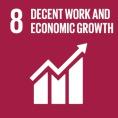

• Customer satisfaction index 87% (2023: 87.5%)
• Mystery shopper score 90% (2023: 88%)
• Turnaround time for payment of benefits 10.1 days (2023: 11.9 days)
• Increased awareness on online channels (E-channels to walk-in ratio 91 to 9)
• 199,980 new customers and 8,374 companies registered
• Designed and tested solutions to support voluntary savings products roll out
• Inability to engage and educate members and the public on opportunities to save as per the NSSFAct Cap 230
• Inability to meet short-term and long-term savings needs
• Develop and deepen the concept for KYC and 360-degree view of our members
• Build partnerships and mobilise formal and informal sectors to save
• Implement Voice of the Customer Led Designs and continuously improve our processes, systems, and channels to improve turnaround times
• Rollout convenient products and services to increase coverage
• Employee engagement score 89% (2023: 86%)
• Graduated over 30 female employees (2023: 30) from Pathfinder Academy
• Holistic health and wellness programme for employees and their families
• Implemented policies on human rights, equal opportunities, labour conditions, ethical conduct, and environmental protection in the workplace to include work and safety training
• Launched and started the Ignite project to redefine our Fund culture
• Engaged employees, especially men on mental health best practices
• Engaged more than 370 employees via the Pathfinder monthly talk shows
• Continued involvement in innovation initiatives, including the internal Hi-Innovator programme and the deployment ofAI tools
Aligning employees with the 2025-2035 strategy, ongoing employee surveys to measure engagement and identify areas for improvement. We strive to create a thriving work environment, implement training and development opportunities like the Pathfinder CatalystAcademy, and continue adopting reward and recognition best practices.
• Our Managing Director regional employee workshops on 2025-2035 strategy awareness
• Broadcast HR (Human Resources) policy, Legal Inquiries and Risk nuggets to staff
• Conduct monthly online Pathfinder engagements
• Employee surveys
• Inability to attract, retain and motivate staff could impact negatively on service delivery, thereby leading to negative reputation
• Promote and grow the Pathfinder CatalystAcademy
• Increase employee satisfaction
• Improve our talent development and management practices
• Commitment to equal opportunities
Our relationship with the government supports our strategic pillars and enables us to contribute to policies and initiatives that yield the best results for stakeholders. Regulation helps protect our customers and promotes healthy competition.
Needs and expectations Strategic response to deliver value
The Fund prioritises superior performance against strategy, ensuring robust management, profitability growth potential, and competitive annual interest rates. We uphold ethical standards, regulatory compliance, and ESG considerations, while actively contributing to policy, offering technical input, and sharing information.
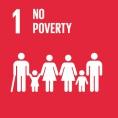



The Fund proactively engages with regulators on compliance with legislative frameworks like the NSSFAct (CAP) 230, PPDA, and URBRA. We enforce strong corporate governance for transparency and accountability. Our dedication to sustainable business practices and stakeholder management aims to create lasting organisational value.
How we engage
• We keep an open dialogue with government especially MoGLSD and MoFPED through our Chairman, Managing Director and, Executive Committee members and senior leaders – as well as through consultation responses and cross-industry initiatives
• Liaised openly and constructively with various regulators, including conducting ongoing discussions in support of our corporate governance and operations strategy
• Continued to design solutions and regulations contributing to expanding social security coverage and enriching the range of benefits available to savers
• Continued to realign the Fund's organisational structure to take advantage of the opportunities presented by NSSFAct
• Support realisation of ESG good practice and prioritised SDGs
• Continued discussions and engagements with PPDA, URA, URBRA, NEMAandAttorney General on issues of investment, procurement, taxes, and policy
• Trained District Labour officers on compliance enforcement of NSSF mandate
• At a working level we regularly engage with other regulators through industry consultations and information requests
Performance measures/value delivered Opportunities and outlook Risks Quality of relationship
• Lack of awareness of the legal and regulatory changes leading to an inability to meet regulatory requirements, compliance, and potential damage to reputation
• Work with various ministries to include Ministry of Gender and Labour to expand awareness and coverage of social security as per NSSFAct
• Constantly monitor evaluate, and audit our corporate governance practices, legal and regulatory requirements
• Work with Ministry of Finance to promote investments and innovation
• Mobilise partners to support social security coverage
Good supplier relationships are essential for our success.They help us deliver the solutions and propositions that create customer value.
The Fund prioritises responsible purchasing, supports local suppliers, maintains prompt payment schedules, and upholds ethical and transparent business practices. We ensure fair terms of trade and sustainable sourcing.




Continual procurement efficiency and performance assessments, enhanced supplier engagements, competitive supplier promotion, and ensuring prompt, uninterrupted delivery of materials and services.
How we engage
We need to know who we are doing business with and who is acting on our behalf.Therefore, we:
• Select suppliers based on principles of ethical and responsible conduct
• Conduct due diligence on suppliers before and after signing a contract
• Ensure the products we purchase are made, delivered, and disposed of in a socially and environmentally responsible manner
• Utilisation of the electronic Government Procurement (eGP) system
• Measure suppliers' rating, and collaborate with them for continuous improvement
• Conduct theAnnual Supplier's Forum to foster communication and partnership
•Apply preferences to promote local content and ensure that special groups, such as women, youth, and persons with disabilities, are included in our procurement processes
delivered
• Directly served 150 suppliers, 84% of these were local suppliers
• Awarded more than UGX 59.5Bn in strategic procurement contracts
• Registered a procurement performance rating of 84.6% by Public Procurement and Disposal of PublicAssetsAuthority (PPDA)
• Our procurement efficiency was 96% (2023: 93%)
• Conducted theAnnual Supplier Forum inApril 2024 and registered a Supplier Satisfaction rating of 98%
• Trained 40 of our procurement champions on revised PPDA regulations and practices
• Promoted local content and special groups of people such as women, youth, and persons with disabilities to participate in procurements
• Our supplier approach is shaped by our Sustainable Procurement Charter and incorporation of technology and digitisation in the procurement and disposal processes
• Continued to build a more resilient supply chain by adding a supplier management risk framework (including internal controls) into our wider key controls framework
• Sustainable procurement efficiency, supplier satisfaction and experience
• Improve contract management practices
• Engaging and enlisting unscrupulous suppliers could lead to conflicts of interest, bribery and poor service delivery impacting negatively on our reputation
The media plays a critical role as a contact point with external stakeholders, keeping them informed of facts, business developments, new products, services, and the impact of our business operations.
The media expects timely and accurate information to report on business developments, products, services, and corporate impacts. They need transparency, accessibility to company representatives for interviews, and clear communication to convey stories effectively


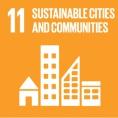

The Fund ensures that the media are consistently updated on key business activities and offerings. We prioritise transparency and accountability, providing clear and timely communication about changes and new products and services. By actively engaging with the media, we help them convey accurate and relevant information to the public, fostering an informed and positive narrative about our business.
Communities
We make a substantial economic contribution to the communities we serve, acting as a vital connector within them. This role is essential to achieving our growth plans and fulfilling our purpose: to make savings a way of life.
In response to the needs and expectations of communities, NSSF brings value through purposeful CSI activities and addresses local community factors, including ESG considerations.





The Fund implements various CSI initiatives, including the KAVC, school renovations, University Career Expo, and student internships. We conduct Financial Literacy training for customers and continue to provide seed funding for small and growing businesses through the Hi-Innovator programme in partnership with the Mastercard Foundation.Additionally we have piloted initiatives to support skills and livelihoods development.
How we engage
• Media releases and product- related publicity
• Roundtables
• Product and service launches
• By actively engaging with the media, who play a critical role as the contact point with external stakeholders, we help them convey accurate and relevant information to the public
• Kept our customers and stakeholders informed of the facts, business developments, new products, services, and the impact of our business operations
• Positively reported on Fund investments, Hi-Innovator programme, 2035 strategy among others
• AddedTikTok-@nssfug as our new channel, gaining a reach of 3,301,378 and 317,955 engagements
• Registered more than 2,113,318 engagements on our social media channels
• Face-to-face and telephonic engagements
• Interviews with the CEO and key executives
How we engage
• We provide support through walk-in and outreaches
• Our Hi-Innovator programme brings entrepreneurial skills training and funding to growing and small businesses
• The real estate portfolio we are developing, including Solana Residences,Temangalo and PensionTowers promote development and employment opportunities
• We use customer surveys and reputation tracking to understand community perceptions of us and inform our focus areas and targets
• Our online social media channels bring our brand to local and global communities and we track feedback and performance through dashboards
• Rapid advances in social media andAI with associated stakeholder scrutiny on misinformation
• Identify and continue working with media to positively impact our customers, stakeholders, regulators, communities, and support in expanding social security coverage
• We continued to renovate public primary schools, with over UGX 940M raised from partners, individuals, and communities via the NSSF Kampala Seven Hills Run
• The University Career Expo 2024 was attended by 21,555 students an increase from 16,000 in 2023). Over the past 12 years, the Expo has registered 44,000 students as Fund members, and contributed over UGX 36.4Bn.The Expo aims to prepare students for the workplace and enhance their job prospects
• Engaged and impacted 2,376,471 people on financial wellness via our Financial Literacy initiatives
• We provided $20,000 each to 102 (2023: 155) small and growing businesses through our Hi-Innovator programme, in partnership with the Mastercard Foundation.To date, this programme has created 183,110 jobs
• Our scalable activities continue to provide great content for our media channels and improve public perception of our Fund
• The inability to create a positive and sustainable impact on the communities within which we operate has a negative impact on the sustainability of our operations and the economy at large
• Continue to refine our CSI activities for impact
• Identify and continue working with partners to positively impact communities and expand social security coverage
Quality of stakeholder relationships, cont
Business partners and industry associations are key interfaces with our customers.They are custodians of our brand and reputation, playing a critical role in ensuring the delivery of our strategy
The Fund collaborates to stay current with key developments and standards, advocates for beneficial regulatory changes, and enhances product, service, and social security development.
How we engage
• One-on-one and hybrid business meetings



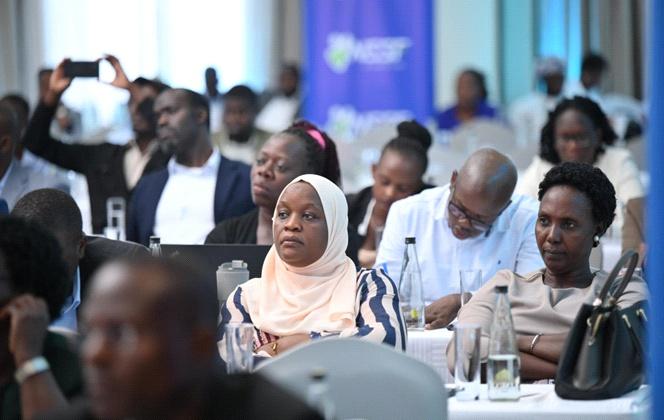
The Fund participates in industry-led initiatives related to policy and law, engages in business and sector forums, and undertakes capacity-building initiatives.
• Training, conference sessions on products, services and best practices
• Collaborated with our partners such as NIRA, URA, URSB, OPM on specific solutions that required a multi-partner approach
• Conducted workshops and collaborated with the Uganda National RoadsAuthority Ministry of ICT, and UNOC regarding contractors' compliance with NSSF
• On course together with Mastercard Foundation, to give seed funding of $20,000 each to 5,000 small and growing businesses via the Hi Innovator programme
• We partnered with innovations accelerators such as Outbox, Stanbic Business Incubator, Mkazipreneur and MUBS Ent'ship Innovations
• Worked with Banks in supporting our collections, benefits payments and financial market operations
• Opened and hosting the Liaison Office to manage International Social Security Association (ISSA) activities across EastAfrica
• Participated in key international and regional engagements on social security protection and financial literacy
• Lack of engagements leading to inability to meet regulatory requirements, compliance, and damage to reputation
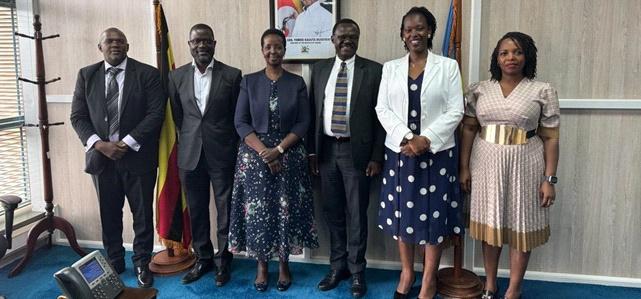
• Provide platforms for broader actions on market expansion and social security coverage and development
• Identify and increase partnerships to support increase in coverage and best practices
• Address social security-related developments, concerns, and initiatives and sharing lessons and best practice
• Support realisation of ESG practices and prioritised SDGs
• Foster relations between ISSA, ILO, and social security schemes in the EastAfrican region and globally
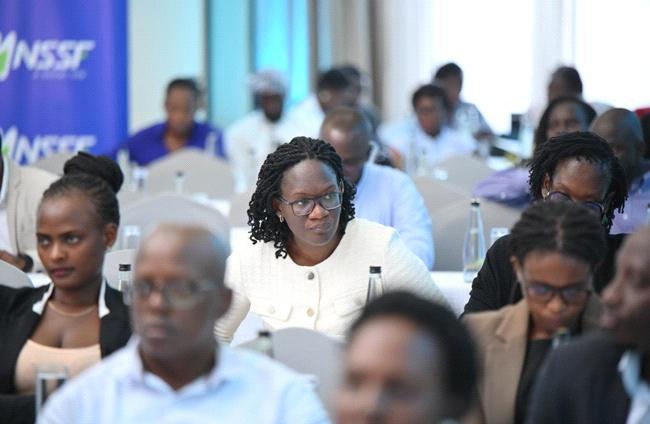
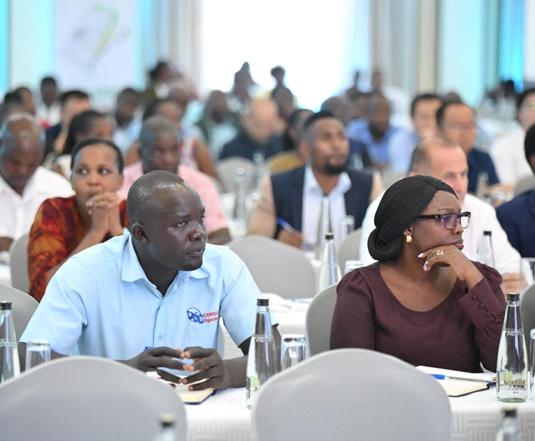
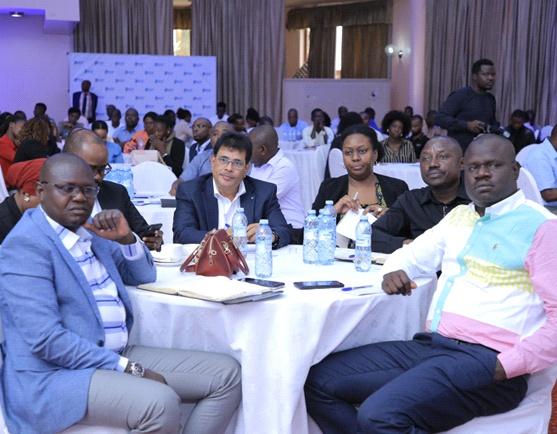
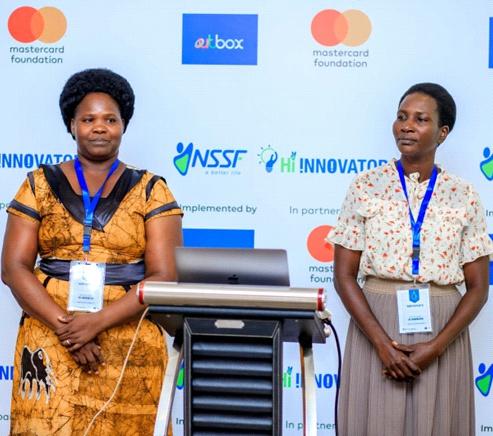
Delivering a greater customer experience – sustainability lever: We create value by building strong connections with our customers and the public, ensuring positive experiences in all interactions to make saving a way of life. We invest in innovations to provide accessible, empathetic, and inclusive services, especially for those facing challenges accessing Fund services or with complex needs.
NSSF customer snapshot
Enhanced
Customer satisfaction index
Customer experience index
Enabled
Customers using online channels
Members applied for retirement benefits
Enhanced value through Improved experiences
FY2023/2024 FY2022/2023
Our key material areas to creating value for our customers
Key member and customer concerns
• Simplicity and convenience
• Speed, safety and accuracy
• Benefits that matter
• Clarity of offerings
We engage customers through various channels, including digital solutions, contact centres, branch networks, outreach centres, and Relationship Managers. Our Member Services Section, which includes Customer Experience, Benefits and Data, and Service Quality Units, helps us turn resources into valuable outcomes that meet our strategic goals and benefit our customers.
We focus on different segments to build connections and provide tailored solutions for outstanding customer experiences, generating revenue and building long-term trusted relationships. We are dedicated to:
• Continuously improving our services for higher customer satisfaction and delivering the best experience
• Treating customers fairly, communicating transparently, and providing timely services that respect and reflect their diversity
• Keeping our promise to improve lives by offering simplicity, convenience, speed, safety, accuracy, and clarity
To enhance customer connections and experiences, we conduct regular surveys, analyse complaints, interact directly, and use data from customer transactions. While we are making progress in improving our service levels, we recognise and are always ready to address areas that need improvement to meet our mandate.
Material areas
• Offering personalised services and promoting financial literacy
• Automating processes and driving innovation
• Communicating all available options while ensuring KnowYour Customer (KYC) compliance
• Enhancing collaboration between front-end and back-end teams
• Continuously empowering our employees to provide excellent and consistent service
…to achieve the following value
For our customers
• Simple, efficient, and innovative service solutions
• Safe, trustworthy, and accountable provider
• Timely benefits payments
• Competitive returns
• Empowering customers' financial decisions
• Clear offerings through engagement
For our Fund
• Better customer experience and satisfaction
• Higher Net Promoter Score (NPS)
• Better service quality
• Improved service level and efficiency
• Enhanced customer trust and support
• Increased membership
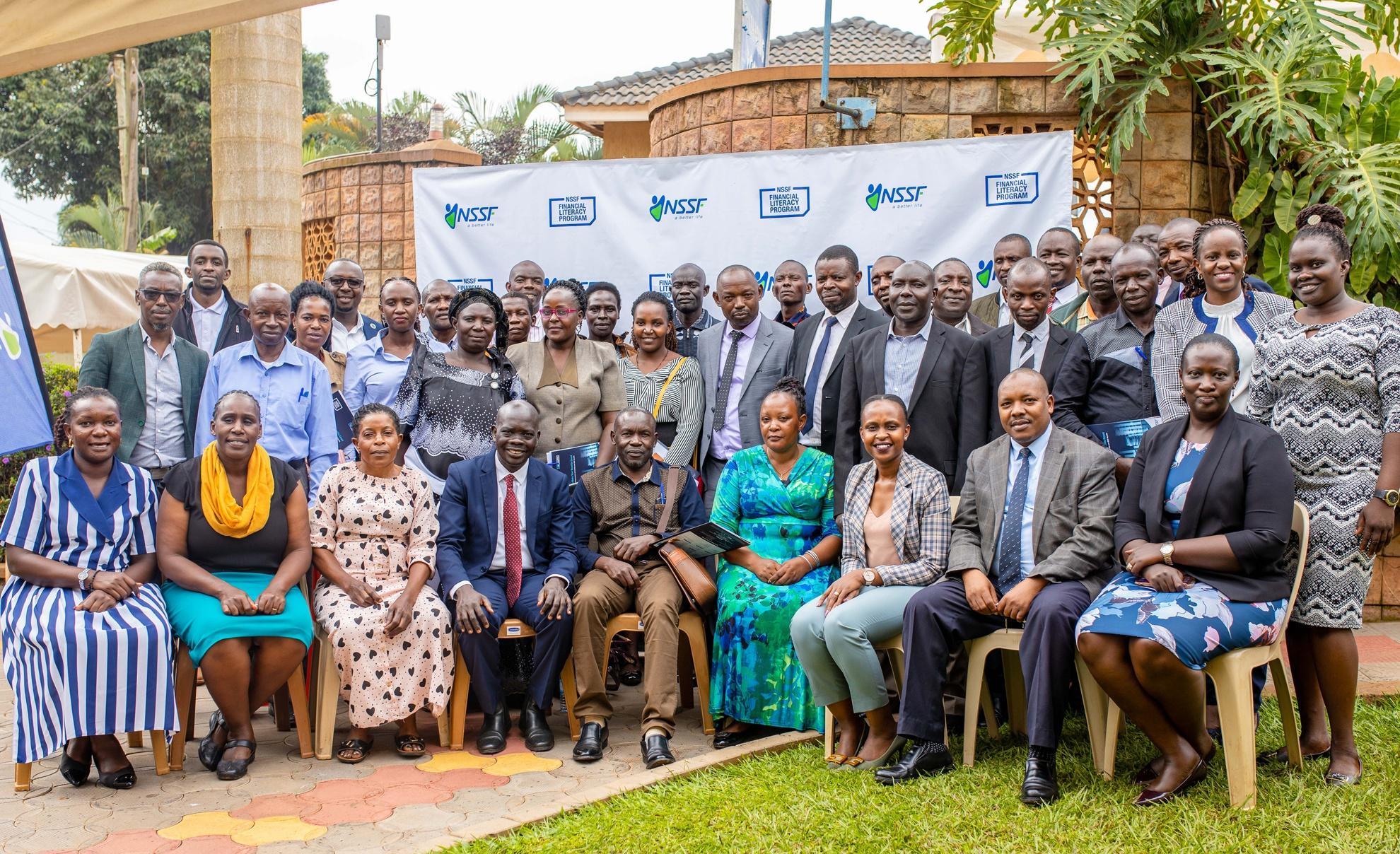
Member services performance
During the year, we embraced fast, effective customer experiences by fostering an environment that encourages curiosity, digital thinking, and continuous improvement. Leveraging innovation and our commitment to delivering high-quality services, we are poised to empower individuals, businesses, and communities across Uganda and internationally. Our improvements and innovations have enhanced both our operations and the customer experience.
“ I checked in ✔ at NSSF Headquarters last week, man, I was welcomed like a big person...Those people, from the entrance to your destination and back, are the true definition of public officers. «««««”
Customer education on digital channels and DIY
We emphasised educating our customers about our online platforms and promoting a Do ItYourself (DIY) approach to enhance accessibility and usability. Our "Chap Chap" promotion, launched this year, encouraged customers to use our self-service channels anytime and anywhere. This initiative led to a 55.9% increase in digital channel usage, achieving the following outcomes:
Enhanced our online channels and processes
We continued to enhance our processes and systems to improve efficiency and customer experience.These enhancements include upgraded our NSSFGoApp for easier access to services and stabilised our email and tollfree Interactive Voice Response (IVR) to reduce turnaround times, and cost-saving measures.These improvements support better self-service options for our customers, improving our customer experiences and processes.

This year, 18,489 (44.8%) customers used our NSSFGo mobile app, web app ( and digital https://nssfgo.app/landing) forms to apply for benefits. We also introduced an Emigration Grant portal for non-Ugandans.The online application system has streamlined verification processes, cutting benefits turnaround time and printing costs.This improvement enhances self-service options for members and speeds up service at walk-in centres.

“Thanks @nssfug, this efficiency is incredible, and there's no need to sign here or there! Online claim application responded to within 48 hours. Let's share this positive performance more often. Well done! “



Customer testimonial
Alecoo B'ruhanga T
“The NSSFApp is now user-friendly, thanks for the upgrade! “

Since launching our enhanced Whistleblower Portal, we have received reports from 2,650 customers about noncompliant companies.The improved portal, accessible via the NSSF website: and https://whistleblower.nssfug.org/ NSSFGoApp, is interactive and ensures anonymity, allowing easy reporting of non-compliant employers. Of the reports, 35% (928 cases) resulted in audits or demands for payment of employee contributions.The portal tracks and addresses cases until resolution and allows Government Labour Inspectors to report employers failing to remit mandatory contributions. We encourage everyone to use this portal as part of our digitisation strategy for efficient self-service.
Videos on whistleblower platform
In the past year, we processed benefits for 42,901 customers, a decrease from 46,337 the previous year. We disbursed UGX 1.12Tn, with an improved average processing time of 10.1 days, down from 11.9 days. Our benefits payouts improve our customers' quality of life and help them achieve financial stability.
We proactively reached out to over 31,558 customers to address their complaints and benefits issues, strengthening connections and relationships. We also enhanced our automation efforts, including employer registrations and 1.37 million contribution reminders.
Arnold Mka.
“I received a good response from a good customer service lady this evening on my phone , and I do appreciate your help. Thanks so much! “


“Good morning Dear NSSF team. I am back to you to inform that I have received the payment from you.I humbly submit my thanks to all the lovely team for the great work, especially to Lawrence,Aaron, and others that I don't know who contributed for this case to be issued. Thank so much .I can't fail to thank the government of Uganda for whatever it’s doing to and for refugees. Only GOD will pay Uganda and Ugandans for their kindness. Be blessed.”

“ Ahuge positive shout out to @nssfug.The process to withdraw benefits was seamless, painless, efficient and fast!!! #recognizingexcellence.“
Our Financial Literacy Programme
To address the growing financial challenges faced by our members, our free Financial Literacy programme offers essential guidance for building financial well-being. We also engaged our customers in partnership with Stanbic Bank, ICEALION Insurance, UAPInsurance, and Jubilee Insurance.
We introduced anAI-driven financial literacy agent at available https://finlit.nssfug.org/, in English, Luganda, and Swahili, and launched ourTikTok channel (@nssfug).
Below is our Financial Literacy programme snapshot.

On 25 September 2023, the Fund held an interactiveAnnual Members Meeting (AMM) in line with our commitment to transparency and accountability to NSSF members, stakeholders, and the public.This annual event, a key highlight for the Fund, attracted NSSF partners and contributors.
The meeting featured updates from Fund management on social security trends, operations, and future initiatives, emphasising our mission to make saving a lifestyle.The Board of Directors also presented the Fund's performance and plans for the financial year, engaging with attendees in an interactive forum.
The event was conducted in a hybrid format, accessible via our online platforms, television, and social media channels.

“How did I miss this important lifestyle discussion? Thank you so much for this valuable information that you never learn from the workplace or school .”

The event generated
across Print, Radio, andTelevision, 45% coverage on Radio
We recorded 11,365 live views of the event, slightly down from 12,909 the previous year, engaging more than 900,000 customers We achieved 3,857,963 impressions surpassing our target of 2,000,000
Interest was computed and credited to
member accounts
10. Achievements, challenges, and ongoing improvement efforts
We are strategically leveraging members' needs and opportunities presented by the NSSFAct to enhance their lives. By investing in innovations and forging strategic partnerships, we aim to boost members' saving capacity and willingness.
As a responsible corporate citizen, we are committed to creating sustainable value for our members, stakeholders, and society
While we have made notable progress in certain areas, we acknowledge that we still fall short of our goals in some aspects, particularly regarding benefits turnaround time (TAT) and our people. We are actively working to address these challenges and improve our overall customer experience.
Below is an extract from the CSI report about what our members are saying.
Satisfaction rating: qualitative
Attribute Rating Reason
Accessibility of funds
Uncertainty and trust issues
Customer testimonial
Thanks so much NSSF for being so transparent this time in what you do. We appreciate you so much! “


Delayed access and bureaucracy
Flexibility and eligibility 7 5 6 8
Inability to access funds when needed, especially during emergencies, is a source of frustration.
There is a level of uncertainty and concerns about the future performance of NSSF.
Delays in accessing survivors benefits of deceased members due to long waiting times can be frustrating.
Need for more flexible terms regarding benefits access, reducing the age or time restrictions for accessing a portion of their savings.
To achieve a 95% customer satisfaction rating by 2025, we have:
• Invested in multi-skilled employee training to enhance service and resolve queries faster, breaking down internal barriers
• Focused on leadership development, including benchmark visits and specialised training, such as culture of excellence for our customer experience teams
• Continuously reviewed and aligned our processes with our digital transformation goals
• Collaborated across various departments - Commercial,Technology, Marketing, Legal, etc. - to identify and address service gaps promptly
• Conducted root cause analyses to resolve recurring customer issues
• Implemented a hybrid work model for our contact centre to offer flexible work arrangements
• Expanded the use of big data to better understand customer needs
• Mapped our KYC journey to improve service request turnaround times
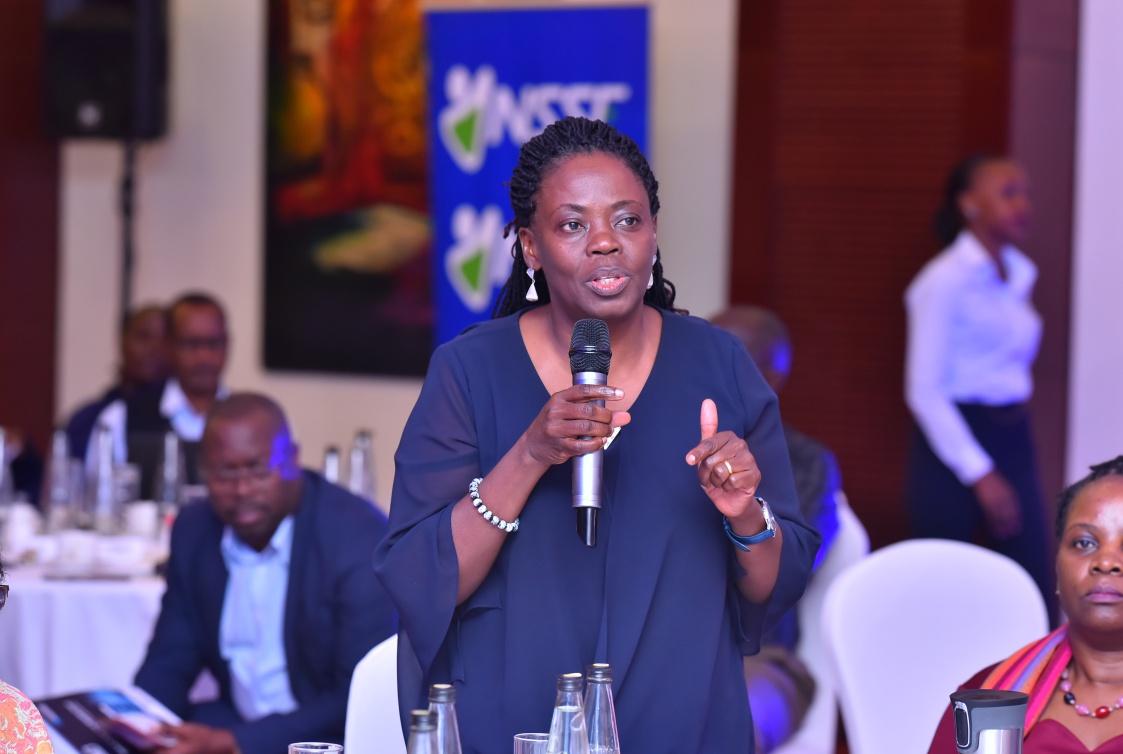
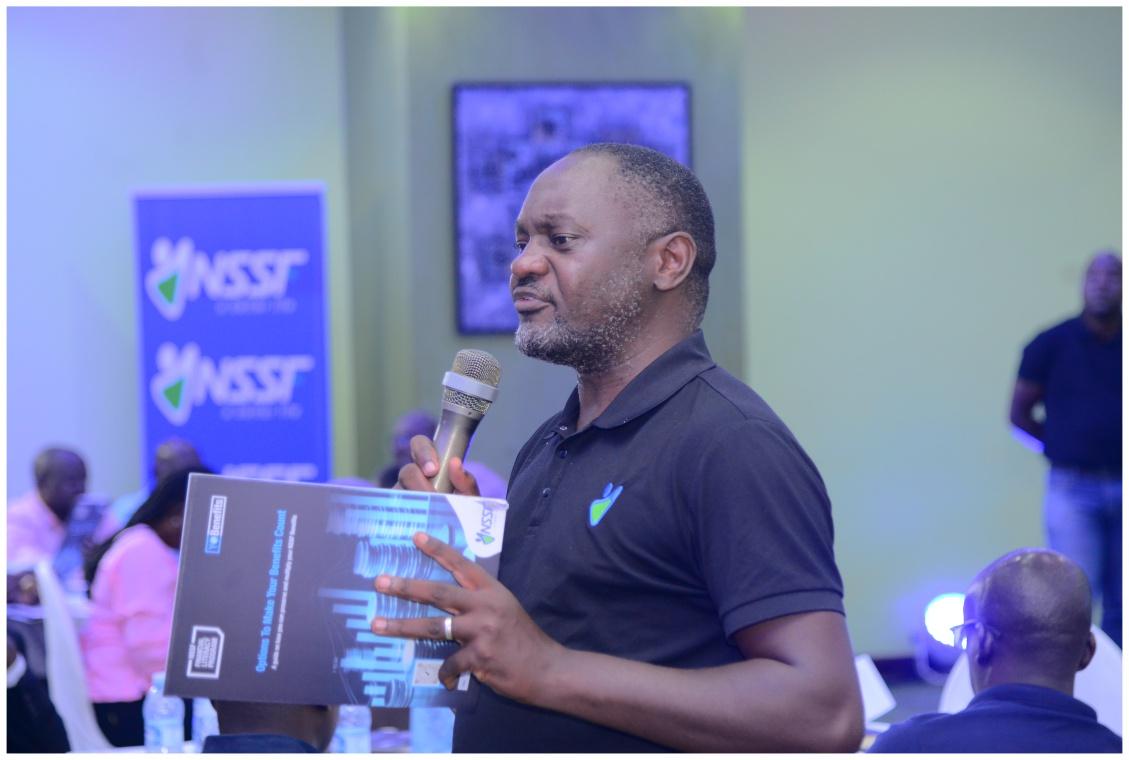
We recognise the need to improve customer satisfaction, service levels, and benefits turnaround times and are actively developing strategies to achieve these goals and enhance the lives of our members.
Looking ahead
We understand that customers seek solutions to their problems, not just our products.Therefore, we are committed to developing smarter solutions and connectivity services that deliver real outcomes.
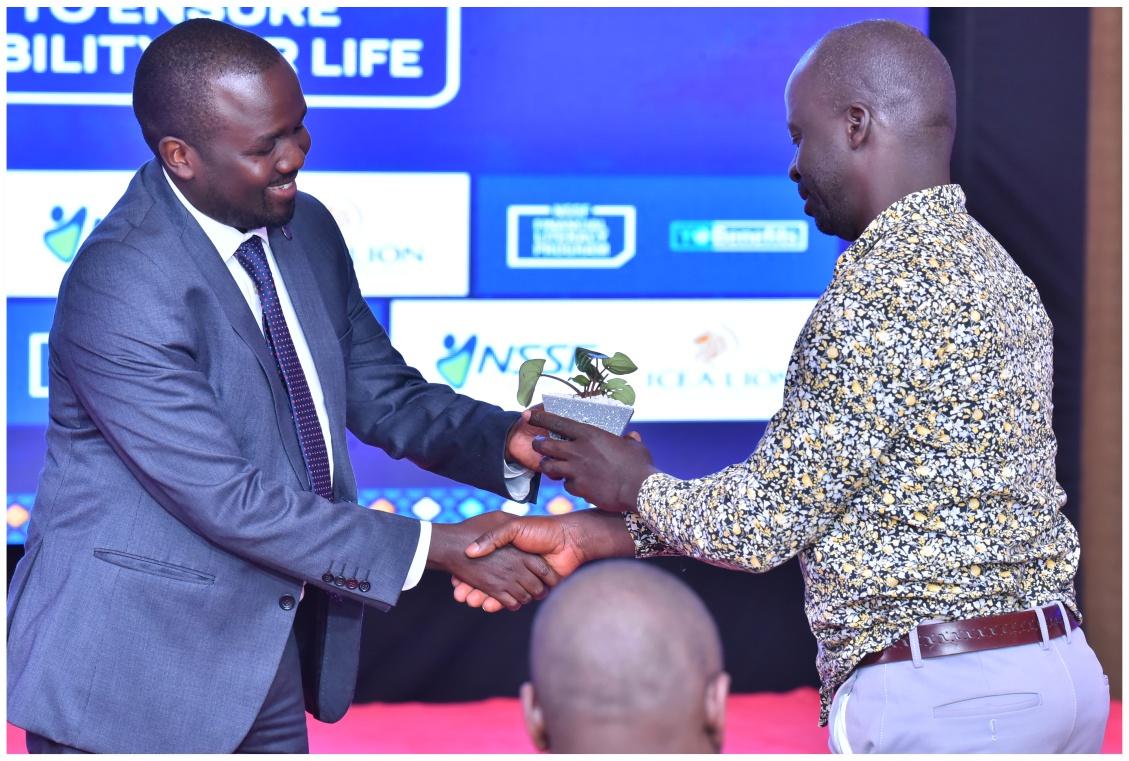

Our focus moving forward includes:
• Maintaining and enhancing customer satisfaction: We will strive to keep experience and satisfaction levels high and continually personalise the customer experience
• Supporting new products and services: In the short to long term, we will focus on rolling out new offerings related to voluntary savings, leveraging customer needs and opportunities from the NSSFAct Cap 230
• Improving processes and promoting digital channels: We will enhance our processes and solutions while encouraging the use of digital channels to improve convenience and interactions
• Conducting a KYC campaign: We will initiate a campaign for customers to update their global identifiers, such as National ID Numbers, refugee, and passport numbers as part of improving service delivery

Leverage opportunities resulting from the new law to develop new products and services for our customers to meet individual needs for both long- and short-term savings, for example, creating a unit trust
Changing the business model from a relationship management model currently servicing 30,000 employers to an agile model which will be scalable to service 150,000 employers and potentially 14 million individuals in the informal sector
Optimise digitisation and innovation to improve customer service Continue to achieve outstanding customer service results
Streamline structures to enable internal resources to initiate solutions to challenges swiftly to better serve our customer base
Leveraging technology for growth and efficiency
“At the Technology and Enterprise Solutions Department, our focus is on using cuttingedge technology to expand our reach, enhance customer experience, and boost operational efficiency.”
Expanding social security coverage
To extend social security coverage to more Ugandans, we are embracing digital platforms that reach underserved and remote populations. Enhancing our mobile and online platforms facilitates seamless registration, contributions, and benefit claims, ensuring accessibility regardless of location, technology adaptation, or language.


Enhancing user experience
Convenience is central to our technology strategy. We are redesigning our digital interfaces for simplicity and ease of use, ensuring members can interact with us effortlessly AI-driven chatbots and virtual assistants are being implemented to provide round-the-clock support and instant query resolution.
Data-driven member insights
Data is key to becoming a more member-focused organisation. By leveraging advanced data analytics, we gain deeper insights into member needs, enabling us to tailor the development of targeted products and services effectively. Big data helps us understand behaviour and trends, while predictive analytics allows us to anticipate and proactively meet future needs.


Artificial Intelligence for operational transformation
Artificial Intelligence (AI) is pivotal in transforming NSSF into a modern, efficient, and responsive fund. We are adoptingAI technologies like robotic process automation (RPA) to handle routine tasks, freeing employees for strategic activities.AI algorithms enhance decision-making in risk management, fraud detection, and member engagement, while personalised recommendations improve member experiences.
Strategic partnerships for innovation
Partnerships are crucial to our technological advancements. Collaborating with fintechs, data aggregators, and other organisations enables us to craft innovative solutions.These partnerships enhance our analytics capabilities, integrate diverse data sources, and expand our reach through digital payment platforms, making member engagement with NSSF more convenient.


ANew Day: Empowering our workforce for sustainable growth
As we step into a new day at NSSF, our focus is on creating shared value that drives sustainable growth. Our success is deeply intertwined with the overall well-being and engagement of our employees, the backbone of our achievements.This year, we are dedicated to fostering a culture that empowers every individual, ensuring that our workforce is well-equipped to meet the evolving needs of our members and stakeholders.

Nurturing talent for a brighter future
In line with our vision of shared value, we remain dedicated to the professional development of our employees.The initiatives we have implemented over the past year have set the stage for even more focused programmes designed to enhance functional skills, leadership abilities, and innovation within our teams. Our commitment to continuous learning is not only about fostering individual growth but also about equipping our employees to lead NSSF into the future.
Strategic initiatives for workforce empowerment
This year, we launched several key initiatives to empower our workforce.These initiatives include manager coaching, cross-functional collaboration through agile projects, HR training for non-HR managers, and strategic partnerships that offer employees opportunities for growth. By investing in our people, we are cultivating a resilient and adaptable workforce, prepared to meet the challenges of today and tomorrow
Strengthening employee engagement
Employee engagement is a top priority as we work to create a workplace where every voice is heard and valued. Our recent satisfaction survey revealed both strengths and areas for improvement, steering our efforts to enhance inclusivity, support, and innovation. By promoting open communication and collaboration, we aim to not only engage but also inspire our employees to contribute to NSSF's long-term success.
At NSSF, we recognise that creating shared value goes beyond financial metrics, it is about fostering emotional connections and making a positive impact on our employees, members, and the broader community.As we advance, our focus will be on harnessing the strengths of our diverse workforce to drive innovation and sustainable growth. Each day presents an opportunity to make a difference, and together, we are committed to building a brighter future for everyone.

As we progress under the theme “ANew Day - Creating Shared Value for Sustainable Growth,” we remain dedicated to empowering our employees, fostering innovation, and driving sustainable success.The path ahead is rich with opportunities, and with the commitment of our talented workforce, we are confident in our ability to achieve our goals and deliver lasting value for our members and stakeholders.
Our employees are the cornerstone of our success in serving our members.Their creativity, dedication, and integrity form the foundation of our Fund's achievements. We are committed to creating a workplace where our people feel valued, supported, and empowered to make meaningful contributions to our mission. Our work environment is integral to our human capital strategy, which focuses on the entire employee journey— from attracting and retaining top talent to fostering engagement and offering comprehensive support for our employees and their families through our total rewards programme at every stage of life.

In our ongoing commitment to ensuring a safe and secure work environment, the Fund placed significant emphasis on Occupational Safety and Health (OSH) during the year
Defensive driving training:Approximately 600 Fund employees, including members of the Executive Committee (EXCO), participated in defensive driving training fromAutomobileAssociation of Uganda Consultants.
This initiative was launched in response to a concerning increase in accidents involving both Fund and private vehicles. Since the training, we have seen a significant reduction in accidents, highlighting the programme's effectiveness.
Safety measures for branches with lake operations: Our branches near Lake Bunyonyi in Kabale and Lake Victoria in Masaka have each been equipped with two pairs of life jackets.This provision is designed to mitigate the risk of drowning and enhance the safety of our employees working in these locations.
Risk vulnerability assessment: Aprofessional risk vulnerability assessment was conducted by the Uganda Police for all Fund offices and branches.The assessment identified several weaknesses, which we are actively addressing to enhance security and safety
Occupational safety and health audit: Our OSH Champions conducted a comprehensive audit across all Fund work areas, identifying several hazards that require attention. We are actively working to mitigate these risks to enhance workplace safety
At the Fund, we are dedicated to cultivating a wellness culture that prioritises both the physical and mental well-being of our employees. We launched a series of initiatives to promote healthy lifestyle habits during the year These efforts have yielded significant positive outcomes, including improved employee engagement, better health, individual empowerment, increased awareness of healthy living, reduced sick leave and absenteeism, higher productivity, enhanced teamwork, a growing wellness culture, and an overall healthier workforce.
• Step challenge (“Walk to Paris”): From October to December 2023, we organised the "Walk to Paris" step challenge to encourage physical fitness and teamwork.The event saw enthusiastic participation from 85% of our employees, including nine members of the Executive Committee.
• Wellness Champions: We appointed Wellness Champions to lead by example, inspiring their colleagues by sharing pictorials and videos of group workouts. Currently, there are over 40 active Wellness Champions across various departments.
• Fitness and gym encouragement: Employees are encouraged to regularly visit gyms and fitness centres to participate in activities such as gym workouts, swimming, steaming, sauna sessions, and aerobics.This benefit has been highly utilised by our employees.
• Annual health camp: During the annual staff conference, employees received comprehensive health check-ups.These included BMI measurements, blood pressure monitoring, random blood sugar tests, optical and dental exams, voluntary HIV counselling and testing, physiotherapy sessions, and doctor consultations.
• Mental health and counselling support: We actively promoted counselling services and mental health support for employees and their dependents. We held four counselling seminars covering topics such as handling relationships, thriving in marriage, managing children and teenagers, and men's mental health.
• Employee wellness townhalls: Conducted by the company health advisors to promote healthy living habits.
• Healthy meals servings: Provided healthy meals options for employees in the cafeteria.
• Personalised doctor advisory: Personalised health advice for colleagues with high-risk health conditions, delivered by company health advisors.
• Weekly wellness communication: Circulated weekly tips on healthy living, counselling, parenting, and overall well-being.
• Health awareness and celebration of health days: Sensitised staff and celebrated key health days such as World Cancer Month, WorldAIDS Day, World Mental Health Day, World Breastfeeding Week, and others.
• Dependent care support: We provided onsite childcare facilities, supporting 70 babies, and celebrated mothers with a special Mother's Day Dinner at the Protea Hotel.Additionally, we established a resource centre in the crèche for mothers to borrow parenting books and trained employee helpers in first aid to manage emergencies at home.
• Workstation health visits: Our company health advisors conducted visits to all employees at their workstations, offering extensive sensitisation on healthy living.They assessed the quality of staff meals, inspected food providers across the branch network, and evaluated the medical facilities frequently visited by employees.
• Launch of the NSSF WellnessApp: Developed internally by theTechnology team to monitor staff well-being.
• Medical Board initiatives:The Medical Board reviewed and recommended health and wellness solutions to further promote the wellbeing of Fund employees.

Employee engagement and communication
Employee engagement
Our approach to employee engagement focuses on creating an environment where employees feel valued, informed, and connected to our organisational goals. In FY2023/24, we emphasised meaningful involvement and commitment beyond mere job satisfaction.
The annual Employee Engagement Survey is central to our strategy, providing a platform for employees to share their thoughts and feedback.This input guides our leadership in aligning strategies and policies with employee needs and aspirations.
This year, the overall employee satisfaction rate was 89%, an increase from the previous year's 86%.These results reflect a powerful sense of belonging and active participation in the Fund.
Additionally, our management team undergoes a 360-degree review process, enabling employees to offer feedback on leaders, peers, and direct reports.This ensures continuous improvement in management effectiveness.
Our engagement efforts also include various activities designed to build connections, foster open dialogue, and strengthen our sense of community within the Fund.
• Managing Director's Town Halls: Employees are updated on key business issues and given the opportunity to ask questions, promoting transparency and alignment across the Fund.
• Team building activities: Frequent team-building events help employees interact outside their daily routines, strengthening bonds and fostering collaboration.
• Human resource roadshows: Our Human Resource Business Partners periodically visit all branches to connect with employees on a wide range of issues, ensuring that every employee feels heard and supported.
• Annual Staff Conference: Akey event where management communicates essential information to all employees in a collective setting, reinforcing a sense of unity and shared purpose.
Our commitment to a positive work environment is built on trust, transparency, and teamwork. Effective communication is integral to our culture, and we utilise various online platforms to facilitate open dialogue, allowing employees to share insights and concerns.
Our intranet provides daily updates on Fund operations, reinforcing our dedication to valuing every voice and fostering thriving relationships. Our policies are clear, accessible, and reviewed every two years to ensure legal compliance and alignment with our strategies.
Our core philosophy centres on authenticity, valuing every individual, and fostering a sense of belonging. We are committed to building a diverse and inclusive workforce where equity is fundamental.This commitment is evident across all levels of the Fund, providing opportunities for individuals of all backgrounds, including diverse cultures, faiths, ethnicities, abilities, genders, and ages.
Our workforce has grown to 605 employees (up from 579 in FY2022/23) due to new hires, with turnover reduced to 3.4% from 6.5% last year, reflecting stability after our organisational redesign.
At the Fund, equal opportunity and gender equality are actively pursued. Women represent 47% of our workforce, with 25% in managerial roles. Recruitment, promotions, and training are based solely on individual merit, rejecting any form of discrimination.
The Fund offers market-competitive compensation and benefits, guided by principles that ensure equity and effective governance. Our approach emphasises pay-for-performance practices to attract and retain top talent.
Additional benefits include medical and life insurance, leave concessions, gym memberships, and a retirement benefits scheme, among others.
In FY2023/24, no incident of discrimination or violation involving human rights was recorded. In this regard, the Fund has the following policies:
• Anti-sexual harassment policy
• Anti-discrimination policy
At the start of each financial year, we set clear, measurable performance targets at organisational, departmental, and individual levels.These targets align with the Balanced Scorecard perspectives: Financial, Customer, Internal Processes, and Learning and Growth.This alignment helps employees understand expectations and focus on key areas driving success.
The Fund is dedicated to cultivating a culture of performance excellence, ensuring every employee is aligned with our strategic vision and empowered to reach their full potential.
At the Fund, fostering a culture of excellence is key, and talent retention plays a crucial role in this objective. We are committed to attracting, recruiting, and retaining top talent to ensure exceptional service for our members.
For FY2023/24, the average employee tenure has risen to 9.4 years from 8.9 years, reflecting our success in maintaining a stable and experienced team.Additionally, 72% of our employees have been with the Fund for 5 or more years, underscoring the effectiveness of our retention strategies.
We also reward long-term service, exceptional performance, and significant achievements to further encourage loyalty and commitment.

We believe the Fund's growth is closely tied to the development of our employees. Understanding that an organisation can only progress as far as its talent allows, we are committed to nurturing and expanding employee potential.
Our development approach starts with a comprehensiveTraining NeedsAnalysis (TNA) to assess current skills, identify gaps, and align training with our strategic goals.This ensures our programmes are relevant and targeted, addressing both individual and organisational needs.
To support career and performance growth, we offer in-house coaching programmes where employees receive personalised guidance from trained internal coaches.This helps them navigate their career paths, set goals, and enhance performance.
Additionally, we host monthly Pathfinder Career Conversations with industry professionals to provide insights on career and leadership topics.These sessions foster personal and professional growth by exposing employees to diverse perspectives and real-world experiences.
The Pathfinder CatalystAcademy is dedicated to empowering women, offering structured development to enhance leadership skills, build confidence, and impact both the Fund and beyond.This initiative promotes diversity and inclusivity, aligning with our commitment to supporting female employees in their leadership journey
Our leadership development programmes focus on global best practices and innovative strategies through workshops, seminars, and interactions with international thought leaders.This prepares our leaders to effectively drive the Fund's strategic vision.
Our eLearning platform, Percipio, plays a crucial role by offering personalised learning journeys, professional courses, and various resources, including certification programmes and audiobooks. We encourage employees to utilise Percipio to address skill gaps and stay prepared for future challenges.
While we provide these resources and opportunities, we recognise that the drive to learn and grow must come from everyone. Our role is to offer support and tools, but personal commitment to development is essential.


During the last financial year, we actively engaged with our regulators and government to address members' needs and leverage opportunities from the NSSFAct. Our goal was to develop strategies that enhance members' lives throughout their journey while driving sustainable value for both the Fund and society.


Operating in a complex and heavily regulated environment, we recognize that changes in laws or regulations can impact our business.To mitigate these effects, we collaborate closely with regulators and government bodies to alleviate regulatory pressures and protect our customers and stakeholders. It is crucial that we engage with these key stakeholders across all aspects of our operations, using various communication channels to ensure effective and proactive management.
Our regulators include government, Parliament of Uganda, Ministry of Gender, Labour and Social Development (MGLSD), Ministry of Finance, Uganda Retirement Benefits and RegulatoryAuthority (URBRA), Public Procurement and Disposal of PublicAssets (PPDA), Solicitor General,Attorney General and Uganda RevenueAuthority (URA), Capital MarketsAuthority (CMA), National Environmental ManagementAuthority (NEMA), Financial IntelligenceAuthority (FIA) and Bank of Uganda among others.
Our regional investments in Kenya,Tanzania, and Rwanda further expand our regulatory landscape. We consistently engage with these regulators to manage and adapt to regulatory changes, maintaining productive relationships to foster a stable business environment.
By working closely with policymakers and regulators, we aim to:
• Mitigate legislative and regulatory risks
• Maximise the impact of local investments
• Enhance our thought leadership on public policy
• Strengthen our position as a preferred technology and employer partner
Through these efforts, we build mutually beneficial partnerships and ensure effective regulatory compliance, benefiting both the Fund and our broader ecosystem.
Our engagement with these regulators extended throughout the year, with clear expectations of the intended outcomes. Any breach of regulations could expose NSSF to significant financial, operational, and reputational damage.Therefore, maintaining productive, two-way engagement with regulators and supervisors is crucial for a stable business environment and effective management of regulatory changes.
We strengthened our focus placed on ensuring robust governance processes and strong regulatory compliance. We took bold steps to shift our reputation in a positive direction.This is so because we remain committed to achieving our mandate and that we continue to place special focus on strengthening corporate governance and ethics, and stability of the Fund.As a result, we scored a media tonality of 92.1%.
Several Fund activities require regulatory authorisation, guidance, licensing, and/or registration with key regulators. During the reporting period, the Fund remained committed to adhering to relevant regulatory requirements, ensuring that our activities are authorised, controlled, supervised, and regulated.
Our senior leaders and Board dedicate substantial time representing NSSF to regulators, policymakers, and other stakeholders.This engagement allows us to understand their needs, expectations, and priorities while keeping them informed about our business developments.
Additionally, our business and control functions interact with regulators through various channels, including compliance reporting, policy recommendations, and participation in industry initiatives and ad hoc requests.This interaction has enhanced our ability to ensure the safety of the pension system and demonstrates our commitment to continuous improvement in fulfilling our mandate.
The Ministry of Gender, Labour, and Social Development (MGLSD) supervises social security matters, while the Ministry of Finance and Economic Development oversees financial, and investment aspects related to the Fund.

We continue to collaborate with the Ministry of Gender, Labour, and Social Development (MGLSD) on corporate governance, leadership, budget guidance, partnership development, and regulatory issues related to the NSSFAct (Caps) 230. Our focus is on expanding sector coverage and increasing compliance.
We contributed to discussions on emerging regulations for voluntary savings in the informal sector This engagement led to the drafting of Voluntary Savings regulations, with input from MGLSD, theAttorney General's Office, and other key stakeholders.
Supported by MGLSD, we participated in industry forums and trained District Labour Officers on inspecting and reporting employer defaults on customer remittances. We also engaged with key sectors such as ICTand Oil and Gas to enhance compliance. Our partners, including the National Organisation ofTrade Unions, Central Organisation of FreeTrade Unions, and the Federation of Uganda Employers, are actively involved in this process.
URBRAcontinuously monitors our products and services to ensure compliance with laws and regulations. Our investment decisions adhere to the NSSFAct, URBRAInvestment Guidelines, and internal policies.
We have implemented internal procurement policies to meet new regulatory requirements, including the PPDAamended regulations 2023. Our expertise is actively engaged in highlighting key positives and best practices in the Fund's procurement and disposal processes.The PPDArated our performance at 84.6%, recognising us as one of the best performing public entities in Uganda.
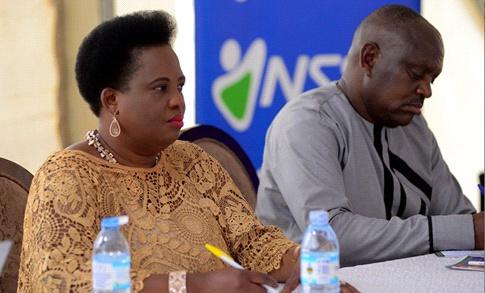

Protecting our customers' personal and financial information remains a top priority. We continuously enhance our internal controls, policies, and security measures through a comprehensive approach that includes technological, administrative, organizational, and physical safeguards.Additionally, we have partnered with the Financial IntelligenceAuthority (FIA) to strengthen our understanding of money laundering trends and KnowYour Customer (KYC) requirements, integrating these insights into our risk management framework.
We recognise that tax sustains and safeguards long-term growth value and enhances the reputation of communities in which the Fund operates.Additionally, it contributes to delivering greater stakeholder value. In the financial year, we continued to act lawfully and with prudence in our responsibility to comply with tax statutory obligations and disclosure requirements.The Fund maintained open and constructive relationships with the Uganda RevenueAuthority (URA).
Our tax contributions for the reporting year, were as follows:
Strategic evolution and purpose
“The Procurement and Disposal Unit (PDU) has evolved into a strategic partner within the Fund, focusing on innovative sourcing, sustainability, and fostering strong supplier relationships. Our mission is to efficiently and effectively acquire goods, services, and works for the Fund, while maximising value for money, managing risks, and ensuring compliance with applicable laws and best practices. Our core values emphasise risk mitigation, cost savings, regulatory compliance, and reduced turnaround times.”

Commitment to integrity and compliance
Enhanced efficiency through automation
We continue to automate procurement processes and reporting, guiding decision-making with improved efficiency The use of the electronic Government Procurement (eGP) system has increased procurement efficiency to 96%, enhanced process transparency, and contributed to environmental sustainability by reducing printing.
Data-driven decision making and satisfaction
Our decision-making processes benefit from data analytics and cross-functional collaboration, improving stakeholder fulfilment.
FY2023/24
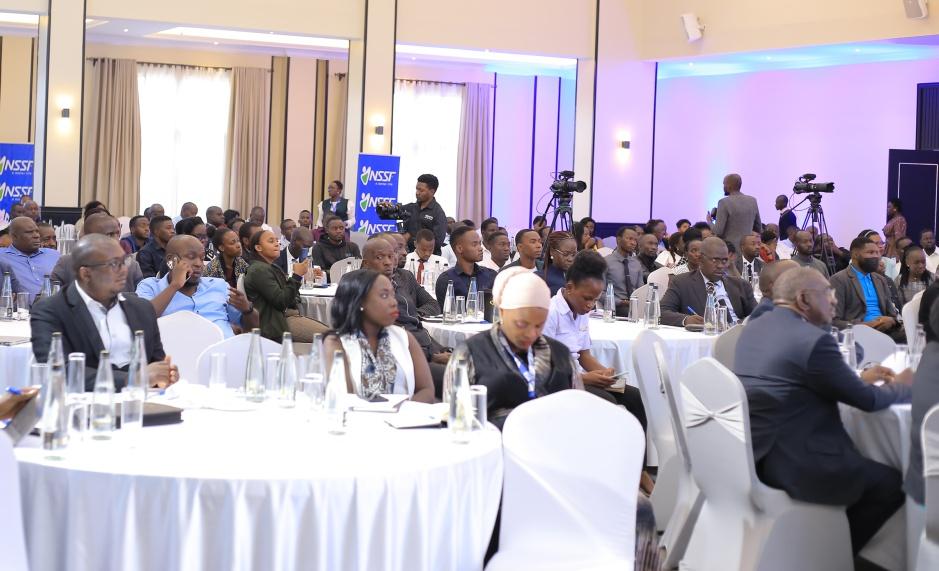
The PDU creates value by acquiring high-quality inputs at competitive prices through market analysis and negotiations achieving savings of UGX 2.2Bn
In FY2023/24, over 150 unique suppliers were engaged, with 84% being local contractors. We applied reservations to promote local content and special groups, including women, youth, and persons with disabilities.
The introduction of a contract management system and contract management index has ensured the timely provision of essential goods and services. We also protect the environment by conducting annual disposals of items such as IT equipment, furniture, and tyres for re-use or recycling.
For FY2024/25, we have initiated several strategic procurements, including:
• Additional Works for Pension Towers at UGX 51.0Bn • Procurement of an Enterprise Resource Planning Solution at UGX 5.8Bn • VirtualAnalytics Environment at UGX 2.7Bn

The PDU is strategically aligned with Vision 2035, focusing on relationship management, cost optimisation, and stakeholder fulfillment. We leverage data management, internal and external engagement, and partnerships with key service providers. Our FY2024/25 focus includes reserving at least 30% of the procurement plan for special groups, engaging more with regional suppliers, conducting total lifecycle costing, and creating a baseline for evaluating supplier practices.
We are committed to further integrating innovation and sustainability into our procurement practices to enhance our impact and effectiveness.

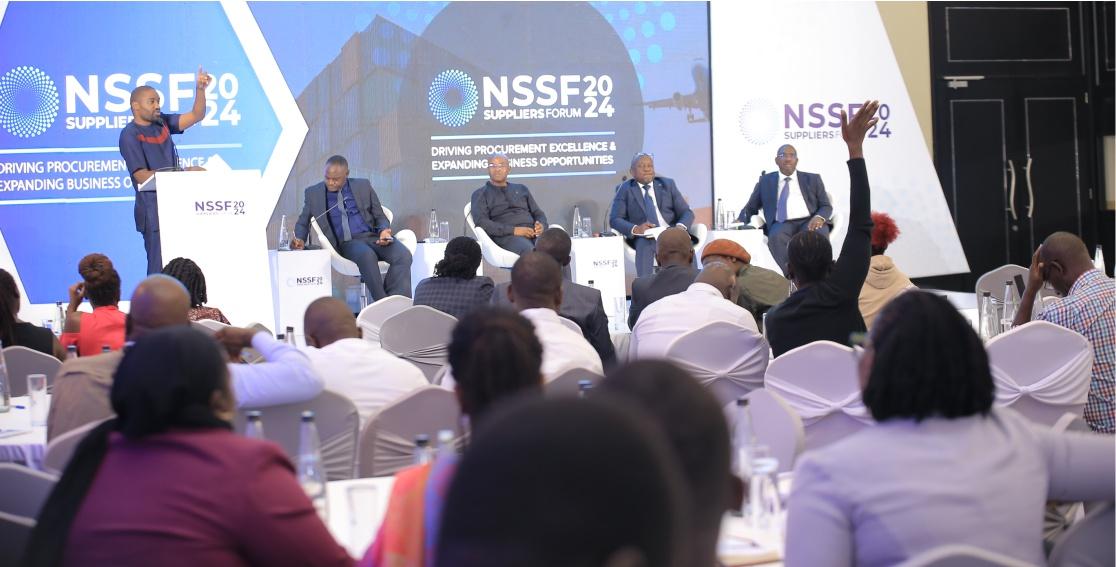
Last year, NSSF established and opened a Liaison Office to manage International Social SecurityAssociation (ISSA) activities across EastAfrica.This office also serves as the main contact for theAfrica Social SecurityAssociation (ASSA, formerly ECASSA) and the International Labour Organisation (ILO), among others.
The Fund's Managing Director oversees the Liaison Office and holds several key positions: Chairperson of the ISSAEast Africa Liaison Office, member of the ISSABureau, Vice Chairperson of the ISSATechnical Commission on Investment of Social Security Funds (TC Invest), and member of theASSAGoverning Council.
Key achievements of the Liaison Office in FY2024 include:
1. ISSATC Invest participation: The Fund's Managing Director contributed to updating ISSAguidelines on investing social security funds, which will be adopted globally by ISSAmembers.
2. EAC policy contributions: We reviewed and provided input on the EAC Decent Work Programme and the draft EAC policy on social protection.
3. International benchmarking: Enhanced visibility led pension funds from SaudiArabia, Zambia,Tanzania, Zimbabwe, and Eswatini to benchmark their practices against ours.
4. Capacity building: Over 40 staff members attended seminars and training sessions organised by ISSA, ASSA, ILO, and EAC.The Fund also hosted aTechnical Seminar inAugust 2023, drawing approximately 80 local and international participants.
5. Collaborative innovation: The Fund was selected to lead a project with the ISSACollaborative Innovation Hub on behavioural insights for workers in the informal sector, recognising our efforts to expand social security coverage.Atoolkit will be developed upon project completion for global ISSAmember use.
The Liaison Office continues to foster relationships with ISSA, ILO, and social security schemes in EastAfrica and explore new opportunities, such as a self-financed Social ProtectionTraining Centre tailored to local needs.

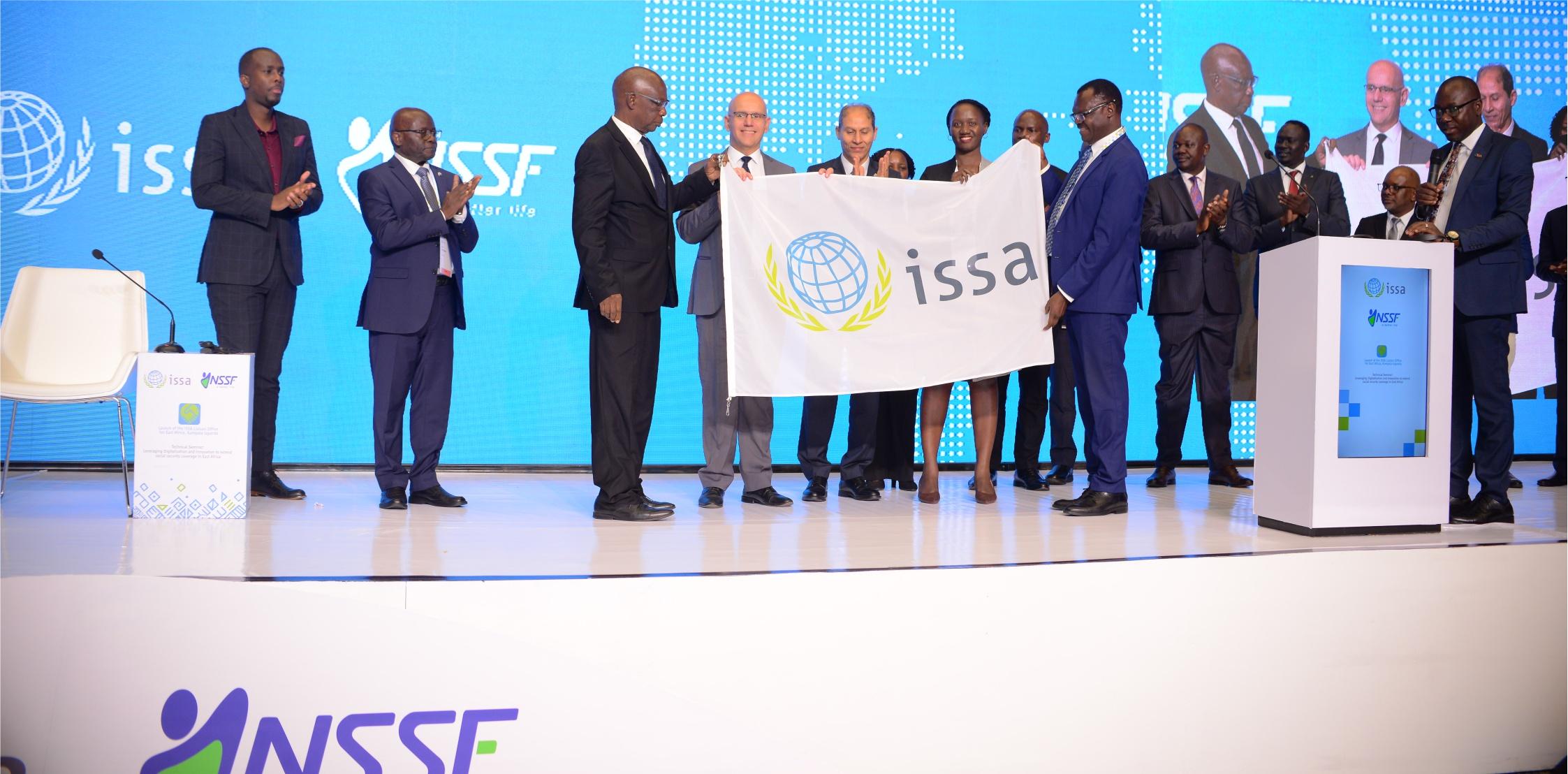
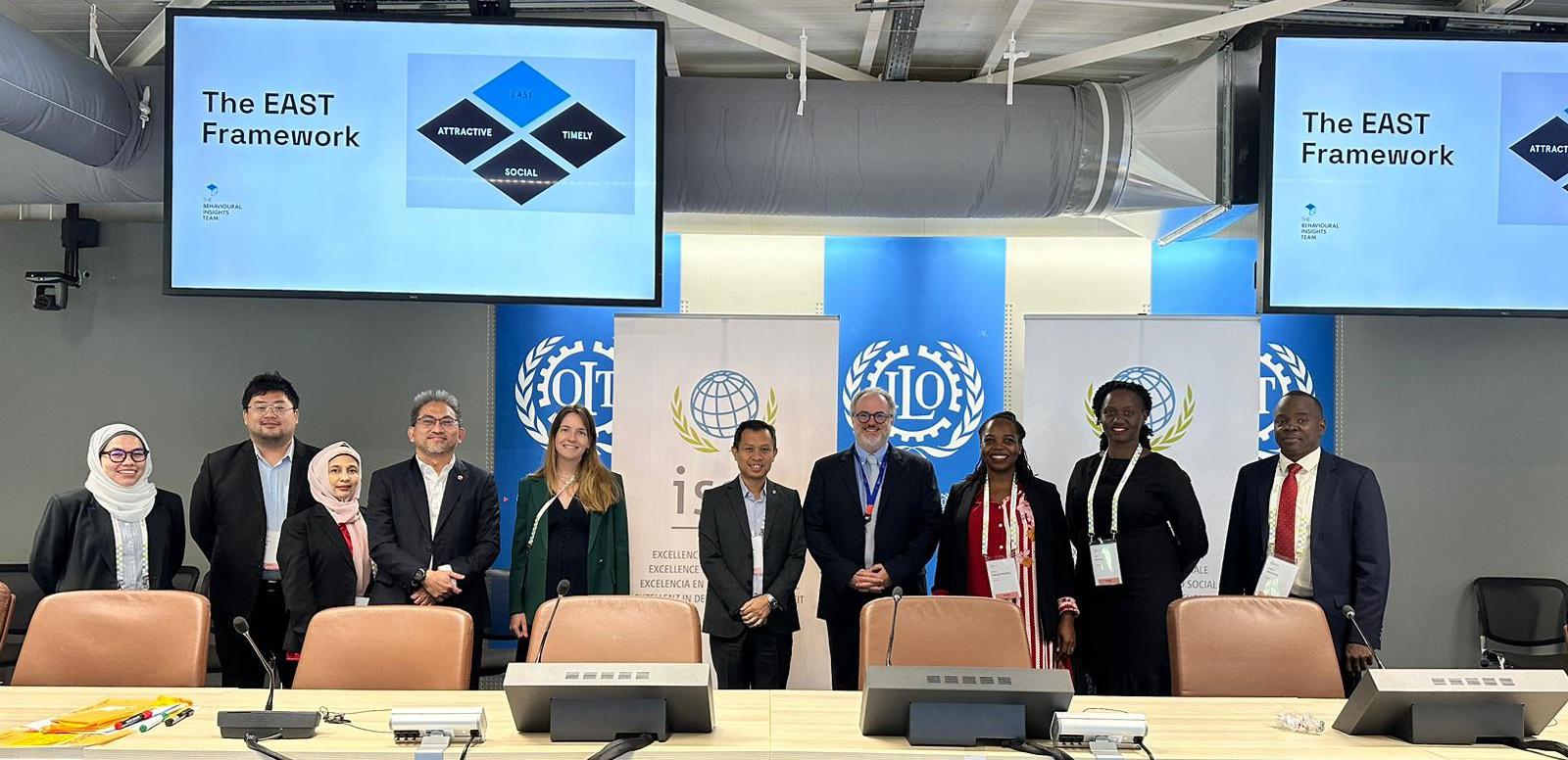
As a responsible corporate citizen, NSSF is committed to creating sustainable value through our corporate social investment (CSI) initiatives.These activities are aligned with ESG principles, demonstrating our dedication to environmental stewardship, social impact, and good governance. By focusing on long-term solutions and incorporating ESG considerations into our decision-making, we are striving to contribute to a better future for all.

As a responsible corporate citizen, we believe in creating a positive impact on our members, stakeholders, and society Our corporate social investment (CSI) initiatives are designed to deliver lasting value through sustainable solutions that address social, environmental, and economic needs.
To create lasting value for our members, the Fund is committed to implementing sustainable initiatives and solutions as follows:
Our Financial Literacy Programme aims to equip our members and the public with the knowledge and tools to make informed financial decisions throughout their lives.This initiative was launched in 2019 following a 2018 survey that highlighted a concerning trend: 90% of NSSF's beneficiaries were depleting their savings within two years without realising long-term benefits. By promoting responsible financial behaviour, we aim to foster shared prosperity and improve the overall wellbeing of our members.
Read more about our Financial Literacy Programme
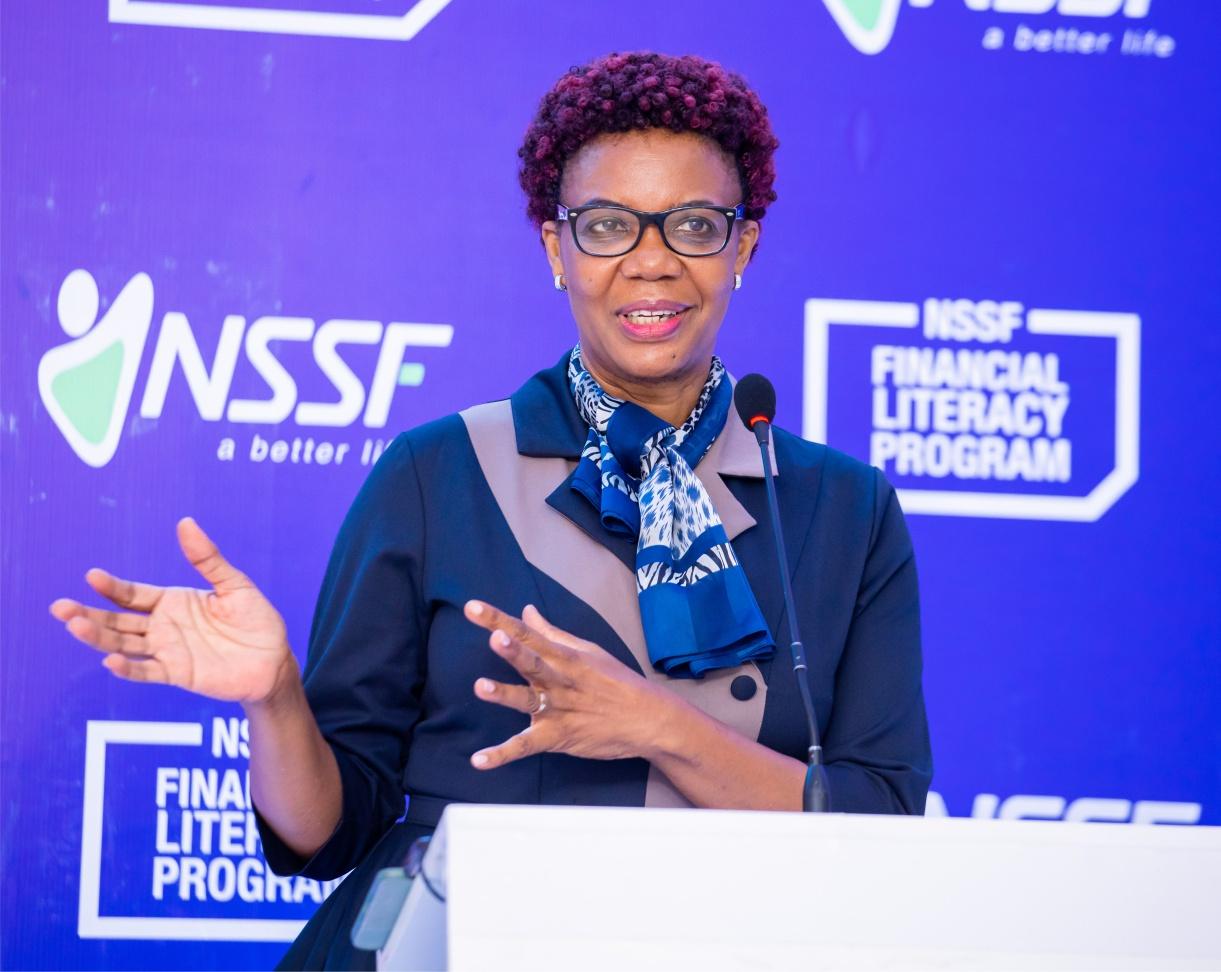
The NSSF Hi-Innovator Programme, launched in partnership with the Mastercard Foundation, is a five-year initiative dedicated to empowering youth and small and medium-sized businesses (SMBs) in Uganda.Through entrepreneurial education, funding, and technical support, the programme aims to foster sustainable growth and create employment opportunities.
Since its inception inAugust 2020, Hi-Innovator has focused on supporting businesses that often struggle to secure the necessary financing and resources for expansion. By providing seed funding, mentorship, and access to business networks, the programme helps entrepreneurs develop their skills, scale their businesses, and contribute to economic growth. The Hi-Innovator WomenAccelerator is a specialised component of the broader initiative, aimed at empowering women-led businesses in Uganda.This segment was developed in response to challenges such as low participation, lack of confidence, gender stereotypes, time constraints, and fear of failure among women entrepreneurs.
Stitching dreams: How Mtindo trains youth and women in tailoring
Watch the video here

At the Fund, we believe that innovation is the cornerstone of our success. By cultivating a culture that encourages creativity, experimentation, and continuous improvement, we can enhance employee engagement, deliver exceptional member experiences, and drive sustainable growth.
To drive sustained growth, several internal innovation initiatives are being undertaken.
This year, our Black Swan andTrailblazers initiative has achieved noteworthy progress. By combining these two programmes, we organised interactive financial mindset workshops for artisans. These workshops, which focused on personal aspirations and financial planning, successfully shifted the mindset of participants. Through storytelling, practical advice, and digital platforms, we empowered artisans to make informed financial decisions, save for their future, and improve their overall well-being.
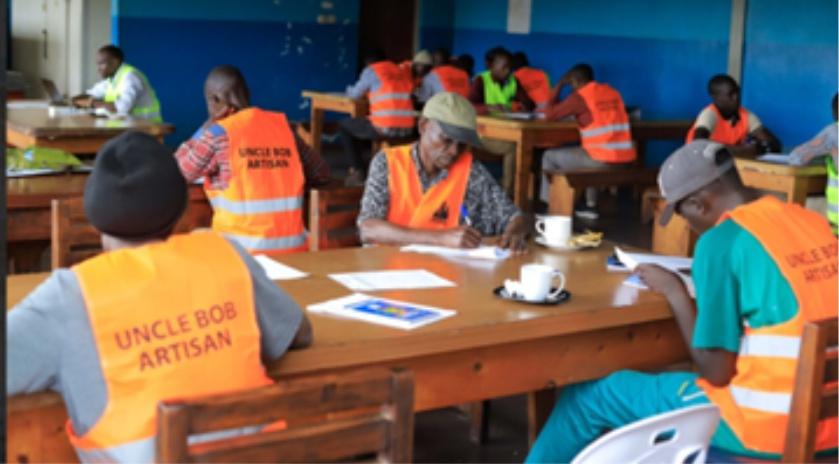

The NSSF Beneficiaries Survey 2024, conducted in partnership with Enterprise Uganda, explored how NSSF benefits are utilised and perceptions toward retirement.The survey revealed that most beneficiaries spent their benefits on nonincome-generating expenses, with 40% on children's education, 34% on building homes, and 33% on acquiring land. Only 28% invested in income-generating activities, such as businesses and agriculture, while 16% used the funds for food.
The report highlighted concerns that these spending patterns undermine a decent standard of living after retirement, with many beneficiaries, particularly those aged 56-60, supporting multiple dependents and remaining in full-time employment.
Crucially, the survey underscores the importance of entrepreneurship, business, and financial literacy skills for current members, as many are likely to venture into business when they receive their benefits. Enhancing these skills is essential for maximising benefits and ensuring a sustainable retirement.The survey sampled 1,129 savers, with varying types of benefits received.
NSSF national beneficiaries survey report
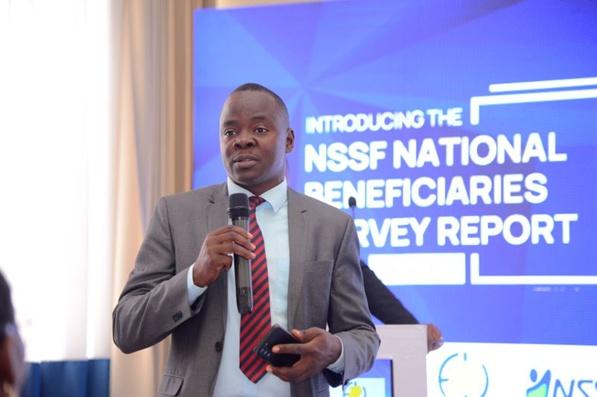

“I am pleased to present our Corporate Governance report for the FY2023/24, which has been the final year of the 12th Board in office. I take this opportunity to congratulate my fellow Board members for successfully completing their term. I commend the Board and Management for their great leadership in upholding good governance and ensuring that the Board's mandate is delivered.”
Dr. Peter Kimbowa, Chairman, Board of Directors


On behalf of the Board, I commend the Management and staff for the recovery and resilience demonstrated after the disruptions of the Fund operations by six probes over an eight months' period.The Fund continues to exceed the key performance targets in terms of portfolio growth, member satisfaction, efficiency in its processes and staff satisfaction. Sustainability and ESG are part of components of the Vision 2035 and the Board will continue to promote this agenda through creation of awareness, strategic planning and policy formulation, provision of oversight and guidance.
Our corporate governance structure and practices have enabled us to create value for the Fund, our members and all our stakeholders in this ever-changing environment.
Our governance report sets out our robust approach to sound corporate governance and alignment to King IV principles, our mandate as the Board, together with reports from each Board Committee and activities executed in the FY2023/2024 financial year
The Board, being the overall custodian of good corporate governance, together with the ManagementTeam, promotes and upholds the core fundamental principles of governance; accountability, fairness, transparency, and social responsibility in the way we conduct business and in all our processes.
Our integrated report discloses our performance to our members, our stakeholders, and the public as a commitment to our accountability and transparency
The Fund held anAnnual Members' Meeting on 26 September 2023, where the financial performance, the audited financial accounts, the Integrated Report, and the inaugural ESG/Sustainability report were presented to our members and all stakeholders.
The Board's approach is to ensure that corporate governance is embedded into the strategic objectives, operations, and internal processes of the Fund's business.The Board is committed to keeping abreast with new corporate governance trends from an international, regional, and local perspective in the fulfilment of its vision to become the social security provider of choice to its members and generate tangible sustainable returns.
The Board continues to
• Inspire and rebuild trust within the Fund and the public.
• Clarify on the Fund business purpose.
• Provide a culture of constant measurement through feedback and reinforcement.
• Harness team-based approaches within the Fund.
Finally, I express immense gratitude to the supervising ministries, fellow agencies, the outgoing Board, the Management team, and staff for the unwavering support exhibited during this tenure.
The Fund's governance approach is based on the main principles and provisions set out in the UK Corporate Governance Code and the King IV Code on Corporate Governance.
The Fund adheres to and ensures full compliance with the provisions of the National Social SecurityAct Cap 230 that regulates the Fund's activities.The Board also adhered to all other laws that affect the regulatory environment of the Fund's operations and supported management in ensuring full compliance.
The Board is also governed by the Board charter which stipulates the parameters within which the Board operates and ensures the application of the principles of good corporate governance in all its dealings.The charter sets out the roles and responsibilities of the Board, its committees, and individual Directors, including its composition and relevant procedures of the Board.The charter is aligned with the provisions of the UK Code and King IV Code on Corporate Governance.The Board charter was reviewed to align with emerging trends in good governance.
The way we have continued to apply these governance principles is demonstrated throughout the report.The Board confirms that the Fund, throughout the period under review, complied with all applicable laws and regulations.
• Implementation of the provisions of the NSSFAct 230 and support to the formulation of the regulations to operationalise the amendments.The implementation of mid-term access and the livelihood programme have been key during the current tenure
• Board dynamics.The Board is constituent based and the dynamics within have been well maintained
• Productive navigation and corroborative definition of our agenda between the various stakeholders, especially among the two principal supervisors
• Digital transformation within the Fund
• Launch of Vision 2035
• Integrating the Fund strategy into the National Development Plan (NDP3) to make the Fund more visible and economically useful to Uganda's development
• Support to the Management team to implement agile roadmaps
We were delighted to report that the Fund received special recognition for good Corporate Governance Reporting at the Financial Reporting (FiRe)Awards 2023.
This result reflects the focus and commitment by the Board and Management upholding the core fundamental principles of corporate governance.
Performance overview of the Board

• Achieved and exceeded the targeted assets under management of UGX 20Tn ahead of time
• Evaluation of the Board performance.The Board and each member achieved a good performance rating
• Information architecture in the Fund.The Board has continued to receive accurate and complete information in a timely manner that has facilitated decision making
• Creation and scale up of various projects such as Hi-Innovator Programme and the proposed National Marketing Company (NAMCO) among others
• Introduced executive coaching for senior leaders of the Fund especially in management and performance enhancement
• Embedded digital and analytics to grow legacy businesses and create new ones
• Reshaping the balance sheet and cost structures through successful budgeting
• Implementation of the NSSFAgency model to enhance service delivery and accessibility for members
Challenges during the FY2023/24
• Multiplicity of probes/ investigative inquiries which brought disruptions and affected morale of employees
• The emergence of unprecedented risks due to the ever-changing global landscape
• Land challenges which stemmed from double titling by the Ministry of Lands, Housing and Urban Development in 2019
• Board Dynamics. Creating and maintaining a cohesive, focused, and dynamic team at the Board
• Whistleblowers. Managing the multiplicity and complexity of authorised and non-authorised information
Outlook
Technology The Board working with Management would like to drive the Fund as a technology company guided by data and algorithms for decision making and processes.There is need to upskill, reskill and attain new skill to enable the Fund to achieve a cutting edge for tech driven strategies.
Human Capital Development Continuous learning agenda for staff. Putting people at the centre of the corporate purpose.
Innovation Drive innovation hubs in the Fund.
Diversification Emphasis should be to diversify the Fund's investments across various asset classes, sectors, and regions. Explore opportunities in alternative investments.
Collaborative Partnerships
Collaboratively determining the next value working with others in partnership.
Knowledge Data driven knowledge. Decisions and analysis should be supported by data.
Ethical Standards Integrity of our processes.
Resilience The Fund should be able to withstand pressure from the external environment.
Sustainability Broaden and deepen the footprint in sustainability.

“The Legal and Board Affairs Department of the National Social Security Fund continues to evolve into a business value creator. The Department being an approved Law Chamber operates on private legal practice norms in delivering its mandate.“
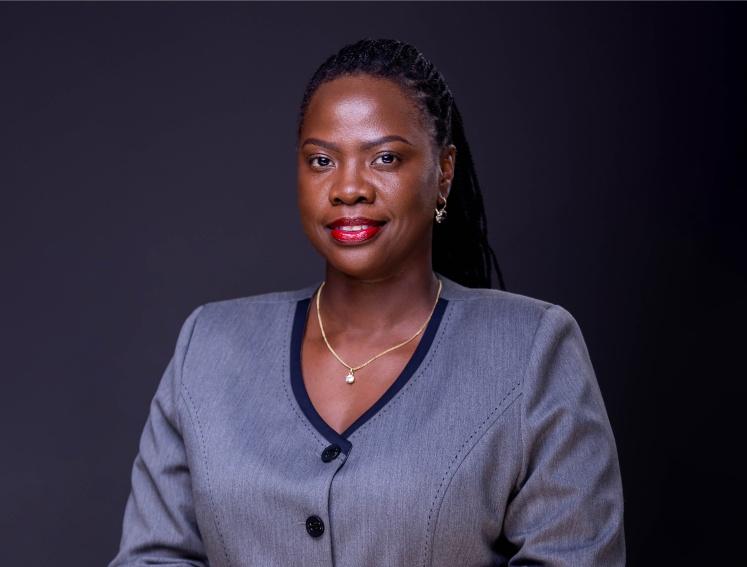

During the year in review, together with the relevant stakeholders, we conducted legal aid clinics on laws pertaining to employment law, financial fraud awareness, intellectual property rights and artificial intelligence.The legal aid clinics have enabled us focus on building long term partnerships with our stakeholders and to also jointly address social and environmental issues.
efforts
The Department has worked closely with the Board to ensure that we adhere to ethical business processes and enhance the Fund's reputation.Together, we have advocated for clear and transparent governance practices to build trust with our members and stakeholders for long term sustainable growth.
The Legal Department provides independent legal advice to all functions across the organisation by ensuring that they comply with all laws and regulations that are in place thereby avoiding legal risks and ensuring long term sustainability. In driving sustainable growth, the Department ensures that in all contracts that are executed, sustainability clauses are embedded, and sustainability practices are adhered to. In drafting and reviewing our policies, we ensure that they comply and are aligned with laws promoting diversity, equity, and inclusion.
Legal risk management has also remained key on the Department's agenda which has enabled us to proactively address legal risks which could impact on the Fund's business and minimise the litigation against the Fund.As a department, remittances of the members contributions are key on our agenda and during the year under review, we were able to collect close to UGX 8Bn of unremitted contributions through our recovery processes that are aligned to the strategic goals of the Fund.
Following the amendment of the NSSFAct, we have supported the various Departments in ensuring that the new provisions are implemented seamlessly without any disruptions to the Fund's Business, members, and all stakeholders.The amendment of the NSSF Act has made it possible to extend the Fund's coverage to the informal sector, we are therefore working with several stakeholders to render support in the formulation of voluntary regulations to deliver value to both the members and our stakeholders for long term sustainable growth.
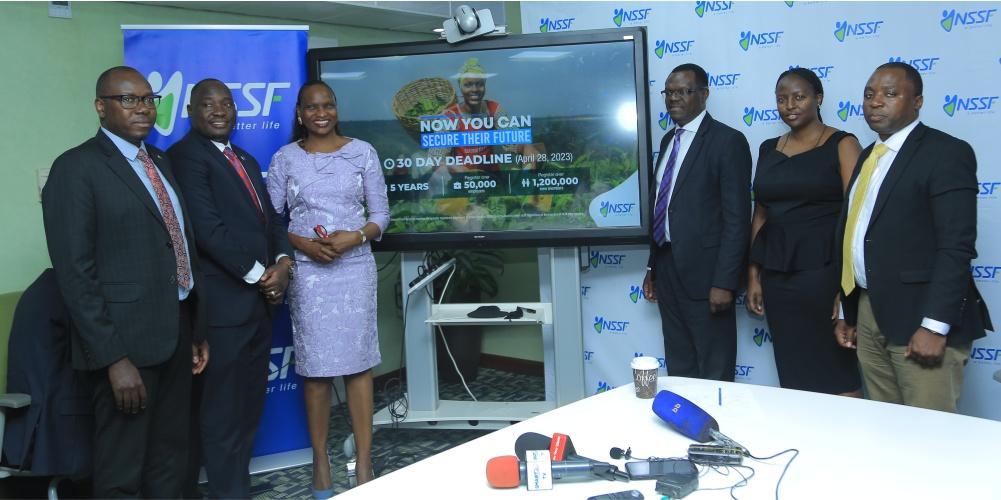
“Anew day” has given us the opportunity as a department to evolve and devise solutions that will offer long-term value to our members and stakeholders without compromising the regulatory environment in which we operate.
We shall continue to leverage on strategic partnerships in the coming year to continuously improve our processes, sensitise the internal staff, our members, and key stakeholders on the provisions of the NSSFAct and emerging trends in laws that impact our business and operations.
We shall continue to support the business in the development of new benefits and products for our members sustainable growth. We shall continue to re-skill our staff on legal aspects of sustainability and evolve to automate our processes to improve our service delivery
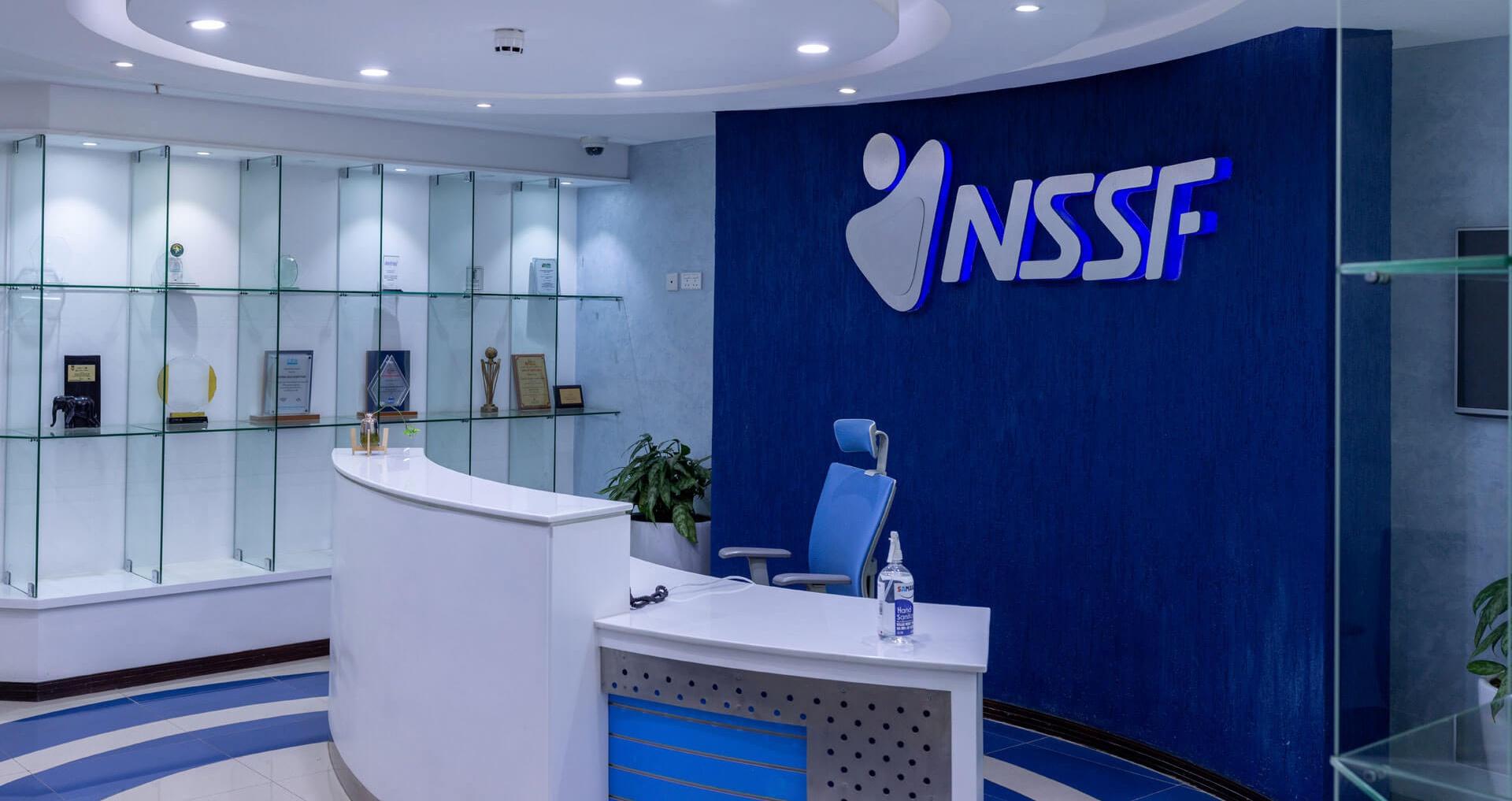
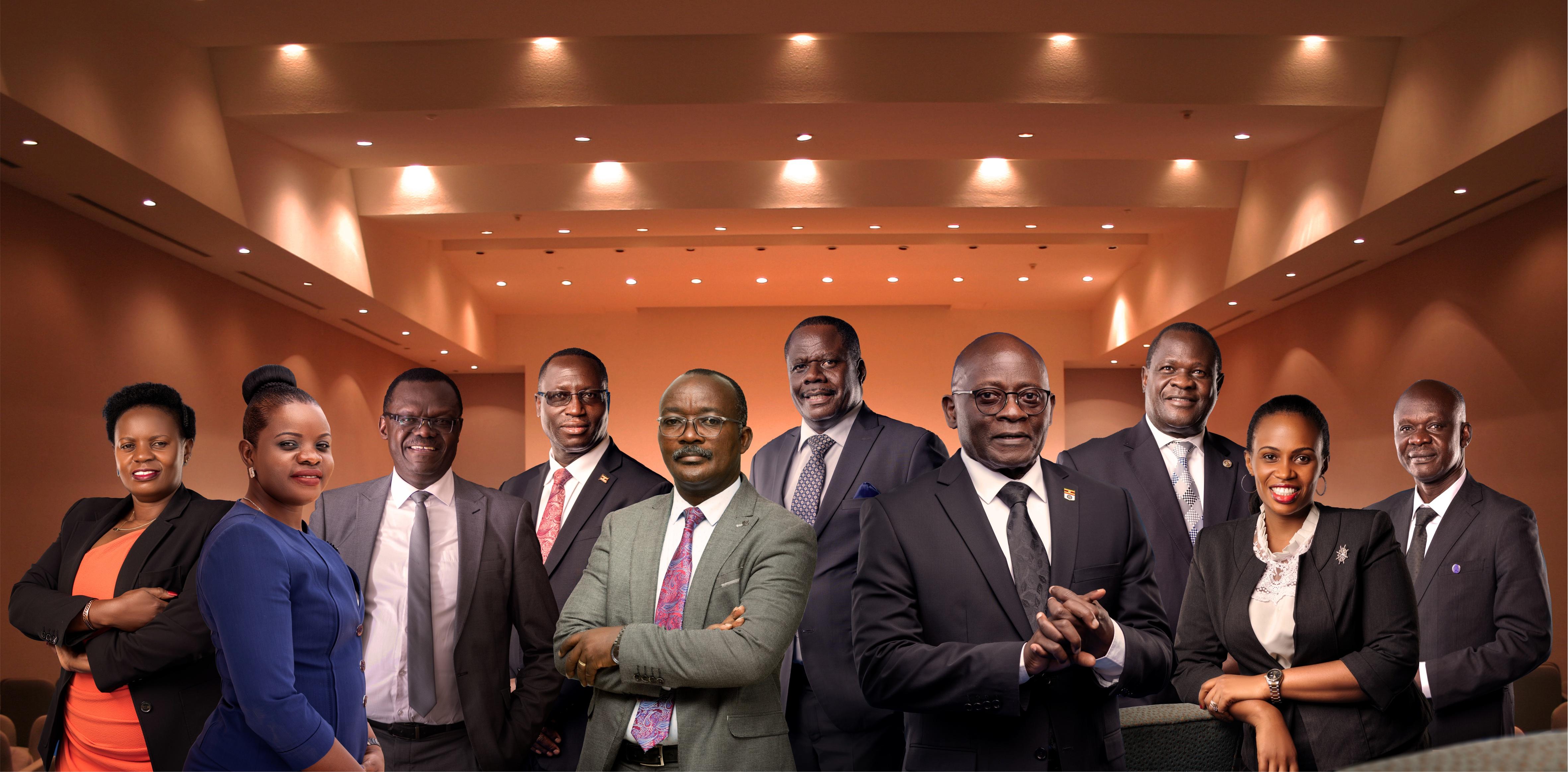

Dr
Chairman Board of Directors Private Sector Representative
Appointed September 2021 Tenure 2 years 10 months
Qualifications
• Ph.D.- Commonwealth University/ London Graduate School
• MBA (Strategy) -Maastricht/ ESAMI
• Internationally Certified Coach – Cert. No. 12322 by International Coach Federation (ICF)
• Certified member - American Management Association
• Certified member- Harvard Business Review
• Certified member – Association and McKinsey Global
• Internationally Accredited Clarity 4D Trainer
• Business Partner, Strathmore Business School (SBS)
Expertise
• Governance
• Global Leadership Catalyst
• Coach
• Author
• Speaker
• Organizational and Transformational work
• Learning from the future
• Strategy
• Sustainability Projects
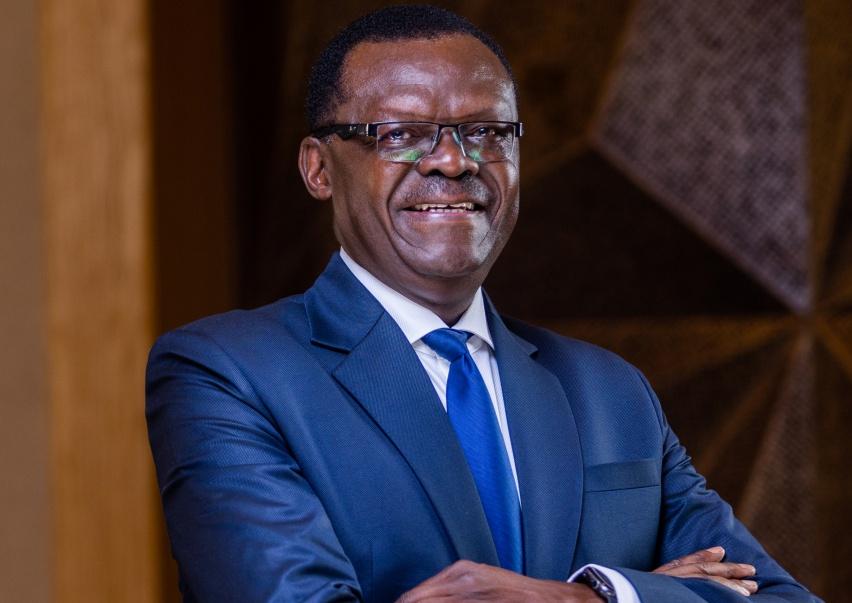
Managing Director
Appointed December 2022 Tenure 1 year 7 months (on the Board)
Qualifications
• CPA(U) Certified Public Accountant of Uganda MBA - University of South Carolina, USA Bachelor of Science Degree in Finance - Liberty University, Virginia, USA CPA - Georgia USA
Expertise
• Strategy formation and execution Innovation
Financial reporting and accounting Taxation
Leadership Project management
Financial Analytics

Patrick Ocailap Non-Executive Director Government Representative from the Ministry of Finance Planning and Economic Development (MOFPED)
Appointed December 2013 Tenure 11 years 7 months
Qualifications
• Master's Degree in Development Economics- William College, Massachusetts (USA)
• Bachelor of Commerce Degree (Finance)-Makerere University (Uganda)
• Certified Public Private Partnerships (PPP) Member from the Institute of Public Private Partnerships -IP3 (USA)
• Certificates in Public Finance, Tax Policy Statistics and Administration, Management, Strategy, and Leadership
Expertise
• Development Economics
• Public Policy and Financial Management
• Strategy formation and execution
• Financial reporting, accounting, and taxation
• Risk Management
• Project management
• Governance and Compliance

Dr. Silver
Non-Executive Director Representative Federation of Uganda Employers
Appointed September 2021 Tenure 2 years 10 months
Qualifications
• Ph.D. in Engineering and Economics and Management from Makerere University – Uganda in Collaboration with PURC-University of Florida, USA
• MSc. Sanitary Engineering (Sector Utility Management)IHE Delft-Netherlands
• BSc. Civil Engineering- Makerere University-Uganda
Expertise
• Organisational development
• Business process re-engineering
• Capacity development, networking and partnerships development
• Performance development planning and implementation
• Project management, negotiations and financing
• Strategic management and enterprise reforms
• Performance monitoring and regulation
• Human resources development and productivity analysis
• Performance incentives design and benchmarking
• Cost-benefit analysis
• Hydraulic structures and design
• Management of Water supply and sanitation systems
• Public-Private Partnerships
• Operations research and industrial organization
• Stakeholder mapping and buy-in
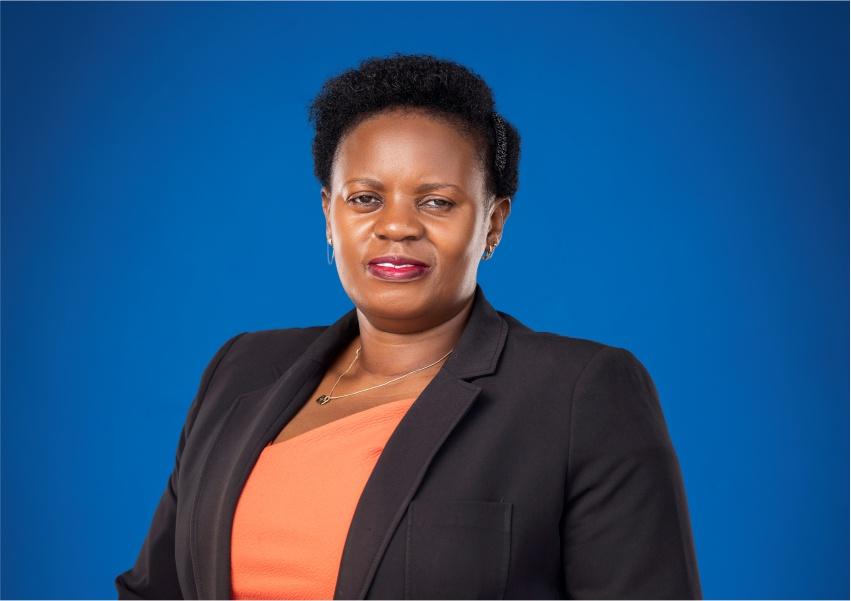
Non-Executive Director Representative Federation of Uganda Employers
Appointed February 2022 Tenure 2 years 4 months
Qualifications
• Master's in Business Administration majoring in FinanceMakerere University Kampala. (2006 to 2009)
• Postgraduate Diploma in Financial Management - Uganda Management Institute. (2006 to 2009)
• Bachelor's Degree in Arts - Makerere University Kampala (1995 – 1998)
• Strategic Leadership in Inclusive Finance - Harvard Business School (USA).
• Business Continuity Management Certificate in ISO 22301 Foundation.
• Balanced Scorecard Professional (BSP) - George Washington College of Professional Studies (USA) (September 2011)
• Advanced Leadership Training - Wharton Business School, University of Pennsylvania (USA). · Expertise
and Performance Management
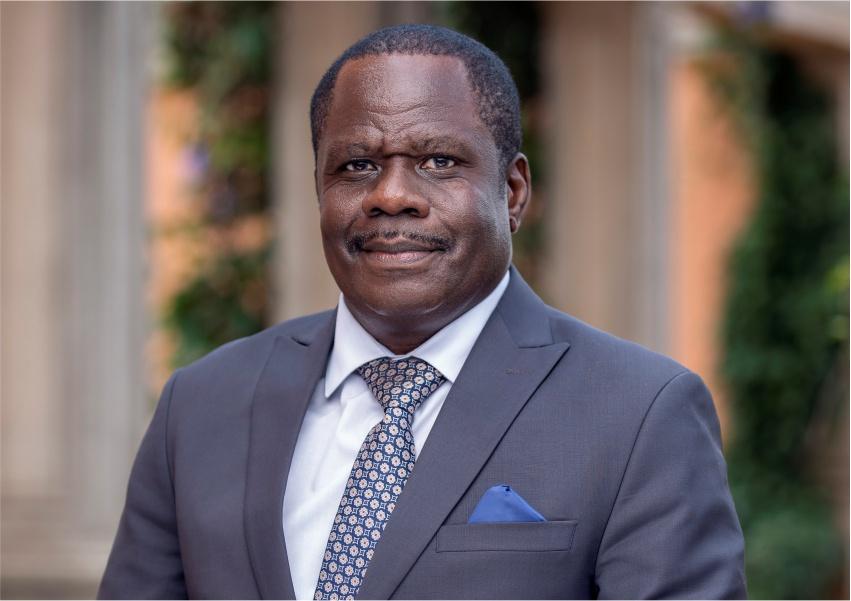


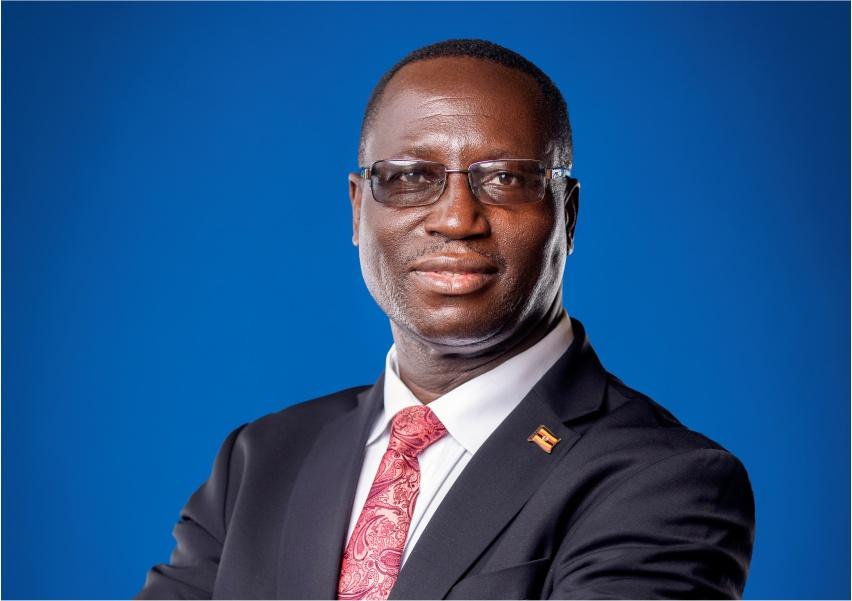

Secretary, Ministry of Gender Labour and Social Development)
Appointed September 2021 Tenure 2 years 10 months
Qualifications
• Bachelor of Medicine and Bachelor of Surgery - Makerere University, Uganda
• Master of Business Administration
• Master of Science in Community Health
• Master of Public Administration and Management
• OakSeed Executive Leadership Course of the Institute of National Transformation (INT), USA
• Leadership Training Programme on Servant Leadership of the Sundoulos African Leaders' Training (SALT) Programme in Partnership with Development Associates International, USA
• Course in Key Labour Market Issues in Africa of the World Bank Institute, Global Development Learning Network Centre, Uganda Management Institute
Expertise
• Medicine and public health
• Occupational health and safety
• Human resource management and public administration
• Leadership
• Legislation and representation
• Social security and health insurance
• Business administration
• Human rights, labour rights and labour markets
• Stakeholder and people management
• Strategic and proactive management
• Lobbying and critical thinking
Appointed September 2015 Tenure 8 years 10 months
Qualifications
• Master of Laws (Makerere University (Uganda)
• Post Graduate Diploma in Legal Practice -Law Development Centre • Bachelor of Laws-Uganda Christian University
• Legal Expertise
Labour Law and Arbitration
Human Resource Management and Development
• Corporate Governance
• Employment Advisory
• Commercial Law
• Dispute Resolution
• Taxation
Appointed September 2021 Tenure 2 years 10 months
Qualifications
• Bachelor of Laws Degree from Cavendish University Uganda (CUU).
• National Diploma in purchasing and supplies management from Nakawa Institute of Business Studies (NIBS)
• Law
Procurement • Labour rights
Organizational Management • Negotiation skills & Alternative Dispute Settlement skills (ADR)
Appointed November 2020 Tenure 3 years 8 months
Qualifications
• Master of Public Administration and ManagementMakerere University Kampala
• Bachelor of Education-Makerere University
• Diploma in Education- National Teachers' College, Kakoba
• International Advanced Trustee Professional Development Course from the Johannesburg School of Finance 12th to 16th February 2024 Zanzibar, Tanzania
Expertise
• Education
• Leadership
• Strategy formation and execution
• Risk Management
• Project Management
• Public Policy
• Business Development
• Governance and Compliance
• Project Management
Appointed February 2022 Tenure 2 years 4 months
Qualifications
• Masters in Management Studies
• Post Graduate Diploma in Hospital and Health Care Management from Uganda Management Institute
• Bachelor of Science Degree in Nursing Science from International Health Science University
• Certificate in Registered Nursing from Mulago School of Nursing and Midwifery
• Certificate in Enrolled Nursing from Kabale School of Nursing and Midwifery
• Professional nurse
• Lobbying and Advocacy skills
• Labour laws and international labour standards
• Strong leadership and teamwork skills
• Strategy formulation and direction
• Interpersonal, motivational, Counseling and guidance skills
• Report writing skills
• Investment Management skills
• Monitoring and evaluation skills
• Analytical skills
• Risk management and Prevention skills
• Retirement management and trust ship skills
The Board comprises Directors with a wide variety of skills and experience to effectively lead the strategic direction of the Fund.The 12th Board is diverse and balanced.
The Stakeholder Board is headed by the Chairman and consists of:
• Ten Directors appointed for a three-year term renewable once in line with Section 3 of the NSSFAct Cap 230
• Directors represent each of the key stakeholder groups of members, employees, employers, and Government, and include:
- One Executive Director (ex-officio); and
- Nine Non-Executive Directors
As of 30 June 2024, eight of the Non-Executive Directors were independent as defined in the governance codes and our Board Charter, which represents 88% of the Board.
Directors are considered by the Board to be independent of Management and free from any business relationship or other circumstance that could materially interfere with objectivity, unfettered or independent judgement.The independence of each Director is assessed annually by the Board as part of its annual Board Effectiveness Review and in conducting its current assessment, it was concluded that all Directors continue to bring strong independent oversight and demonstrate those qualities and behaviours it regards essential to be considered independent as set out in their terms of reference and Board Charter.
The Chairman is independent and in line with best practice, his roles are separate from those of the Chief Executive Office.
The Minister responsible for Social Security, currently the Minister of Gender Labour and Social Development, appoints Directors for a three-year term renewable once.The MD is recommended by the Board and appointed by the Minister Under section 3(4) of the NSSFAct Cap 230, a Director may, by writing in his/her hand a letter addressed to the Minister of Gender, resign his/her office.
During the year under review, Mr. Patrick MichealAyota was appointed to the Board as an Executive Director following his appointment as the Managing Director of NSSF on 18thAugust 2023.
The term of office for Dr Peter Kimbowa, Mr Patrick Ocailap and Mr Lwabayi Mudiba Hassan ended on 31August 2024.
On 1 September 2024 Dr David Ogong was appointed as the new Chairman. On the same day, Mr Ramathan Ggoobi and Mr Richard Bigirwa were appointed as new members of the Board.
The Board appoints the Fund's senior management/Executive Committee.The Board is responsible for succession planning for key management roles. During the year under review, the Board considered and approved the appointment of Rhona Kyomuhendo asActing Head of Procurement and Disposal Unit.
The Board further reviewed the management composition and succession planning to ensure that the successors for key roles, including that of the MD and Deputy MD, are identified and their performance assessed.
The Board considers that the development of industry and Fund knowledge is a continuous and ongoing process. Upon joining the Fund, each Director undertakes an induction programme to further their understanding of the nature of the Fund, its business, and the environment in which it operates, and enhance their knowledge of the Fund's operations and staff.The induction programme is tailored to each new director, depending on individual experience and background.
The Corporation Secretary maintains the Directors' annual training records for regular review by the Board.
In addition to Directors' attendance at meetings and review of relevant materials provided by Management during the year, they attended professional training to enhance their skills and knowledge.
The programme was designed to support the NSSF board of directors in managing their risks and practicing good corporate governance.This provides a competitive advantage, as they consciously take risk management into account, anticipate adverse changes, hedge, and protect themselves from such changes, thereby reducing negative financial outflows.
The programme equipped the NSSF Board members with the essential legal, investment and related knowledge required to become effective trustees and oversee their fund's activities with confidence.
The training for the Investments and Project Monitoring Committee members was designed to equip them with an understanding of investment policy portfolio management, and asset diversification. It also enhanced their knowledge of governance in the context of aTrustee Board and the legislative requirements for investing scheme assets.Additionally, the training covered the management of different asset types, including equities, bonds, real estate, and alternative assets such as private equity and hedge funds.
The training for theAudit and Risk Committee members was designed to enhance their understanding of cybersecurity, compliance, and audit functions. It also focused on improving financial reporting, risk management, fraud prevention, and ESG governance.Additionally, it aimed to equip members with the skills to develop and execute an effectiveARC workplan.
The training was aimed at equipping the Finance Committee members with skills to effectively manage and oversee financial operations, ensure compliance with legal and regulatory requirements, and enhance their ability to mitigate and manage financial risks.
At the International Labour Conference, delegates addressed topics such as protection against biological hazards, fundamental rights at work, and the care economy The Conference also elected the Governing Body for the 2024-27 term.
The training focused on rebuilding trust and teamwork within the NSSF Board and EXCO after a period of external scrutiny and probes from Parliament.The programme aimed to restore the organisation's morale and performance by addressing relational challenges, fostering a people-centric culture, and preparing the NSSF to better withstand future shocks.
As part of the Continuous Professional Development Programme, the Board members from time to time receive presentations from senior executives in the Fund on significant matters.The Fund also arranges appropriate regional branch visits and seminars covering the Fund's operations, the industry and governance matters for the Directors to facilitate their understanding of the Fund business and risks associated with the Fund's operations.
The Board and Management also periodically meet to discuss the strategy of the Fund and how best it can be aligned to the needs of the members.
Continuous development of the Board and Management remains a key area in a bid to improve corporate governance. In the year under review, the Board, EXCO together with the InternalAudit, Risk and Legal and BoardAffairs Department were trained in Integrated Reporting and CombinedAssurance.
This has enhanced the level of reporting by Management to the Board, thus strengthening leadership capability and focusing on strategic issues.
TheAssurance Departments have also devised a work plan to strengthen collaboration of the assurance functions in executing their assurance roles, but at the same time not impairing their independence.
The Chairman shall preside at all meetings of the Board, but in his absence any member appointed on his behalf by the members present shall preside.The Board shall meet for the discharge of its functions at least once every three months at such time and place as the Chairman may appoint or upon the request of most of the Board members.
Asimple majority of the members present shall take decisions of the Board and voting, with the person presiding having a casting vote.
Section 5 (5) NSSF of theAct empowers the Board to invite or co-opt any person to attend any Board meeting or be consulted as an independent advisor, but such a person shall not be entitled to vote on any matter being decided by the Board at that meeting.The Board shall determine the area or field where professional advice is required. Management follows the PPDArules and regulations to engage the advisors so required. Management therefore co-opted the services of Engineer Kenneth Ssemwogerere and Mr. Felix Okoboi as Investment and Project Monitoring CommitteeAdvisors together with Mr Albert Richards Otete as theAudit and RiskAssurance CommitteeAdvisor
Peter Kimbowa
Mr. Patrick Ocailap
Mr Aggrey Kibenge
Dr. Silver Mugisha
Dr. Sam Lyomoki
Ms.Annet Birungi
Ms. PeninnahTukamwesiga
Ms.Annet Nakawunde Mulindwa
Mr. Lwabayi Hassan Mudiba
Mr. PatrickAyota
The Fund's governance structure is illustrated in the NSSF Governance Structure diagram and shows the interaction between the members and the Board, demonstrating how the Board Committee structure facilitates the relationship between the Board and the MD and indicates the flow of delegation from members. We have robust processes in place to ensure that the delegation flows through the Board and its Committees to the MD and EXCO into the organisation.At the same time, accountability flows upwards from the Fund to its members.This process helps to ensure alignment and open communication with our members and all our stakeholders.

* A key change in our structure from 1 July 2024 is the creation of a new department, Enterprise & Growth Department, whose focus will be to lead the Fund's effort in expanding our membership coverage to at least 50% of eligible Ugandans. The new department will focus on the voluntary side of our business.
The Board is governed by an internal Board Charter which stipulates the parameters within which the Board operates and ensures the application of the principles of good corporate governance in all its dealings.The Charter sets out the roles and responsibilities of the Board, its committees, and individual Directors, including its composition and relevant procedures of the Board.The Charter is aligned with the provisions of the UK Code and King IV Code on Corporate Governance.
As the custodian of good governance, the Board Charter is reviewed annually and provides minimum standards and guidelines for the Board in the execution of their duties.

The Board of Directors are responsible for the Fund's vision, strategic direction, its values, and governance by providing effective leadership towards:
1. Ensuring good governance of the Fund by enhancing its long-term sustainable success.
2. Determining the Fund's strategic objectives and organisational values.
3. Setting up appropriate governance structures for the management of the Fund's business operations.
4. Setting responsibilities, performance targets and evaluating management performance.
5. Ensuring that human resources are in place and oversees succession planning for senior management to meet its objectives.
6. Establishing policies and processes to guide the legal compliance and delivery of services.
7. Monitoring the management and implementation of plans and strategies quarterly.
8. Carrying out a review of internal control policies, risk management and procedures, and ensures their effectiveness.
9. Approving and monitoring the progress of major investments in line with S.31 of the NSSFAct Cap 230.
10. Approving and monitoring major contracts, acquisitions, and disposals.
11. Advising the Minister of Finance, Planning and Economic Development on the appropriate rate of interest to be declared on members' accounts.
12. Ensuring ethical behaviour and compliance with the laws and regulations.
The responsibility of the Directors is to exercise their independent judgement in the best interest of the Fund and its members, by:
• Participating in all Board meetings to bring an independent judgement on strategic issues of the Fund
• Taking the lead where potential conflicts of interests arise
• Scrutinising and monitoring the Fund and Management's performance in achieving agreed corporate goals
• Making a positive contribution to the development of the Fund's strategy and policies through independent, ethical, and informed decisions
• Engaging with senior management and other relevant parties, such as professional advisors, external or internal auditors and the Fund's legal department, to ensure that it appropriately addressed the various concerns and issues
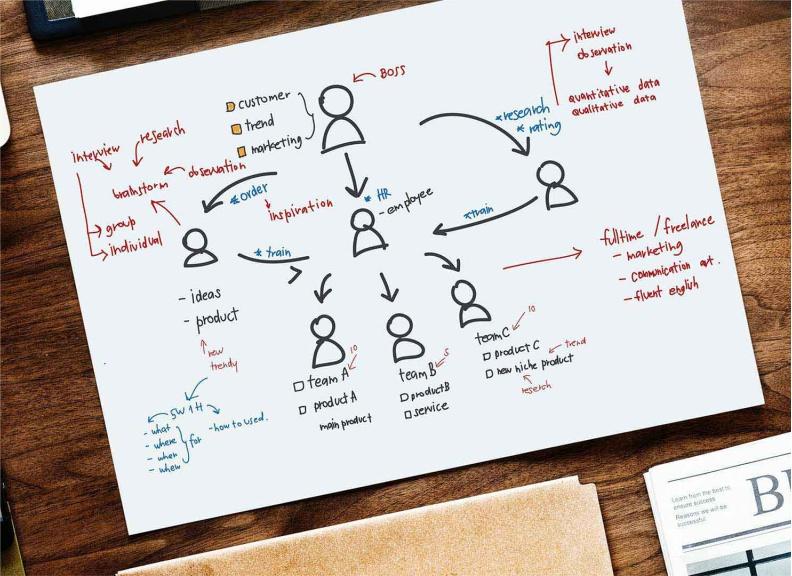
The Non-Executive Directors meet separately as and when is needed. During the year of review, they met to discuss the transition of management at the Fund and relevant succession planning.
For period ending 30 June 2023:
Finance Committee
reviewed and discussed:
• The Financial report
• Commercial report
• Operations report
• IT report
• Procurement and Disposal Unit report
ARC reviewed:
• The Legal and Board Affairs report
• Internal Audit report
• Risk Management report
IPM reviewed:
• The Investments Implemented report
• Quarterly Investments report
• The update on Property Management
• The update on Real Estate projects
SACA reviewed:
• Staf updates.
• Marketing and Communications report
• People and Culture report
• Long Service Award update
Extra ordinary full Board meeting to consider the appointment of the Managing Director
Extra ordinary Board Meeting to consider the report from Japheth Kato consulting (JK) on the review of the Board Charter 2020 for adoption
ARC considered and recommended the contract renewal of Head of Internal Audit
Finance Committee considered the update on the approval of the NSSF budget 2023/2024
The ARC and Finance Committee had a combined meeting to consider the proposed interest declaration rate
SACA reviewed and considered:
• Renewal for three senior managers
• Recruitment of Head Procurement and Disposal Unit
• Staff appraisals, salary review proposals
• Performance bonus for FY 2022/2023
Ordinary full Board meeting to review of the draft NSSF Audited Financial Accounts FY 2022/2023:
• Consideration of interest rate proposed for FY2022/2023
• Received and reviewed the Management Letter
• Submission of proposed interest rate FY2022/2023.
• Staff appraisal moderation
Finance Committee reviewed and discussed:
• Financial report
• Business report
• Operations report
• IT report
• Procurement report
ARC reviewed:
• Legal and Board Affairs report
• Internal Audit report
• Risk Management report
• The update on Property Management
SACA reviewed and considered:
• Managing Director's update of the Fund's performance as at 30th September 2023
• Marketing and Corporate Affairs report
• People and Culture report
• Proposed Executive Committee Succession plan
• Critical key staff/talent
IPM reviewed:
• The Investments Implemented report
• Quarterly Investments report
• The update on Property Management
IPM also considered:
• Update of the investment performance of
UMEME from Initial Public Offering to date
• The update on Real Estate projects
• NSSF Real Estate projects
• Contracts of IPMC consultants
• Paper on interest declaration on closing balance approach and prospects of an NSSF annuity approach
• Update on the sale of Murram at Temangalo
Ordinary Board meeting to consider:
• Director's nominations to investee companies
• The Board ratified the circular resolution to approve the Airtel Uganda Ltd Initial Public Offering in Q1
• The training reports for the Board development activities undertaken
The Board undertook a training on Board Corporate Governance Ethics and Risk Management
The Board action plan for FY2024/2025 will cover the following areas:
• Achieving a technology-driven strategy in a balanced portfolio of pragmatic investments
• Ensuring that the Fund achieves a stable but agile culture
The Full Board undertook a training on Board Trustee Certification
• Operationalising the NSSFAct Cap 230 to ensure that members' needs in terms of new products and easy access to benefits is enhanced
• Diversifying the Fund's investment portfolio
• Broaden and deepen the footprints into sustainability
SACA reviewed and considered:
• Updates on the Deputy Managing Director and Head Procurement and Disposal Unit functions
• Marketing and Communications report
• People and Culture report
• Two senior manager appointments
Finance Committee reviewed and considered:
• The NSSF financial performance report for quarter 2 ending 31st December 2023
• Commercial report for quarter 2
• Technology and Enterprise Solutions report for quarter 2
• Procurement and Disposal Unit report for quarter 2
• Opening new bank accounts for the Smart Life products operationalisation
ARC reviewed:
• The Legal and Board Affairs quarterly report
• The Internal Audit quarterly report
• Risk Management quarterly report
• The Liquidity stress report
• The Foreign Exchange report
• Proposed revised Board Charter
IPM reviewed and considered:
• Quarterly Investment report
• Real Estate projects quarterly report
• Property Management quarterly report
• Proposed changes to the Investments and Procedures Manual
Non-Executive Directors Meeting to review the 12th Board’s performance from September 2021 to February 2024
Ordinary full Board meeting to consider:
• Quarter 2 Management reports from the various Committee reports for the period ending 31 December 2023
• The training reports for the Board Development activities undertaken (Board Trustee Training)
No activities undertaken
Joint Board and Executive Committee Strategy Workshop to consider Management Workplans for FY2024/2025
SACA reviewed and considered:
• Marketing and Communications report
• People and Culture report
• The draft NSSF organisation structure
• Update on the Brand Policy
• Medical Scheme
• Budgets for Marketing and Communications Department for FY2024/2025
• Budget for People and Culture Department for FY2024/2025
The ARC undertook customised training
IPM reviewed and considered:
• Update on the economy and implications for the Fund's Investment programme
• Quarterly Investment report
• Real Estate projects quarterly report
• Property Management quarterly report
Finance Committee reviewed and considered:
• The NSSF Budget for FY 2024/2025
• Quarterly Financial Performance report
• Quarterly Commercial report
• Quarterly Technology and Enterprise Solutions report
• Quarterly Procurement and Disposal Unit
• Quarterly Strategy report
• Consideration of budget highlights for the Finance, Commercial, Technology and Enterprise Solutions, Procurement and Disposal Unit, and Strategy Departments for the FY2024/2025
ARC reviewed:
• The Legal and Board Affairs quarterly report
• The Internal Audit quarterly report
• Enterprise Risk Management quarterly report
• Information Technology insights report
• Update on various Fund matters
• Terms of Reference for the procurement of an IT Risk advisor to the Board
• Budget highlights for the Legal and Board Affairs, Enterprise Risk Management, and Internal Audit departments for the FY2024/2025
IPM reviewed and considered:
• Investment department budget 2024/2025
SACA reviewed and considered:
• Final NSSF organisation structure
• Marketing and Corporate Affairs budget FY2024/2025
• People and Culture budget FY2024/2025
• Update of the Brand Policy
Ordinary Board Meeting to consider:
• The proposed Fund budget for FY2024/2025
• Committee reports for quarter 3 ending 31 March 2024
The Fund's governance structure enables interaction between Management, members, and the Board.
The Board is supported by four standing Committees: StaffAdministration and CorporateAffairs Committee, Finance Committee, Investments and Project Monitoring Committee and theAudit and Risk Committee.
Discussions are still ongoing regarding the establishment of an independent Governance Committee to oversee succession planning of the Board and ESG issues.
Audit and RiskAssurance Committee (ARC)
Chairperson
Members of committee (period 1 July 2023 to 30 June 2024)
Advisors Committee purpose and how it contributes to value creation
The Committee is satisfied that it has fulfilled its mandate as set out in the Committee's terms of reference and work plan as required in the Board Charter during the period under review

The Committee is made up of only Non-Executive Directors and the MD only attends by invitation.The Head of InternalAudit reports directly into this committee which ensures independence of the InternalAudit function.The Corporation Secretary is the secretary of the Committee, the Head of Enterprise Risk Management and Head of InternalAudit may attend meetings upon request as ex-officio members.
The Committee helps the Board to effectively discharge its oversight responsibilities for financial reporting, risk management, internal controls, internal and external audit, regulatory compliance, and governance.
TheARC, on behalf of the Board, undertakes detailed monitoring of internal controls through the InternalAudit function.The Board has reviewed the system of internal control, including financial controls, for the year under review up to the date of approval of this Integrated Report.
Each of the standing Committees has formal and approved terms of reference stipulated in the Board Charter.
The Committees' functions are for purposes of review, oversight, and monitoring.Their duties include investigating and analysing the relevant information and reporting back with recommendations to enable the Board to make appropriate decisions.
These Committees have delegated responsibility to assist in specific specialist matters on a collaborative basis and provide reports of their activities and recommendations to the Board on a quarterly basis or as often as is necessary
The constitution, focus, activities, and outlook for each of the Board Committees are outlined below:
Key focus areas and value creating activities for the period under review
• The InternalAuditAnnual Plan and Balanced Scorecard (BSC) for FY 2024/2025
• Considered the InternalAudit reports and evaluated the extent of implementation of corrective actions by Management. Most of the audit recommendations had been resolved by the end of FY2023/24
• Considered the significant issues raised by InternalAudit including issues raised through investigations, whistleblower cases, management requests and risk-based audit processes
• Enhanced the independence of the internal audit and positioning of the enterprise risk management functions.The level of assurance and quality of reporting has improved through independent views, insights and challenges faced by the Fund
• Enhanced risk management through promotion of culture of risk awareness, understanding risk appetite and adequate risk response and management of strategic risks
ARC Committee's key activities in FY2023/2024 included oversight, review, and consideration of:
• The quarterly reports of the InternalAudit, Enterprise Risk Management, Legal and BoardAffairs departments
• The quarterly risk and insight reports onTechnology and Enterprise Solutions department
• The draftAudited FinancialAccounts, ExternalAudit conclusion report and Management letter FY2022/2023
• Proposed Interest Rate for FY2022/23
• The proposed changes to the Board Charter 2020
• The external audit plan for FY2023/24 and the related scope of work
• The departmental budget highlights for the FY2024/25 for the InternalAudit, Legal and BoardAffairs, and Enterprise Risk Management
• The extension of theARCAdvisor's contract
• The liquidity stress test and foreign exchange risk reports
• The contract renewal of the Head InternalAudit
• Update on various Fund land matters
• ARC training report on the Committee Development activities
Key engagements and considerations:
• Engagements were held between Members of theARC and the Head of InternalAudit in confidence to appraise themselves on key audit matters
• The Committee met with the external auditors at the beginning of the audit and discussed the scope of their work, assessment of their independence, audit plan, findings, and recommendations of the previous audit
• The Committee undertook a customised training programme where key action points on theARC mandate were adopted for implementation
• The Committee co-opted theTechnology Enterprise Solutions Officer in the quarterly meetings to provide an understanding and awareness of the InformationTechnology risks especially cyber security risks
• The Committee engaged the litigation section to appraise themselves with the litigation risks faced by the Fund, especially the land related matters
Key focus for the following year FY2024/2025:
• Emphasise risk culture in the decision-making processes through continuous awareness and training on risk management
• Enhance due diligence processes during the acquisition and/or procurement of investments to ensure that risks are highlighted and mitigants put in place
• Provide oversight over information technology risks especially the stability of the core system and new innovations in the areas ofArtificial Intelligence and machine learning
• Emphasise the review of management financial performance reporting to assure compliance with the international financial reporting standards and accounting practices
Investments and Project Monitoring Committee (IPMC)
Chairperson
Members of committee (period 1 July 2023 to 30 June 2024)
Patrick Ocailap
Annet Birungi Silver Mugisha
Lwabayi Mudiba Hassan PatrickAyota (Ex – officio member)
Kenneth Ssemwogerere Felix Okoboi
The Investments and Project Monitoring Committee of the Board complied with its mandate for the year under review All scheduled meetings were held.
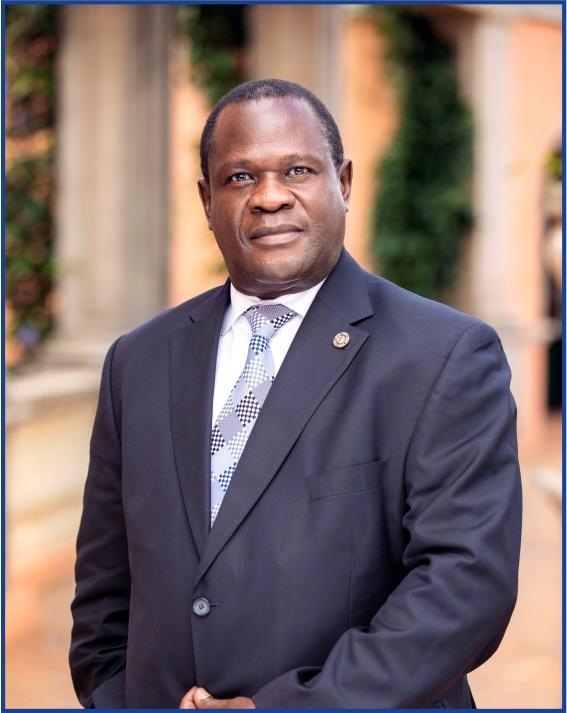
The Investments and Project Monitoring Committee (IPMC) of the Board is responsible for assisting the Board to fulfil its oversight responsibility as provided under Section 31 of the NSSFAct Cap 230, which states:
“All monies in the Fund, including the reserve account, which are not for the time being required to be applied for the purpose of the Fund shall be invested in such investments as may be determined by the Board in consultation with the Minister.”
The main responsibilities of the Committee include:
• Providing a deeper understanding of investment activities to the Board
• Reviewing, analysing and recommending all investment proposals to the Board for consideration
• Recommending an investment strategy, policies, and guidelines to the Board for approval
• Reviewing and recommending investments in equities, fixed income and real estate and the associated budgets to the Board
• Reviewing and recommending investment design concepts and master plans to the Board or changes thereto
• Reviewing performance of real estate projects, equities, and fixed income quarterly, in line with set targets and recommending to the Board
IPMC's key milestones in the FY2023/24:
• There was tremendous growth in the investment returns over the past year, especially in the fixed income portfolio
• Increased membership arising from the amendment of the NSSFAct availed increased contributions for investment purposes
• Recovery from the significant unrealised foreign exchange losses suffered during the FY2022/23
• Maintained the investment levels within the real estate portfolio
IPMC Committee's key activities in FY2023/2024 included review, analyse, monitor and recommend to the Board:
• The proposed changes to the Investment Policy Statement (IPS) and Investments Manual
• Consideration of the Project and Change Management Policy
• The quarterly updates on the investments implemented, the Real Estate Projects, Property Management, and the Hi-Innovator Programme
• The review of the economies in the Fund's investment universe and implications for investments
• Updates on the exchange and equity losses and the impact on performance
• The integration of the Fund strategy into the National Development Plan 4 (NDP4)
• Review of external fund management
• The proposed Investment departmental budget FY2024/25
• Consideration of the contracts for the IPMC consultants
Challenges and key lessons learned during FY2023/2024:
• Multiplicity of investigations and the resultant need to stabilise the Management of the Fund
• Delayed regulations to operationalise the amendments to the NSSF Act affecting the rollout of new products
Key highlights during the current tenure 2021-24:
• Achievement of the StrategicAssets Under Management (AUM) target of UGX 20 trillion ahead of the planned period
• Consistently made investments that were informed by thorough economic and legal considerations
• Continued to pay incremental returns on members' savings
• The investment portfolio streams remained valid
• Support formulation of the voluntary regulations to tap into voluntary savings space
• Position the Fund to rally and encourage savings mobilisation to support other Government programmes
• Actively pursue Private Public Partnerships (PPP) in the mobilisation of funds or finances to undertake real estate projects. In addition, the Fund will actively participate in the formulation of the proposed Real Estate law The Fund shall also endeavour to free all encumbered land and continue to explore affordable housing options
• Urgently put in place and publish the Fund's allowable investments areas with clear boundaries



Patrick Ocailap
Aggrey David Kibenge
Lwabayi Mudiba Hassan
PatrickAyota
The Finance Committee of the Board complied with its mandate for the year under review and all scheduled meetings were held.

and
The role of the Finance Committee of the Board is to assist the Board to fulfil its oversight responsibility and mandate in the following key areas:
• Determination of the annual and supplementary budget involves making and submitting to the Minister, for approval, estimates of the Fund's income, its capital recurrent, and other expenditures likely to be incurred for the ensuing year
• Review and approval of the audited financial statements prepared by management
• Review provision of proper books of accounts and records with respect to the Fund's financial transactions, assets, and liabilities
• Recommendation of the interest rate for declaration depending on the Fund's realised income
• Effective financial management of the Fund and its assets
• Review of the Fund's accounting policies and principles
• Reviews of allocated departmental policies and strategies
The Departments the Committee has oversight of are Finance, Commercial,Technology and Enterprise Solutions, and Procurement and Disposal.
Key activities in FY2023/2024 included review, monitoring, and recommendation of:
• The proposed interest for FY2022/2023
• The financial performance for the FY2023/2024
• The NSSF Budget for the FY2024/2025
• The strategic targets for the Fund and alignment of performance measurements
• The integrity of the financial statements and other information to be provided to the members to ensure that they represent a clear and accurate assessment of the Fund's position and performance
• The Fund's procurement contracts
• Quarterly department updates
• The commercial department's policy update in line with amendment of the NSSFAct
Key achievements:
• Contained costs within budget
• Met and exceeded income targets
• Met and exceeded contributions targets
• Conducted all meetings with sufficient collaboration
• Ensured smooth operations between the board and management
Key focus areas and value creating activities for the period under review Future focus areas 2025
• Streamlined procurements, easing the board's oversight function
• Conducted training sessions as a finance committee, equipping members with skills to improve oversight functions
Challenges during FY2022/2023:
• Continuing to deal with the aftermath of the probes/inquiries by different Government agencies
• Economic volatility in the economies where the Fund holds investments, affecting returns
• Disruptions in the real estate portfolio due to persistent land ownership disputes which have slowed down project implementation
Key learnings from FY2023/2024:
• Need for closer collaboration between the Finance Committee and IPMC
• Need for closer collaboration between the Finance Committee and theARC Committee, as budget outcomes are influenced by how the Finance Committee manages risks
• Continuous skills improvement is necessary; the Finance Committee oversees several departments, requiring a diverse knowledge base and skills for prudent conduct, necessitating continuous training
• Monitor the economic outlook to manage the foreign exchange risk exposure of the Fund
• Manage costs and maximise income through focusing on risk mitigation measures and conducting stress testing of various parameters
• Develop a succession planning strategy for 2025/2035; the Fund's maturing membership base poses a risk of declining growth, so the committee will focus on regulations that increase flexibility for creating new products
• Focus on service delivery to ensure customer satisfaction levels are maintained and improved
• Focus on internal development of software by the internal ITteam



Administration and CorporateAffairs Committee (SACA)
Lyomoki
PeninnahTukamwesiga
Annet Nakawunde Mulindwa
Aggrey David Kibenge
PatrickAyota
The StaffAdministration and CorporateAffairs Committee of the Board complied with its mandate for the year under review All the scheduled meetings were held.
purpose and how it contributes to value
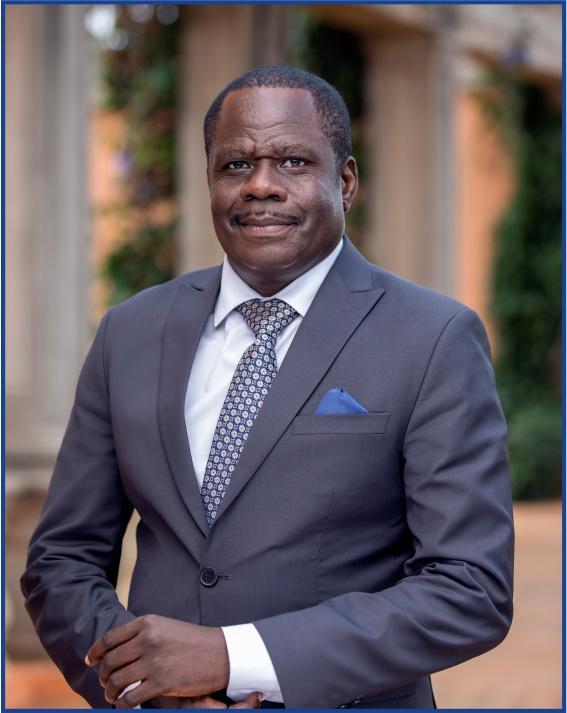
The StaffAdministration and CorporateAffairs Committee (SACA) of the Board is responsible for the following key areas:
• Overseeing the effective and efficient administration and management of the Fund by establishing appropriate policies regarding staff, administration, and corporate affairs
• Reviewing and recommending an appropriate organisational structure and staff establishment to ensure that it is resourced by competent and well-motivated staff to execute strategy
• Overseeing the management of corporate services such as marketing, public relations, transport, and records
During the FY2023/2024, SACAheld meetings where they considered several activities for recommendation to the Board.
SACACommittee's key activities in FY2023/2024 included the following:
• Recommendation to appoint the new substantive Managing Director and Deputy Managing Director
• Improved media tonality to 92% from 79% in the last FinancialYear
• Conducted a review of staff appraisals, salary reviews, and performance bonus recommendations
• Monitoring the organisational re-design implementation, roll-out and aligned it to the 2030 vision
• Contract renewals for senior managers, service awards and recruitment of the Head of Procurement and Disposal Unit
• Review and approval of the Brand and Donations Policy
• Reviewed departmental balance scorecards
• Monitoring of staff wellbeing and promotion of equality
• Talent management and reskilling of staff
• Product development and research such as the Fund's Smart Life project
• Promoted Digital Channels through communications campaigns
• Monitoring the Fund's communication through Financial Literacy awareness campaigns
• Monitoring customer satisfaction and experience
• Monitoring the marketing and branding of the Fund
• Reviewing quarterly updates received from Management
• Employee engagement improved from 86% to 89%
• Reviewed budgets for People and Culture and Marketing and CorporateAffairs FY2024/2025
• Review the proposed Executive Committee succession plan and the critical staff
Challenges during FY2023/2024:
• Anxiety among staff and stakeholders resulting from the organisational redesign process
• Negative tonality because of investigation by various Government agencies such as the Parliament of Uganda, IGG and the Uganda Police
Key focus for the following year FY2024/2025:
• Focus on the 10-year strategy Vision 2035 (50:50:95)
• Focus on redefining the Fund culture
• Building the right partnerships to enforce the provisions of the NSSFAct
• Strengthen job shadowing, secondment, and upskilling of staff to give staff more opportunities for growth
• Strengthen gender diversity at top management and senior management level through the Pathfinder programme
• Deliberate effort to develop women
• Reconstituting the new Enterprise and Growth Department with the right skills
• Monitoring and overseeing the new structural changes following the organisational redesign
• Completion of upskilling of staff because of the amendments in the NSSFAct Cap 230 and the new structure requirements
• Oversight of talent management updating the Fund's talent management and retention strategy
• Continue embedding aggressive talent managing and succession planning strategies at all levels to ensure we have strong successors for all critical roles
• Maintaining elevated levels of employee engagement
• Redefine the funds culture
• Explore new areas of investment
• Reskilling and re-aligning staff towards the 2030 vision



In aligning to King IV principles, the Fund considered the formalisation of a Governance and Nomination Committee during the reporting period, and it is confident that the current governance structures have sufficient oversight of the following responsibilities:
NSSF Board Committee oversight
Staff and CorporateAffairs Committee
Audit and RiskAssurance Committee
Audit and RiskAssurance Committee
Investments and Project Monitoring Committee
Staff and CorporateAffairs Committee
Staff and CorporateAffairs Committee
Responsibilities
Social and economic development
• Anti-corruption and bribery
• Staff wellness
• Human rights
• Promotion of equality
• Anti-money laundering
Ethics
• Monitoring of reported ethics cases and investigations
Environment
• Responsible consumption
• Impact of Fund operations on the environment
• Impact of investee companies on the environment
Stakeholder engagement and management
• Relationships with key stakeholders both internal and external
Sustainability and community development
• Development of communities through CSI activities
The Board is committed to continuous improvement and evaluates its performance.The Charter stipulates that the Board of Directors will conduct evaluations to determine whether the Board, its committees and members are functioning effectively in terms of discharging their mandate as per the Board Charter and in line with leading practices on corporate governance.The Board evaluates its performance through a combination of both internal peer and external facilitated assessments.
In the year under review, the Board evaluation was conducted by the ICGU Institute of Corporate Governance and internally, performance reviews were conducted by the Board Chairperson and Committee Chairpersons.The evaluation report highlighted the Fund's robust governance framework, effective corporate flow and communication, visionary leadership by the Board, and a strong understanding of the Fund's vision, mission, and values, as well as proper meeting management procedures.The evaluators recommended the following areas for improvement:
Recommendation
Succession planning should be reviewed periodically and should provide both succession in emergency situations and succession over the long term.
The Board to institute a code of ethics and policy to address violation of the code.
The need for periodic evaluation at least twice in a board tenure and addressing shortfalls identified.
There is need for a solid meeting between the InternalAuditor and theAudit and RiskAssurance Committee without management.
Need for a Governance and Nominations Committee.
Status
An external consultant has been appointed to advise further requirements over and above what management are proposing.
Done.
Evaluations will be undertaken at least once every year
Implemented.
Discussions are still ongoing regarding establishment of an independent Governance Committee to oversee succession planning of the Board and ESG issues.
Management, led by the MD, has the authority to manage and control the day-to-day affairs of the Fund in relation to matters other than those reserved for the Board.
We have robust processes in place to ensure that the delegation flows through the Board and its Committees to the MD and EXCO into the organisation.At the same time, accountability flows upwards from the Fund to its members.This process helps to ensure alignment and open communication with our members and all our stakeholders.
The Chairman, Dr. Peter Kimbowa, is an Independent Non-Executive Director and was appointed on 1 September 2021. His term ended on 31August 2024. The Chairman's role includes:
• Leading the Board and ensuring overall effectiveness, operating to the highest governance standards
• Encouraging a culture of openness and debate to foster a high-performing and collegial team
• Ensuring strategic issues, members and relevant stakeholder views are regularly reviewed, understood and responded to
• Facilitating the relationship between the Board and the MD and providing oversight, guidance, advice and leadership
• Ensuring control over the quality and timeliness of information flow between the Board and Management
• Setting agendas for meetings of the Board that focus on the strategic direction and performance of the Fund's business
• Ensuring that adequate time is available for discussion on all agenda items
• Leading the Board and individual Director PerformanceAssessments
• Speaking and acting for the Board and representing the Board to members
The MD is the Chief Executive Officer of the Fund and is subject to the NSSFAct (amended) and to the general control of the Board on matters of policy, responsibility for running the day-to-day business of the Fund, general management, administration, and organisation of the Fund. He also ensures the strategies and policies set by the Board are implemented.The MD, PatrickAyota, is the only Executive Director (ex officio member) on the Board and has been a Board member since December 2022.

The Corporation Secretary, Ms.AgnesTibayeita Isharaza was appointed in the role since 1April 2019.Appointment of the Secretary to the Fund is exercised in line with Section 42 of the NSSFAct a. In addition to any other functions conferred upon her by the Minister and the Board, the Corporation Secretary has the custody of the seal of the Fund and is responsible for:
• Ensuring crucial information flows within the Board and its Board Committees and between Management and the Board
• Facilitating the orientation and professional development required by the Board
• Taking minutes of the meetings of the Board and any of its Committees and Subcommittees
• Keeping the records of all transactions of the Fund
• The provision of legal advice on all Fund activities
• Advising the Board on all governance matters
• Keeping the Board aware of relevant changes in legislation and corporate governance best practice
As of 1 July 2022, the title of the Corporation Secretary changed to Chief Legal Officer/Corporation Secretary. Responsibilities and accountabilities remain the same.
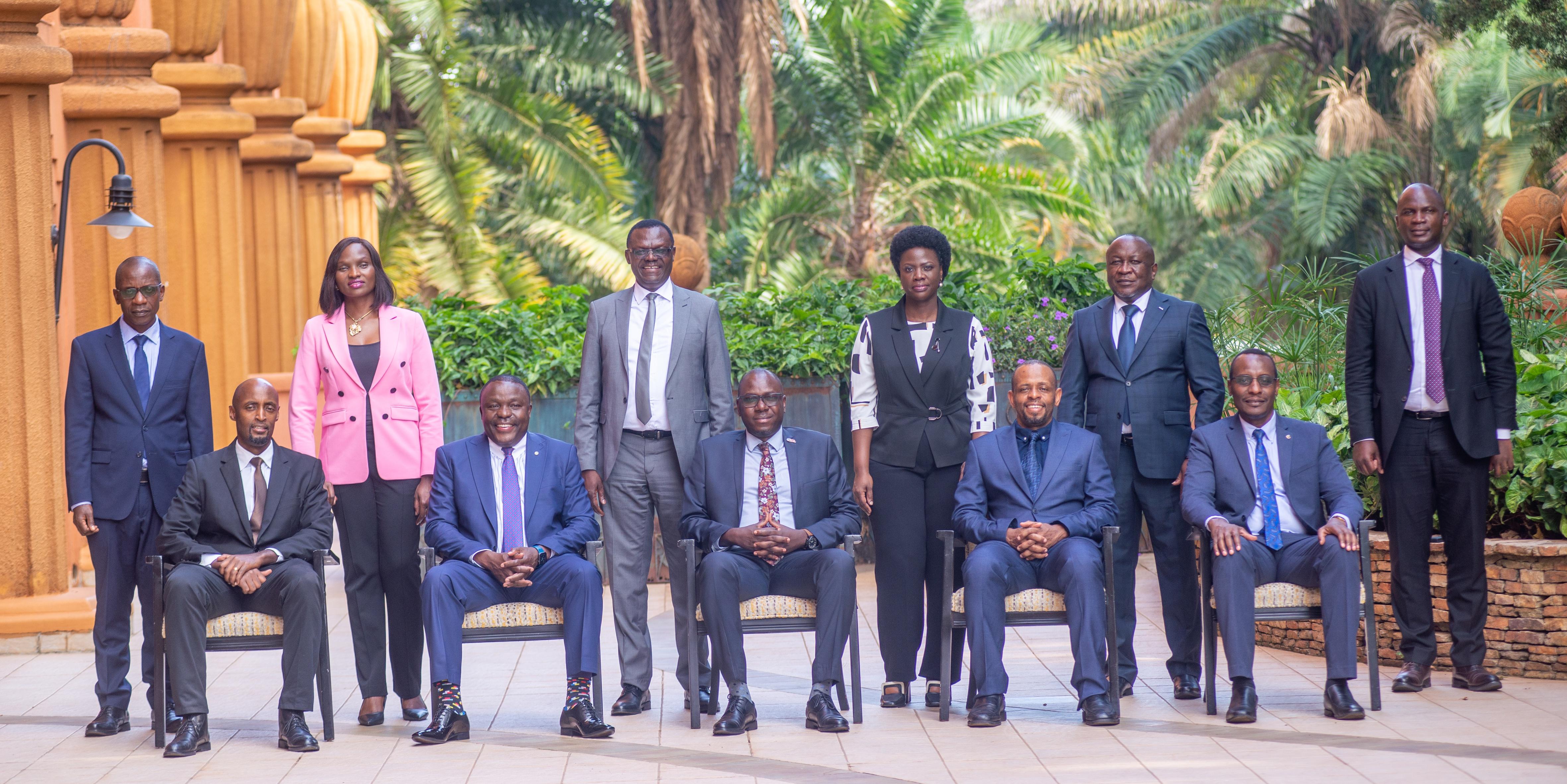
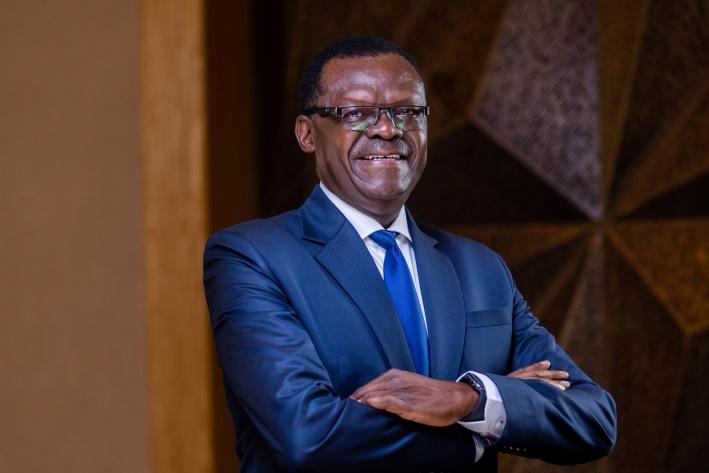
Mr PatrickAyota
Managing Director
Appointed July 2011 CFO
November 2017 Deputy MD
December 2022Acting
Managing Director August 2023 Managing Director
Tenure 13 years
Qualifications
• CPA(U) - Certified Public Accountant of Uganda
• MBA - University of South Carolina, USA
• Bachelor of Science Degree in Finance - Liberty University, Virginia, USA
• CPA - Georgia USA
Expertise
• Strategy formation and execution
• Innovation
• Financial reporting and accounting
• Taxation
• Leadership
• Project management
• Financial Analytics
Board memberships
• Chairman of the Board of New Vision Group
• Non-Executive Director Housing Finance Bank
• Board Member ICPAU (Quality Assurance)
Other memberships
• League of East African Directors (LEAD)
• President ISSA focal liaison office East and Central Africa
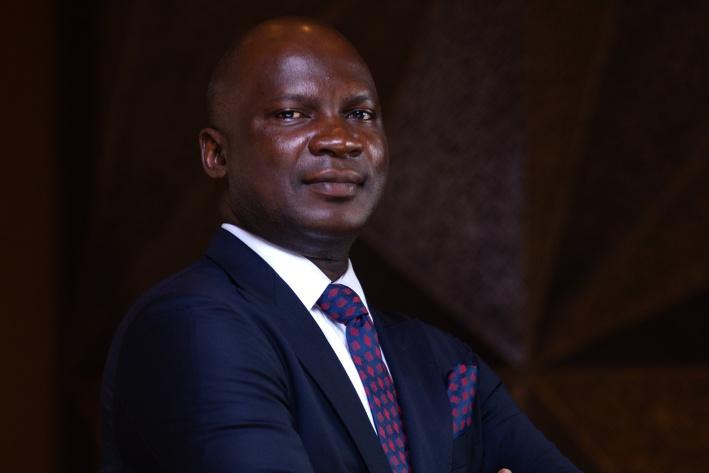
Mr. Gerald Paul Kasaato
Chief Investment Officer
Appointed April 2014 Tenure 10 years
Qualifications
• LLB(Hons) Nottingham Trent University
• CFA, USA - Charter Holder
• Chartered Accountant of the UK - a Fellow
• FCMI - Chartered Management Institute of the UKa Fellow
• CPA(U) Certified Public Accountant of Uganda
• Alumnus of the Harvard Business School (USA)
• Aresty scholar of Wharton Executive Programme, University of Pennsylvania, USA
• MBA in Finance University of Exeter, UK
• Master of Science (MSC) in International Finance and Investments - London Southbank University, UK
• Bachelor of Science (Hons) Degree in AccountingOxford Brookes University UK
Expertise
• Investment and portfolio management - of Multi Asset Class Portfolios
• Corporate and international finance
• Risk management
• Financial reporting and accounting
• Taxation and audit
• Strategy formation and execution
• Leadership
• Operations management
• Financial economics
• Project management
• Banking and trade finance
• Corporate governance
• Coaching
• Research

Ms.Agnes Tibayeita Isharaza, Chief Legal Officer/Corporation Secretary
Appointed April 2019
Tenure 5 years
Qualifications
• Executive MBA - Eastern and Southern African Management Institute (ESAMI)
• Post Graduate Diploma in Legal Practice - Law Development Centre (Awarded the Attorney General's Prize)
• Bachelor of Law Degree (Hons) - Makerere University
• Chartered Governance Graduate ( GradCG)
Other training
• Master Trustee Certification- Johannesburg School of Finance/ Jomo Investment
• Graduate - Female Future Programme - FUE/ Arbeidsforkininings Fond (AFF) Scandinavia, Retorisk Institut in Norway and Confederation of Norwegian Enterprises (NHO) Business School
• Board Masterclass Financial Times Non-Executive Directors Club, UK
• Being a Director - Institute of Directors, South Africa
• Several corporate governance, banking, and other technical trainings
Expertise
• Legal and compliance
• Governance
• Corporate and Board Affairs
• Banking, finance, pension, and capital markets

Mr. Stevens Mwanje Chief Financial Officer
Appointed November 2017
Tenure 7 years
Qualifications
• CPA - Institute of Certified Public Accountants of Uganda (ICPAU)
• Fellow of the Association of Chartered Certified Accountants (ACCA), UK
• MBA in Business Management - Heriot-Watt University (Edinburgh Business School)
• Post Graduate Diploma in Business ManagementUniversity of Leicester
• Bachelor of Arts Degree - Makerere University
Other training
Alumni of the Executive Programmes of:
• The Wharton School (University of Pennsylvania)
• The Gordon Institute of Business Science (University of Pretoria)
• Strathmore Business School (Strathmore University)
• Balanced Scorecard Professional - George Washington University College of Professional Studies
Expertise
• Strategy formulation and execution
• Coaching and mentoring
• Financial reporting and accounting
• Sales and marketing
• Taxation
• Operations management
• Leadership
• Change management
• Project management

Mr Geoffrey Barigye Head of InternalAudit
Appointed January 2010
Tenure 14 years
Qualifications
• FCCA - Fellow of the Chartered Association of Certified Accountants (ACCA), UK Certified Public
• Accountant (CPA), Uganda
• MBA - Makerere University, Kampala
• Bachelor of Commerce Degree in AccountingMakerere University Kampala Diploma in
• Business Studies - Makerere University Business School, Kampala
Other training
• Alumnus of the Strathmore Business SchoolExecutive Leadership Programme, Nairobi Kenya
• Corporate Governance
Expertise
• Auditing
• Accounting • Finance
• Leadership and management
• Governance
• Risk management
• Coaching and mentoring

Geoffrey Waiswa Sajjabi Chief Commercial Officer
Appointed November 2017
Tenure 7 years
Qualifications
• Diploma for Social Security Managers-International Training Centre - ITCILO Turin Italy (Ongoing)
• MBA - Heriot Watt University UK
• General Management Programme - Gordon Institute of Business Science - University of Pretoria
• Executive Leadership Programme - Strathmore Business School Nairobi Kenya
• Administrative Officers Law Certificate - Law Development Centre Kampala
• Bachelor of Arts - Makerere University Kampala
Other Trainings
• CEO Apprenticeship

Ms. Rhona Kyomuhendo Ag. Head Procurement & Disposal Unit
Appointed September 2023
Tenure 10 Months
Qualifications
• MSc. Procurement & Supply Chain Management Makerere University
• Graduate Diploma in Procurement and Logistics Chartered Institute of Purchasing and Supply UKMCIPS
• Bachelor's degree in Procurement & Logistics Management - Kyambogo University
Trainings
• Certificate in Senior Leadership ProgrammeStrathmore University
• Leadership development Certificate Female Future Programme nominated by ILO as one of the best practices of Gender Equality - Federation of Uganda Employers
• Certified Professional Certificate in Results-Driven Leadership - INEMMO Group, UK Expertise
• Leadership
Certified Supply Chain Manager
• Public Sector Procurement Professional
• Procurement Strategy Management

Mr. Edward Senyonjo Chief Risk Officer
Appointed September 2010
Tenure 13 years
Qualifications
• MBA, University of Nicosia, Cyprus
• Fellow of the ACCA, United Kingdom
• CPA, Institute of Certified Public Accountants of Uganda
• Certified Risk Manager (CERM)
• ISO 22301: 2019 BCMS Lead Implementer
• GMP Gordon Institute of Business Science, South Africa
• BCOM, Makerere University, Uganda Expertise
• Enterprise Risk Management (ERM) strategy • ERM implementation • Corporate governance • Business continuity management
Crisis management and disaster recovery • Risk modelling, scenario analysis and stress testing

Ms.Arimi Barbra Teddy Head of Marketing and CorporateAffairs
Appointed December 2014 Tenure 9
Qualifications
• Member of the Chartered Institute of Marketing (CIM)
• Member of the Chartered Institute of Public Relations (CIPR)
• MBA - East and Southern Africa Management Institute
• Bachelor of Commerce - Makerere University
Board Roles
• Board Member DFCU Group
• Board Member for CEO apprenticeship
Other Training
• Global Executive Development Programme - Gordon Institute of Business Studies CEO
• Apprenticeship Programme - Strathmore Business School and CEO Summit Uganda
• International Module for the CEO apprenticeship programmeGordon Institute of Business Studies
• Executive Leadership Programme Strathmore Business School
• Leadership Development Future Female Programme Federation of Uganda Employers
• Balanced Scorecard professional Certification - Balanced Scorecard Institute
• Reputation and Crisis Management
• Strategic Brand Marketing - University of Cape Town
• Training of Trainers UMI
• Entrepreneurial Branch Operations World Savings Bank Foundation for International Cooperation
• Corporate Governance - ICGU
• Branch managers training - World Savings Bank Institute and Belgium Technical Cooperation
Expertise
• Marketing strategy
• Public relations
• Brand Management
• Corporate Social responsibility
• Product development
• Research
• Sales force Management
• Crisis Management
• Events Management

Mr Alex Rumanyika Kalimugogo
Head of Strategy & Performance
Appointed August 2022
Tenure 2 years
Qualifications
• Masters, Business Administration, USIU-Africa
• Bachelor of Commerce Degree; Makerere University
• Balanced Scorecard Certified Specialist
• Public Private Partnership Certified Specialist
• Strategic Management and Performance Management Systems Certified Practitioner
• Performance Measurement Process Certified Practitioner
• Venture Development and Digital Transformation Certificate - University of Virgina
• Leading Transformations, Managing ChangeMacquarie University
Expertise
• Strategy Development & Performance Management
• Innovation Management
• Programme Management
• Intrapreneurship
• Venture Building
• Corporate Finance
• Microfinance
• Strategic Leadership & Change
• Public Sector Reform

Mr. Milton Steven Owor Chief People and Culture Officer
Appointed February 2017
Tenure 7 years
Qualifications
• Professional Executive Coach, Coach Masters Academy, Singapore
• MBA - University of Leicester, UK
• Bachelor of Social Sciences degree (Hons)Makerere University
Other Training
• Global Business Leadership Certification, INSEAD, France
Expertise
• People leadership
• Strategic talent management
• Change management
• Executive leadership development
• Reward and compensation
• Executive coaching

Appointed September 2021
Qualifications
• Masters in data science - Eastern University United States
• BSc Mech Eng. Makerere University
• MBA - Makerere University
• Six Sigma Black Belt-American Society of Quality
• Certificate in digital financial services - Tuft University
• Certificate in data science - Analytics Vidya
• Project management by numbers - Shell Academy • Emergent change leadership - Shell Academy
ACCA (Partial)
• Strategy
Cyber security
Digital financial services • Business process re-engineering
Six Sigma methodology • Machine learning
• Artificial intelligence
• Mechanical engineering process design • Leadership • Account management
• Financial product and channel design
• Business intelligence
• Coaching
• Failure mode and effect criticality assessment
• Project management Mr. Benoni Katende ChiefTechnology and Enterprise Solutions Officer
Effective and ethical leadership
The Board of the Fund embodies the principles of accountability, ethics, and integrity, ensuring all actions are in the best interests of stakeholders. Upholding the Fund's values, we have committed to ethical and honest practices, which are crucial in fostering trust in our business dealings.Aformal ethics policy and code of conduct are in place, alongside resources to reinforce our ethical standards and investigate any reported concerns, supported by a robust Whistleblowing Policy
To preempt conflicts of interest, Directors are provided the opportunity to declare any potential conflicts at the start of each Board meeting. Our governance framework mandates clear disclosures and regular Board evaluations to maintain ethical decision-making.An external law firm, SIGNUMAdvocates, manages the whistleblowing process, allowing for independent review.
Sustainability is a strategic priority, with initiatives reflective of selected UN SDGs and informed by our environmental management policies.
We regularly review Committee terms of reference and formalise plans for improvement based on audit findings. InternalAudit plays an important role in the enforcement of our ethical culture, monitoring, and investigating reports of unethical behaviour

We believe in having a diverse leadership team regarding experience, skills, tenure, geographical expertise, professional background and gender as illustrated here
Annually, we undertake environmental risk assessments and are dedicated to reducing the consumption of energy, paper, and water and adhering to local waste management regulations. OurAudit and Risk Committee oversees policy and code compliance, and our HR manual embodies our ethics to inform and guide staff behaviour, all part of our commitment to governance that is both responsible and sustainable.
Sustainability is an integral part of our DNA, reflected in our leadership approach that emphasises creating value for stakeholders and society at large.
We are intent on enriching our communities and advancing education, health, financial literacy, and environmental wellbeing through our Corporate Social Investment (CSI) initiatives.These efforts align with our commitment to the Sustainable Development Goals (SDGs), particularly those focusing on ending poverty, , achieving gender equality, promoting decent work and economic growth, reducing inequalities, supporting sustainable cities, promoting peace justice and strong institutions and partnerships for the goals.

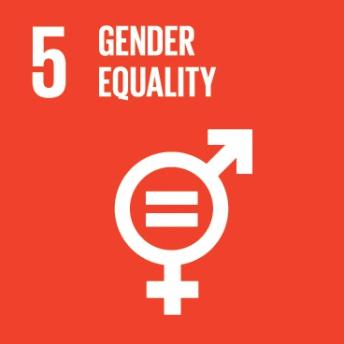
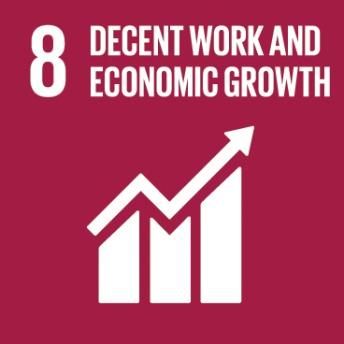
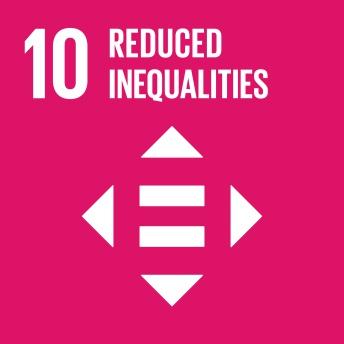
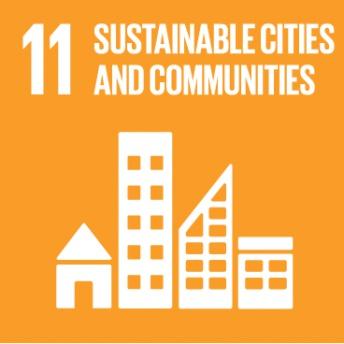
The Fund operates with accountability and integrity, upholding sustainable business practices and fostering development that benefits the environment, our employees, and the community At the NSSF, we apply our expertise in business, policy, and data, as well as our financial resources, to foster an inclusive recovery from economic setbacks, enhance access to opportunities for economic advancement, and spearhead solutions for sustainability and climate action.
Sustainability governance is embedded in our organisational structure, managed by the Board StaffAdministration and CorporateAffairs Committee to ensure rigorous oversight and strategic direction of our sustainability endeavours. In addition, the Investments and Project Monitoring Committee (IPM) takes the lead in the Fund's responsible investing approach, ensuring our investment policy and strategy requirements are executed and that we continually support ESGcompliant companies.
Read more in our Sustainability/ESG report - click here
SACAreport
ARC report
Responsible investments (KIV P17)
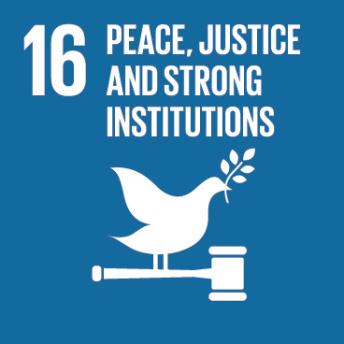
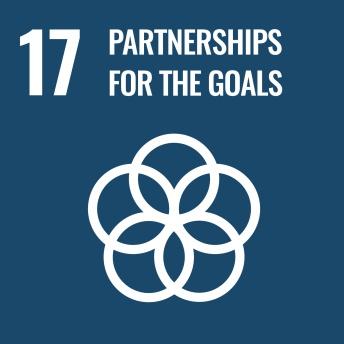

As a prudent institutional investor, we are committed to ensuring that responsible investment standards guide our decision-making, thereby promoting sound governance and fostering value creation by the companies in which we invest.
InvestmentApproval Process
The investment of member funds is authoritative and deliberate, requiring Board approval in alignment with the Minister of Finance, Planning and Economic Development, as stipulated by Section 30 of the NSSFAct. Our focus is on mature markets known for their predictable returns, aligning with prudent investment philosophies.
Growth andAssetAllocation
The pursuit of growth is managed through a strategicAllocation ofAssets policy, formulated under our comprehensive investment policy to balance prudent decision-making with the desire for consistent member returns.
Investment Oversight
The Investments and Project Monitoring Committee (IPM) takes the lead in the Fund's responsible investing approach, ensuring our investment policy and strategy are executed as intended and that we continually support ESG-compliant companies.
Responsible Investment Policy
Our responsible investing philosophy is encapsulated in a Board-approved investment policy, which institutionalises a formalised investment strategy and underscores our commitment to responsible investment practices.
Monitoring and Review
The Board actively monitors responsible investments through:
• In-depth consideration of investment proposals in consultation with the relevant Minister
• Aquarterly review of real estate, equities, and fixed income performance against established targets
• Biannual performance evaluations of Fund Managers, focusing on their adherence to our investment standards and targets
• Incorporating ESG considerations in investment decision-making, reflecting our commitment to responsible and sustainable investment practices
• Regularly updating the Fund's strategic asset allocation, ensuring it remains responsive to market dynamics and aligns with our long-term investment horizon
By implementing these measures, we ensure our investments not only contribute to the financial growth of the Fund but are also aligned with the broader principles of sustainability and corporate responsibility See the Chief Investment Officer Report
our IPMC Report

16
Recognising the significance of incorporating stakeholder perspectives, we emphasise a stakeholder-inclusive approach that harmonises their needs, interests, and expectations with the long-term well-being of the organisation.
Continuous Stakeholder Engagement
We engage persistently with a diverse array of stakeholders - including government entities, the public, members, and service providers like bankers, custodians, administrators, and Fund Managers - to truly grasp and address their specific needs and expectations.
Strategic Partnerships and Relationships
Building and nurturing strategic relationships is a key focus for us, as it assists in managing societal expectations, mitigating reputational risks, and forming robust partnerships, crucial pillars for our business's sustainability
International Outreach and Innovation
Our dedication to global stakeholder engagement is exemplified by the establishment of a Liaison Office, which coordinates International Social SecurityAssociation (ISSA) activities across EastAfrica, liaises with theAfrica Social SecurityAssociation (ASSA) and the International Labour Organisation (ILO), and explores initiatives like a locally tailored Social ProtectionTraining Centre.
Ongoing Engagement and Value Evaluation
Evaluating the impact and quality we deliver to stakeholders is critical for addressing sustainability issues and informing our strategic direction.
Communication and Transparency
We maintain open and transparent communication channels founded on trust and a clear understanding of our stakeholders' expectations. By doing so, we foster sound relations that reinforce business sustainability, ethics, and organisational integrity aligned with the social, legal, and economic framework of the country
Stakeholder Engagement Governance
The StaffAdministration and CorporateAffairs Committee (SACA) is responsible for supervising the Fund's stakeholder engagement strategy, ensuring all engagement activities align with our policy and values.
Stakeholder Engagement Practices
• Periodic reporting of engagement activities to SACA
• Conducting stakeholder engagement surveys
• Adhering to a Board-approved Stakeholder Engagement Policy
• Keeping a detailed register of stakeholder interactions
Feedback and Improvement
We closely review feedback obtained through stakeholder engagement surveys and develop targeted action plans to address identified areas needing improvement, demonstrating our commitment to continually enhance stakeholder relations. Read
The Board is responsible for guiding the strategic direction of the Fund and has established a robust governance framework to empower management to meet its objectives, in line with the strategic plan set for completion by 2035.
The Fund's strategy is clearly articulated and includes a suite of Key Performance Indicators (KPIs) focused on long-term value creation.
To demonstrate our strong commitment to sustainability and responsible investment, we have formally integrated sustainability drivers into our strategy, highlighting our dedication to achieving our selected Sustainable Development Goals (SDGs) and making a significant environmental, social, and governance (ESG) impact.
Key elements of our strategic approach include:
• Acomprehensive ten-year strategic outlook informed by detailed strategic planning sessions conducted by the Board.
• Aholistic strategy that seamlessly integrates risk management, opportunity identification, and performance management processes.
• Sufficient budgeting and resource allocation to ensure strategic objectives are met effectively
The Board regularly evaluates the Fund's progress against the established strategic targets and the overarching strategic vision, ensuring ongoing alignment and responsiveness to emerging challenges and opportunities.
Read more on strategy and performance

Sustainability and ESG integrated into NSSF's strategy
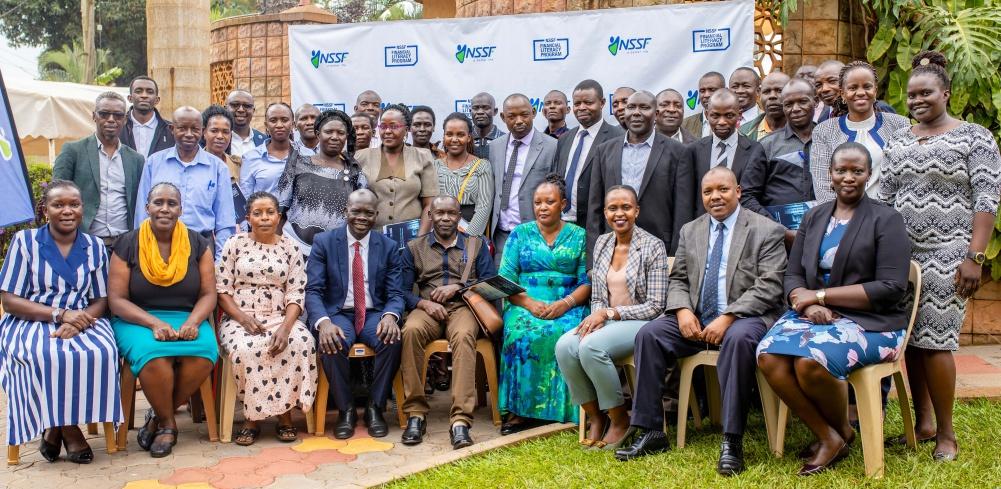




Key performance measures are aligned to the strategic objectives which translate into an organisational scorecard, cascading into individual scorecards.
The
of milestones and execution of strategy. Board activities
The Board ensures that it provides transparency to key stakeholders, both in good and tough times, by providing timely and balanced information, and in so doing, promotes stakeholders' confidence in the business.The NSSF reports the material results of its performance internally and to stakeholders.The Board is responsible for providing reporting guidelines regarding quality and depth of reports, meaningfulness and relevancy to meet internal and external needs.
We strive to give effect to the reporting requirements of the various leading practice codes/guidance/frameworks and good practice in our industry, etc.

The Board and its Committees are supplied with complete and timely information from Management to enable the Directors to discharge their responsibilities.
The NSSF publishes an annual integrated report, sustainability report (ESG) and audited financial statements (see link) to ensure all stakeholders remain informed.The integrity of the information included in the reports is overseen by the Board, with specific areas of reporting reviewed and challenged for appropriateness by the relevant Board Committees, as well as our internal audit and combined assurance functions.The annual financial statements are audited by KPMG.

The Board ensures reporting of accurate, complete and balanced information in the Integrated Report.
Information related to the required disclosures appears in our Integrated Report.This includes matters relating to our strategy and detailed sections about our long-term goals, medium- to long-term targets, stakeholder engagement, governance approach and outlook.Additionally, our governance principles, including the King IV application are included in this chapter
Board training includes integrated reporting to deepen Directors' understanding of the requirements of the Integrated Reporting Framework.
IR training is available to new Board members.
Risk governance
The Board is tasked with ensuring the implementation of good corporate governance and the execution of effective risk management practices within the Fund.This is facilitated through the structured roles of various committees such as the Investments and Project Monitoring Committee, Finance Committee, StaffAdministration and CorporateAffairs Committee, and critically, theAudit and Risk Committee (ARC), which specifically oversees risk management and financial reporting integrity
Specific roles, responsibilities and accountabilities for risk management are defined.
See page 28.
Through a comprehensive materiality determination process material matters and emerging risks are identified which could influence the Fund's business model and its ability to create value in the short, medium, and long term.
This process is detailed further on page 34.
Risk management is an integral part of the Fund's operational activities, acting as both a safeguard and a tool for identifying opportunities for value creation. Given the importance of technology and data security, Cyber Security and Information Security risks form a core focus of the Fund's risk management strategy
The implementation of the three lines of defence model divides responsibilities clearly between risktaking and risk-control functions, bolstering the overall risk governance structure of the organisation.TheARC plays a central role in risk and opportunity management and compliance, providing guidance on handling risks according to the Board's direction.

Key elements of the Fund's risk management approach include:
• Arisk appetite dashboard that considers both risks and opportunities in support of strategic and financial objectives
• An enterprise-wide Risk Management Framework and accompanying policy
• ACombinedAssurance Model to provide a holistic overview of risk control measures
The Board independently assesses top risks regularly, maintains oversight of the Strategic Risk Register, ensures the implementation of strategic projects, and reviews summary reports from both theARC and Finance Committee.This multi-faceted oversight ensures that risk management remains a cornerstone of the Fund's governance and strategic decision-making processes.
Read more
The governance of technology and information at the Fund is rooted in the Board Charter, where the Board has the key role of overseeing the Information andTechnology Policy, systems, and overall strategy.
The Finance Committee is mandated to assist the Board in fulfilling its oversight responsibility for technology governance, ensuring alignment with our strategic goals.
For governance, the Finance Committee takes the lead on IToversight, supported by a formal ITgovernance strategy and framework. Regular ITgovernance audits further solidify this commitment to secure and responsible technology management.
Aligned with its strategy for digitalisation, the Fund is heavily investing in information security to enhance the efficiency of its operations and communication, capitalising on automation and digital platforms.
At the heart of this technological advancement is theTechnology and Enterprise Solutions Department at NSSF Tasked with utilising technology to extend services, improve customer interactions, and bolster operational efficiency, the department's initiatives include digital expansion for social security, user-friendly digital interfaces, data analytics for customised services,AI integration for better efficiency and decision-making, and forming strategic partnerships for service innovation.
Detailed insights from the Chief Technology and Enterprise Solutions Officer.
We make use of the OctoPAS PensionAdministration System for efficient pension administration. Our commitment to upholding secure and stable ITservices is evidenced by comprehensive controls and regular security assessments, including penetration tests and vulnerability scans, to safeguard our systems and data.

The Fund is committed to legal and regulatory compliance, with a particular emphasis on adhering to prudential regulation.The Board oversees compliance governance through theAudit, Risk andAssurance Committee, which monitors adherence to laws, regulations, and best practices within the retirement benefits sector
To govern compliance and service delivery effectively, the Board has instituted comprehensive policies and processes.There is a continuous effort to monitor and proactively engage with regulatory changes and focal areas, ensuring that the Fund remains ahead of developments.
Acornerstone of the Fund's governance is the maintenance of the highest standards, including transparency, accountability, and fairness, to its members, regulators, and all stakeholders. Management plays an ongoing role in tracking the Fund's regulatory compliance, with quarterly reports provided to the Board for review.

The Board has endorsed a Compliance Management Policy and Manual to underpin the compliance infrastructure.This includes regular compliance monitoring to ensure that the Fund not only meets but also anticipates its critical legislative and regulatory obligations.

InternalAudit (IA) supports the Board and Management to execute their mandate by providing independent and objective assurance, thereby protecting and creating value for a better life.
InternalAudit provides an independent, objective, and continuous evaluation of the Fund's operations and system of internal controls.The function reviews, appraises and reports on.
a) The effectiveness and adequacy of internal controls, risk management and governance processes, and b) The reliability of financial and other management information.
The InternalAudit Charter approved by the Board of Directors, provides the framework that guides activities, purpose, authority and responsibility of the InternalAudit function.
IAreports functionally to the Board and administratively to the Managing Director
The annual risk-based IAaudit plan and budget are developed in consultation with Management and approved by theAudit and RiskAssurance Committee of the Board (ARC).

Issues raised in various audit assignments, are reported to both Management for remediation and to the BoardAudit Committee (ARC) for oversight.
InternalAudit makes value adding recommendations to Management and all remedial actions are followed up to completion and independently validated.
It is the Fund's commitment to extend social security coverage to more working Ugandans, while aiming to deliver sustainable value to the members and key stakeholders.The Fund has therefore developed strategies to enhance members' lives throughout their life journey and beyond retirement, while driving long-term profitability for the Fund.
The internal audit function performs work across the organisation, providing independent assurance, advice and insight to help the Fund accomplish its objectives by bringing a systematic, disciplined approach to evaluating and improving the effectiveness of risk management, control and governance processes.
InternalAudit in the Fund is well-structured and aligned to enterprise value creation.Achieving the Fund's objectives is the ultimate goal of everything internal audit does, particularly as a governance role independent of management, which ultimately affects all stakeholders.
Value creation initiatives and reporting, as with the creation and protection of enterprise value overall, require the Board, Management to support InternalAudit and work collectively to align with each other and the prioritised interests of stakeholders.
Our InternalAudit framework and InternalAudit strategic plan offer key features that we believe can greatly enhance internal audit's impact and value for the Fund.

By aligning internal audit's objectives with the Fund's purpose, accelerating organisational change and learning, and fully embracing digital technologies, internal audit is staying ahead of the curve and we continue to evolve the function to meet stakeholder needs. But, without a deep understanding of the key risks that matter, functional improvement alone cannot maximise the impact that InternalAudit can create.
In today's business environment, internal audit is keeping pace with the hastening speed, volume, and complexity of risks. The IAteam is currently implementing the internalAudit strategic plan that focuses on cross-team collaboration, data centralisation and documentation, workflow automation and leveraging on modern technology
As boards and management continue to grapple with dynamic risks, the need for audit to provide assurance and timely insights is more pressing than ever before. Resilience and agility have become our key attributes not only to survive but also thrive in the current dynamic environment.
Internal audit is playing a critical role in supporting the Fund to strengthen and maintain strong internal control and accountability systems by providing objective advice and supporting management to accelerate improvement in the governance, risks and controls landscape.
The implementation of a QAIPis to ensure conformance with the definition of InternalAudit, the Code of Ethics for internal auditors and theAuditing Standards.
Internal assessments include a comprehensive ongoing and periodic monitoring.The programme incorporates quality assurance processes in the stages of planning, engagement, and reporting.
On an annual basis, the function conducts and reports the results of the internal assessment toARC.
Independent and objective external quality assessment evaluates conformance of the internal audit with the InternalAudit Charter, Code of Ethics, and auditing standards.The procurement process for a service provider to conduct an external assessment is being concluded before the exercise can be undertaken within the quarter one of FinancialYear 2024/25.
The powers to appoint external auditors for Public Institutions (like NSSF) is vested in the Office of theAuditor General of Uganda (OAG). In line with Section 23 of the NationalAuditAct (2008), theAuditor General may appoint private auditors to assist him or her in the performance of his or her functions under thisAct.
Section 32(2) of the NSSFAct gives theAuditor General the mandate to audit its financial statements or by anAuditor appointed by theAuditor General.
Accordingly, theAuditor General appointed KPMG Uganda to conduct an annual audit of NSSF for the year ending 30 June 2024.The length of service of external auditors is determined by the appointing authority and the general practice has been for a duration of three years.
TheARC reviews the external audit plan and oversees the relationship between the internal and external auditors to ensure efforts are coordinated.
Combined assurance IV 15
The Board ensures that assurance services and functions contribute to a robust control environment, reinforcing the integrity of information used for internal decision-making and external reporting.
The Fund employs a "three lines of defence" model, enabling Enterprise Risk Management, Legal and Internal Auditing teams to collaboratively provide a comprehensive view of risk, compliance, and internal controls.This model ensures the reliability of governance structures and thorough coverage of all assurance activities for both financial and non-financial information. Integral elements relevant to governance, risk management, and controls within the integrated report receive focused assurance, with all assurance providers working cohesively yet, importantly, without affecting the independence of InternalAudit.This avoids duplication of efforts and ensures complete coverage.
TheARC plays a vital role in overseeing the assurance processes, including internal and external audit planning, evaluating the results, and supervising the implementation of corrective actions. Quarterly reporting to theARC helps maintain transparent oversight.
The Board and Management review outputs from both internal and external assurance providers, ensuring that all necessary remedial actions are implemented to bolster the internal control environment.The link between these actions and their corresponding assurances are reflected in the Integrated Report for 2023/4 and theAuditors' report within theAnnual Financial Statements, thereby ensuring accountability and continuous improvement in the Fund's operations.
See page 28 for our combined assurance model

14
The Board upholds remuneration practices that are equitable, responsible, and transparent, aligning with strategic objectives to foster success in the short, medium, and long term.
The StaffAdministration and CorporateAffairs Committee, operating under the Board, oversees human resource policies that govern employment terms, remuneration, training, promotions, discipline, and other benefits.These policies are designed to be equitable and competitive, attracting and retaining top talent, encouraging a motivated workforce, while enabling a high-performance culture.
The remuneration framework is aligned with strategic KPIs to ensure performance is commensurate with individual and business success.The reward system acknowledges the need for sustainability and adaptability in a changing business landscape.
The governance of remuneration includes:
• Adherence to the Remuneration and Employment Policy
• Observance of the Non-Executive Director Remuneration Policy
• SACA's role in ensuring fairness and transparency in remuneration
• Routine remuneration reporting to SACA
• Benchmark assessments of remuneration standards
• Reporting to the Board by SACAon remuneration matters
The Board approves the business targets at the commencement of every fiscal year and conducts a thorough review of outcomes at the year-end.This review is crucial before making informed decisions on the awarding of incentives, ensuring that any rewards issued align with the organisation's and individuals' achievements.
Remuneration Report
SACAlink

The Fund conducts annual remuneration surveys to stay aligned with market compensation trends.This ensures our compensation practices are both equitable and compliant with market and regulatory standards.
Beyond remuneration, the Fund is committed to employee development. We offer tailored benefits to enhance skills and potential, which boosts earning capacity and career growth. Our extensive development opportunities include diverse training platforms, support for degree programs, and professional qualifications that benefit both the organization and personal growth.

Our compensation framework aligns with the Fund's strategic objectives, linking remuneration to individual and business performance.This approach fosters a culture of excellence, driving the realization of our strategic goals.
To attract and retain top talent, we conduct annual remuneration surveys to ensure competitiveness.This includes assessing performance against set goals, ensuring we attract and retain the best talent necessary for achieving the Fund's objectives.
The Fund's Remuneration Policy at a glance
objectives
recruitment of the right people
Compensation components
The Fund's pay structure may include any or all the following: fixed pay, performance-based increments, and variable pay
Fixed pay
The Fund's fixed pay range is linked to an approved grading system, ensuring fairness, competitiveness, and internal equity
Performance based increments
Performance-Based Increments (PBI) link pay progression to individual performance assessments. Increments are consolidated into basic pay and vary based on appraisal results, grade positioning, and the pay increment budget.The PBI increases with performance and decreases as one's pay moves towards the maximum of the grade, as shown below.
employees to deliver and execute strategy
and contribution • Rewards are set with reference to external market practices and internal relativity
• Reward is simple, clear, and easy to understand • We avoid unnecessary complexity
• Policies are transparent and applied consistently • Reward decisions are trusted and properly governed • Reward is legal and compliant
• Family health support
• Comfortable and modern working environment
• Work like balance
• Coaching, mentoring, and counselling support Sustainable
• Flexible reward framework to meet changing business and economic needs
• Rewards are administered responsibly

Variable pay
The Fund offers annual bonuses to qualifying staff, recognising contributions, retaining exceptional performers, and motivating staff. Bonus amounts are based on performance and overall contributions to the Fund's results.
Benefits
The Fund provides benefits in line with market and regulatory standards, including medical insurance, death benefits, a retirement scheme ("Staff Provident Fund"), an "Annual ServiceAward" for temporary staff, and a "Gratuity Scheme" for the Executive Committee (EXCO).
Recognition policy
The Fund acknowledges exceptional contributions through financial and non-financial awards to individuals or groups, promoting the Fund's objectives and addressing operational challenges.
Long service incentive
Long service awards recognise commitment and loyalty in 5-year bands, starting from 10 years of service.
Remuneration of statutory appointees
The remuneration for the Managing Director and Deputy Managing Director is based on the same criteria as other employees, with an annual performance review These packages are approved by the Minister of Gender, Labour, and Social Development.

All Non-Executive Directors are provided with a letter of appointment setting out their remuneration. Directors are appointed by the Minister of Gender, Labour, and Social Development for a three-year term, renewable once.
Non-Executive Directors receive a retainer for their service on the Board and a meeting attendance fee for Board and Board Committee meetings. Fees are paid monthly in arrears.There are no contractual arrangements for compensation for loss of office. Executive Director(s) do not receive any retainer or meeting attendance fee. In determining the remuneration of Non-Executive Directors, the Board considers the extent and nature of their responsibilities, and comparative remuneration offered by other major entities of a similar nature.
“As we embrace 'A new day - creating shared value for sustainable growth', NSSF reaffirms its commitment to integrating ESG principles into our operations. A sustainable future forms the foundation of a flourishing economy, where the financial security of our members is intricately linked with environmental responsibility and social well-being. By championing this holistic approach, we empower Ugandans to drive sustainable economic development.”

This year's Sustainability Report marks a crucial point in NSSF's journey, where we are building a financially secure future for our members and actively co-creating a thriving social and environmental ecosystem. I am delighted to share the Fund's second Sustainability Report, highlighting our steadfast commitment to embedding sustainability into every facet of our operations.
Read our Sustainability Report here
As we strive to make savings a universal practice and drive inclusive sustainable development, our journey over the past year has been marked by significant progress and strategic alignment. We significantly accelerated sustainability awareness at all levels in the organisation, including the Board, emphasising the importance of corporate reporting that goes beyond financial metrics.The Fund has strategically aligned itself with sustainability principles through various investments in the regional stock market. Many of our investee companies have begun their own sustainability journeys. This heightened awareness is supported by the ongoing implementation of structures to advance our ESG agenda.
Last year, the Fund initiated a comprehensive baseline assessment of all key strategic initiatives.This included a detailed research and analysis to evaluate our current practices and identify areas for improvement, assessing our progress against various frameworks such as the UN Sustainable Development Goals (SDGs).
We have already aligned with these UN SDG, focusing on integrating sustainability into our overall strategy and financial reporting.

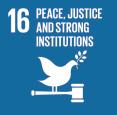

Recognising the complexity of our sustainability journey and the limited internal expertise, the Fund appointed an ESGAdvisor The advisor plays a vital role in accelerating our sustainability initiatives plus knowledge pass-over The responsibilities include (but not limited to) policy development, cultural evolution, establishment of a dedicated team, ensuring excellence in execution, and evaluation of our sustainability efforts.

As a certified sustainability professional, I collaborate with Board colleagues to enhance awareness and ensure a comprehensive understanding of sustainability. Management is tasked with developing a strategic plan that encompasses sustainability ESG criteria. Once established, this plan will guide our oversight, employing appropriate tools, implementation strategies, and stewardship to accelerate sustainability initiatives.
Awell-defined sustainability policy will provide the Board with a clear roadmap.This roadmap will outline what needs to be assessed, implemented, and delivered by management to achieve our sustainability goals. Once the policy is in place, management will report on sustainability initiatives with full transparency and guidance.
Oversight of sustainability is currently undertaken by ourAudit and Risk Committee. Given current legal constraints, our board charter does not provide for a dedicated sustainability committee.To address this, we are actively pursuing an amendment to the board charter to formalise sustainability governance, which is essential for supporting our 2035 strategy centred on sustainable practices. Failure to establish these structures risks undermining stakeholder confidence in our ability to effectively manage sustainability initiatives.


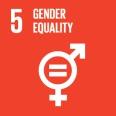
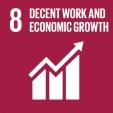

Consensus building across the Board, management, and throughout the Fund has been pivotal. We are defining concrete actions and expectations for each department to embed sustainability principles into their operations. Moving forward, our focus is on developing specific goals, initiatives, measurable key performance indicators (KPIs), and timelines aligned with our Vision 2035.This includes a rigorous assessment of risks related to data collection and analysis, critical for mapping out our roadmap and effectively executing our ESG metrics.
Transition efforts
Fast-tracking our transition in critical environmental areas such as waste management and electricity is imperative.The Fund continues to monitor and assess its early steps in the ESG journey, aiming to recognise staff and departments adhering to these initiatives. Notably, our efforts in paper management and noise pollution management have been commendable.
Accountability permeates all organisational levels, prompting the integration of ESG criteria into departmental remuneration and performance standards. Our contracts now align with ESG metrics and the PPDAAmendmentAct 2021, reflecting our commitment to sustainability.
The Fund started preparing for climate action funding opportunities in the past year. Once this is achieved, it could significantly support initiatives like the CarbonAcademy for COP29/30, aligning perfectly with our focus on both environmental and social well-being, particularly lives and livelihoods.
NSSF prioritises improving lives and livelihoods. Securing climate action funding aligns with this focus, potentially supporting impactful corporate social investments directly linked to the Fund's 2035 strategy, particularly the livelihoods programme.This broader commitment to social sustainability also extends to partnerships with organisations like Rotary International, a global institution driving social good in health, education, and livelihoods for over a century In the past year, the Fund made a strategic investment in the foundation of Uganda's economy, agriculture, by establishing the NationalAgricultural Marketing Company (NAMCO). NAMCO will empower farmers by connecting them with new markets and opportunities, driving job creation, food security, and financial inclusion at the household level.This paves the way for stronger families, increased resilience, and a savings culture that will secure a brighter future for generations to come.

We recognise the impact our investments have on various stakeholders throughout our value chain. For example, in the case of NAMCO, we will assess whether farmers are practicing sustainable agricultural methods. We will also evaluate if their activities negatively affect the environment or society
Similarly, for our real estate portfolio, we will assess whether suppliers are using sustainable building technologies and the carbon footprint associated with those technologies.
The Public Procurement and Disposal of PublicAssetsAuthority (PPDA) has also emphasised the importance of integrating sustainability into public entity practices. We will adhere to these guidelines in our procurement processes. We have engaged KPMG to provide a historical view of our investments over the last decade.This assessment will analyse the environmental impact of these investments, informing remediation and future investment decisions.
Our employees are the heart of our success.This year, we expanded the Fund's Wellness Programme to prioritise their health and well-being. We also launched a mental health campaign, recognising its importance in overall staff wellness. The positive impact is reflected in employee satisfaction and the Fund's strong performance. We remain committed to ongoing initiatives that promote staff well-being and satisfaction.
The Fund is committed to raising its profile as a champion for sustainability. We will continue to demonstrate the resilience, purpose, and drive that have characterised our work for the past 4-5 years. We will not back down from this challenge; instead, we will build upon our successes and forge new partnerships, both within Uganda and internationally, to champion the need for sustainable social security provision and coverage for all. By putting our members at the centre of everything we do, we believe a secure social security journey is achievable for everyone.
“A new day brings with it the promise of a brighter future for Uganda. At NSSF, we see this not just as an opportunity but as a call to action. By embracing inclusivity and fostering a culture of entrepreneurship, we can empower Ugandans to save for the future and unlock their full potential. Together with our strategic partnerships, we are building a more sustainable and prosperous future where the success of the Fund and the well-being of our members, society, and the environment are all inextricably linked. This is the essence of shared value, and it is the foundation upon which we will build a stronger, more resilient Uganda for generations to come.”
Mr. Patrick M. Ayota Managing Director
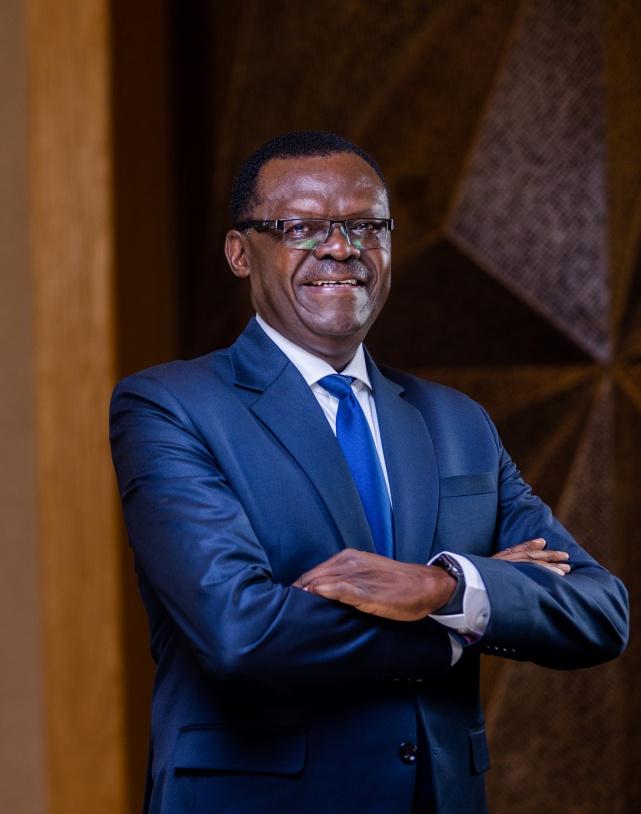
This year's Sustainability report reflects our commitment to building a future that benefits the Fund, our members, society, and the environment. We recognise that true sustainability hinges on a holistic approach, where financial success goes hand-in-hand with social responsibility and environmental stewardship.
Our initiatives remain firmly grounded in the UN Sustainable Development Goals (SDGs), particularly SDG 8 (Decent Work and Economic Growth), SDG 1 (No Poverty), and SDG 2 (Zero Hunger). We actively contribute to financial literacy programmes and create economic opportunities, particularly in the agricultural sector
We acknowledge the potential disconnect between corporate sustainability reporting and the life experiences of the local population. While environmental considerations (SDG 13) are crucial, we prioritise social impact (SDG 8). We do not simply tick boxes; our actions are driven by a genuine commitment to the well-being of our planet, our people, and our communities.
Sustainability as a cornerstone
Everything we do at the Fund is driven by a clear purpose: an unwavering commitment of making saving a way of life while building a strong, prosperous organisation. We recognise the potential for growth in Uganda, and we are committed to using our resources to achieve both financial and social objectives.
Recognising the long-term impact needed to address societal challenges, we are rethinking and innovating our investment approaches.This dedication extends beyond traditional financial strategies. Our groundbreaking Hi-Innovator Programme exemplifies this approach. By directly supporting entrepreneurs, many of whom are working in agriculture, we are making long-term investments in Uganda's future.
Hi-Innovator provides them with the resources and mentorship they need to thrive, fostering economic growth and job creation.The programme's success, with UGX 706 M already generated in contributions, demonstrates the power of this approach. We are not only creating a new generation of business leaders but also empowering individuals to build a secure future and contribute to a more prosperous Uganda.
Chairman of the Board,Dr. Peter Kimbowa
Expanding our reach and empowering our members
Our ambitious Vision 2035 targets 15 million members, representing 50% of Uganda's working population. Reaching this goal necessitates a focus on the informal sector, particularly in agriculture. We are dedicated to building a culture of saving within this segment by enhancing financial literacy and boosting earning potential.
Empowering farmers through market access and productivity
Agriculture plays a key role in achieving our goals. Many Ugandan farmers face challenges in accessing markets for their produce, limiting their income, and hindering their ability to save. NSSF is committed to tackling this issue. We will work to:
• Identify and connect farmers with reliable markets, both domestic and international, to ensure they receive fair prices for their crops
• Promote sustainable farming practices that enhance productivity and soil health, ensuring long-term agricultural sustainability
The Otuke Village experiment:Amodel for success
In the village of Otuke, we piloted a programme to empower rural women. We linked saving with opportunity by offering them a chance to acquire new hoes through the discipline of saving in their NSSF accounts. Over 6,306 women participated, exceeding their savings goals and collectively saving UGX 18.92 M.This initiative demonstrates the power of financial inclusion and goal setting in building a culture of saving.
Investing in our people
At NSSF, we understand that a healthy workforce is a productive workforce. Our comprehensive wellness programme encourages annual health checkups, provides mental health resources, and promotes healthy lifestyle choices.This investment in our employees not only benefits the Fund but also equips them to be community leaders and agents of positive change.
Focusing on sustainability
In this report, we elaborate on our sustainability related ambitions, goals, and metrics, as well as our progress to date. We are actively developing a robust sustainability framework to guide our governance practices and promote regional sustainability initiatives.The Fund's Vision 2035 emphasises a greater commitment to impact partnering, exploring strategic partnerships that further propel our purpose. Our efforts are deliberate and focused on creating a measurable and meaningful impact beyond being just a social security provider but also a partner in our members' journeys.
At the Fund, we believe a brighter future for Uganda is a future where prosperity is shared. By empowering our members, particularly those in the informal sector, we are not only fulfilling our social responsibility but also creating a more sustainable and resilient financial ecosystem for generations to come.
The Fund's commitment to ESG considerations is integral to our operations. We are dedicated to improving lives for our members, customers, and communities by anticipating and managing ESG matters. Our goal is to drive meaningful action on sustainability, setting a standard for fostering a thriving society and promoting economic growth for a greener future.
As a Public Interest Entity, the Fund is uniquely positioned to demonstrate its purpose beyond providing annual returns.This has led to a comprehensive review of our sustainability actions and reporting, necessitating a cultural shift towards a long-term, impactful view on sustainability

The review of the Fund's sustainability journey within the reporting ecosystem revealed that the Fund falls in the category of Voluntary disclosure.This commitment to transparency enhances our understanding of ESG performance and allows us to report our activities effectively. With a growing awareness, the Fund has placed significant emphasis on building capacity to strengthen the reporting ecosystem.
To support our ESG initiatives, we focus on several key areas:
• Governance, policies, and processes: Implementing robust governance structures and policies that align with our sustainability goals.
• Holistic ESG integration: Integrating ESG factors comprehensively across all aspects of our operations.
• Sustainability across the investment value chain: Embedding sustainability considerations into our investment processes.
• Measurement and reporting: Developing systems to measure sustainability risks, impacts, and performance, and producing high-quality annual sustainability reports.
• Partnerships: Collaborating with peers and international initiatives to enhance our ESG efforts.
To further guide our journey, we engaged with an external advisor to explore sustainable practices.This engagement focused on:
1. Review of values and mission: Advising on new terminology and frameworks reflecting our sustainability commitment.
2. Strategic plan evaluation: Identifying opportunities to drive our sustainability agenda.
3. Governance and policy development: Supporting the creation of policies and processes for effective implementation of sustainability initiatives.
4. Investment value chain integration: Advising on integrating sustainability throughout our investment activities.
5. ESG core team formation: Establishing a dedicated team to manage ESG efforts.
6. Measurement metrics: Developing metrics to assess ESG risks, impacts, and performance.
7. Sustainability reporting:Assisting in creating an annual sustainability report to document our ESG activities and progress.
Managing Director,PatrickAyota
Our review utilised various sustainability reporting frameworks, standards, and protocols, focusing on ESG themes.The process involved:
• Phase 1 - Baselines and materiality assessment: Reviewing existing documents and conducting a materiality assessment to identify key sustainability issues.This phase included literature reviews, interviews, and discussions to understand the ESG landscape and benchmark against global practices.
• Phase 2 - Setting goals and targets: Engaging with our team and Board to define goals and targets, refining our sustainability blueprint based on identified issues and emerging insights.
• Phase 3 - Strategic road map: Synthesising findings to develop a strategic framework for sustainability, aligning with our long-term goals and objectives.
Understanding the sustainability reporting ecosystem
To navigate the reporting ecosystem, we identified its components:
• Frameworks: High-level guidelines for identifying, assessing, and reporting sustainability issues. Examples include the Global Reporting Initiative (GRI), SustainabilityAccounting Standards Board (SASB), andTask Force on Climate-related Financial Disclosures (TCFD).
• Standards: Detailed guidelines building on framework principles, outlining precise requirements for reporting specific sustainability topics.
• Protocols:Tools, methodologies, or instructions for measuring, monitoring, and reporting sustainability performance in line with frameworks and standards.
Integrating frameworks, standards, and protocols enhances the credibility, transparency, and impact of our sustainability reporting.
Reporting recommendations
• Adopt the Integrated Reporting Framework with ISSB standards (IFRS S1 and IFRS S2) for subsequent reporting.
• Conduct a comprehensive materiality assessment using the double materiality concept, engaging stakeholders to measure performance based on set targets.
• Focus on impact rather than activity or input to refine our sustainability blueprint.
• Ensure our materiality assessment covers all potentially relevant ESG topics.



Target setting
Materiality
and
Refine sustainability targets and objectives through further discussions across departments
Conduct comprehensive assessments every two to three years, with periodic reviews
Enhance knowledge and skills related to sustainability for our Board and team
Develop streamlined processes and governance structures to support sustainability efforts
Create a dedicated team to coordinate and innovate sustainability initiatives
Establish specific metrics to track and manage sustainability performance
By focusing on these areas, the Fund aims to create a significant positive impact through our sustainability efforts, ensuring effective contributions to our communities and environment while maintaining transparency and accountability in our reporting.
Material matters are those issues that could affect our ability to create value in the short-, medium- and long-term.These matters influence our strategy and how we manage our associated risks, as well as opportunities we explore because of these factors.
In 2024, we conducted a materiality assessment to identify our most relevant (or “material”) reporting topics from an ESG perspective.Asurvey was conducted within the Fund to gather feedback from internal and external stakeholders, providing insights into the level of engagement on ESG initiatives. It was also intended to give us a baseline to set key targets and objectives that will inform the current and future reporting cycles.
The assessment was based on a qualitative analysis of the responses received through the survey.The survey ranked the responses on a scale of 0 to 5. During analysis the double materiality concept was applied that assesses both the impact the fund has on society “outward impact” and the impact of the identified topics on the business of the Fund.The survey confirmed that sustainability continues to increase in importance to the Fund and all stakeholders.
The ESG topics identified, which we refer to as “material ESG issues” throughout this report, inform which issues we report on, which issues we consider raising to our Board of Directors and how we establish our ESG priorities.They reflect the ongoing importance of issues connected to climate change, diversity and social justice, and business ethics and governance. Our materiality assessment focused on impact rather than activity or input.
We identified key ESG topics crucial to our sustainability strategy:
- Carbon emissions: Reducing our carbon footprint and promoting energy efficiency
- Biodiversity: Protecting natural ecosystems and enhancing biodiversity in our operations.
- Real estate portfolio: Implementing sustainable practices across our property investments.
- Post-consumer waste: Minimising waste and promoting recycling initiatives.
Environmental
- Sustainable investments: Allocating capital to environmentally sustainable projects.
- Diversity and inclusion: Fostering a diverse and inclusive workplace.
- Social impact (CSI): Contributing to community development and social initiatives.
- Employee well-being: Ensuring the health and well-being of our employees.
Social
- Relevance to members: Tailoring our services to meet the needs and expectations of our members.
- Ethics and compliance: Upholding the highest standards of ethics and integrity
- Regulatory compliance: Adhering to all relevant laws and regulations.
- Political interference: Safeguarding our operations from undue political influence.
Governance
The Fund has appointed the Board as responsible for delivering ESG commitments.The Board is supported by the following Committees:
Social and economic development
•Anti-corruption and bribery
• Promotion of equality
• Human rights
•Anti-money laundering
Ethics
• Monitoring of reported ethics cases and investigations
Environment
• Responsible consumption
• Impact of Fund operations on the environment
• Impact of investee companies on the environment
Stakeholder engagement and management
• Relationships with key stakeholders
Sustainability and community development
• Development of communities through CSI activities
The Fund's InternalAudit team plays a vital role in our ESG strategy by assessing risks amid evolving regulations. As the ESG regulatory landscape continues to change, we have identified necessary updates to address these shifts. Our internal audit function has mechanisms in place to track ESG-related changes and assess their impact on the Fund's processes.This objectivity ensures robust checks and balances. Given their existing experience in overseeing the Fund's operations, InternalAudit will expand its scope over the next 12 months to review all ESG frameworks as part of its assurance activities.
Internal audit provides assurance on key areas across the six capitals.
Manufactured ITinfrastructure and real estate portfolio management
Financial Strategy execution, financial performance, investment processes, and financial reporting
Human Organisational restructuring, recruitment, rewards, benefits, and training
Social and Relationship Strategic partnerships, CSI activities, and community impact
Natural ESG frameworks and compliance
Intellectual Brand management, data security, and ITframeworks
This comprehensive assurance framework supports NSSF in delivering value and ensuring transparency in its operations and reporting.

At NSSF, sustainability is at the core of our mission. Over the past decade, we have focused on enhancing the value and security of the social security benefits for our 2 million+ members, as evidenced by our recent milestone of UGX 22.13Tn in assets under management (AuM).This achievement has allowed us to consistently deliver a minimum return of 2% above inflation on member savings, a performance validated by an 85% satisfaction rating.
As we transition from our 2015–2025 strategic plan to Vision 2035, financial inclusion will be a central pillar of our strategy. Our goal is to expand our membership coverage from 2 million to 15 million working Ugandans by 2035.This ambitious target will require a unified effort to protect both the business and natural environments, as well as the society we serve, through strong and transparent governance.
Our commitment to sustainability is embodied in our ESG principles, which guide us in integrating sustainability into every aspect of our operations.This approach enables us to champion environmental stewardship, social responsibility, and economic resilience.
NSSF is dedicated to minimising its environmental impact through innovative and proactive measures. We are focused on reducing greenhouse gas emissions, conserving energy, and promoting resource efficiency. Our real estate investments adhere to green building practices, ensuring energy-efficient and environmentally friendly developments.
By incorporating renewable energy sources and sustainable waste management practices, we aim to set a standard in the real estate sector that prioritises biodiversity and respects local ecosystems.


At the heart of our ESG-driven sustainability agenda is our commitment to social well-being. NSSF seeks to create value for both members and the broader community through initiatives that enhance education, health, and economic opportunities. Our Corporate Social Investment (CSI) programmes are designed to uplift vulnerable segments of society by investing in community development projects that provide access to clean water, sanitation, and healthcare.
Our Financial Literacy and Hi-Innovator Programmes support youth development by equipping them with skills for a sustainable future, ultimately fostering employment opportunities and ensuring our relevance and viability as a business.
We also prioritise the welfare of our employees by maintaining a diverse, inclusive, and supportive workplace that encourages continuous learning, innovation, and growth.
Our sustainability efforts are overseen by a robust governance structure that ensures guidance, accountability, and transparency in decisions affecting our stakeholders, including members, employees, investors, suppliers, and the broader community
NSSF is committed to high standards of corporate governance. We invest in the skill development of our Board and Executive Management team to enable Trustees to fulfil their fiduciary duties. Our governance structures safeguard independence and prudence in decision-making, supported by experienced employees. We use a balanced scorecard framework to measure value-to-member and value-to-society, linking it to compensation and ethical standards. We exceed regulatory requirements by timely publishing our audited financial statements and subjecting them to public scrutiny during theAnnual Members' Meeting. Member feedback directly influences our governance decisions, ensuring our efforts align with stakeholder benefits.


Our approach to economic resilience emphasises sustainable growth, risk management, and value creation. By diversifying our investment portfolio across various sectors and geographies, we mitigate risks and enhance portfolio stability, ensuring consistent, long-term returns. Over the past decade, our investment portfolio has withstood various challenges, including the Covid19 pandemic, which led to a significant increase in benefit payouts while maintaining stable returns for our members.

The visual depiction of our strategy illustrates our approach to ESG and sustainability, which is premised on:
Identifying commercial opportunities to address ESG challenges
Identifying and responding early to ESG-related risks
Leading broader change by using our influence through collaboration across the value chain
The Fund is incorporating reporting frameworks, standards, and protocols into its sustainability strategy and reporting structure through an iterative, interconnected process.To enhance understanding of their interplay, the Fund will follow this process in the following order over the coming years:
Process
Engagement and materiality process Framework selection Standard identification Protocol application
Approach
Conduct a materiality exercise to link sustainability initiatives with business benefits.This will involve engaging internal and external stakeholders to identify and prioritise issues relevant to the Fund's business.Additionally, collaboration across departments will be essential to achieve bold commitments aligned with the strategy
Select a sustainability reporting framework that aligns with our strategic goals, stakeholder expectations, and industry context.
Status
The Fund has reviewed the ESG consultant's recommendations for the next materiality assessment and is preparing for the upcoming reporting cycle while working collaboratively with its departments.
To date, the following frameworks and standards have been adopted:
• King IV Report on Corporate Governance for SouthAfrica TM (King IV )
• Integrated Reporting Framework
• Global Reporting Initiative (GRI standards)
• Sustainable Development Goals (SDGs)
• International Financial Reporting Standards (IFRS)
• Task Force on Climate-Related Financial Disclosures (TCFD)
Identify the relevant standards, both universal and industryspecific, to capture and report material sustainability issues.
After discussions with the Consultant, the Fund has identified and adopted the relevant reporting standards.Additionally, the Fund will engage with its Regulator and industry stakeholders to initiate discussions on developing industry-specific standards to support the creation of a reporting framework within Uganda.
Implement the appropriate protocols to measure, monitor, and report sustainability performance in alignment with the selected framework and standards.
This is ongoing following the adoption of the IFRS S1 and S2 standards.
By cohesively integrating these elements, we will enhance the credibility, transparency, and impact of our sustainability reporting, driving positive change toward a more sustainable future.
With guidance from our ESG advisor, we will continue to evaluate our current structure and sustainability strategy during FY2024 to ensure they are fit for purpose going forward.This will involve conducting a gap analysis to identify areas needing improvement for compliance with the standards.
We will adopt the recommendations on reporting and progressively implement them over the next few years to ensure our sustainability reporting accurately reflects our strategy and the value we aim to provide to our customers.The next steps are:
1. We will adopt the Integrated Reporting Framework along with the ISSB standards of IFRS S1 and IFRS S2. These standards will guide us in preparing and reporting our sustainability-related financial and climate disclosures.
2. We will conduct a materiality assessment to determine what is material, reassessing materiality judgments at each reporting cycle. This process will help us identify sustainability-related risks and opportunities that could reasonably impact our business model and strategy.
3. We will disclose the process we follow to determine these risks and opportunities, as required by IFRS S1.
On the road to Net Zero: Scope 1, 2, and 3 GHG emissions
In 2023, climate change continued to impact people and ecosystems globally, with extreme weather events affecting Uganda as well. Every business has a role in mitigating risks to both people and the planet. Over the next 24 months, we aim to accelerate our performance, targeting a 13.58% reduction in GHG emissions compared to the 2024 baseline assessment. Climate change presents both material risks and opportunities for us. We utilise theTask Force on ClimateRelated Financial Disclosures (TCFD) methodology to assess and disclose our climate risks and opportunities.

In 2024, we started on baseline external assessment to ascertain the Fund's Net Zero Roadmap (see the next report issue) to set out how we plan to meet our net zero commitment by 2050. Guided by the Roadmap, we shall be transforming our business model to deliver reductions in GHG emissions across all three Scopes of our activities, according to the criteria approved by the Science BasedTargets initiative (SBTi).
Adetailed analysis of our GHG emissions will be published within the next 12 months as part of our baseline assessment. To address our Scope 3 emissions, we will develop a comprehensive strategy focused on reducing carbon emissions from logistics and enhancing collaboration with suppliers, stakeholders, and communities to promote regenerative agricultural practices.
For Scopes 1 and 2, which cover emissions from our own operations, our primary strategy will involve increasing energy efficiency and transitioning to renewable energy sources. We will also establish near- and long-term science-based emissions reduction targets with the SBTi, aligned with our Vision 2035 goals.
Furthermore, we have identified five sustainability drivers which are based on assigning value to the capital assets we depend on for our economy and society to flourish, as they are all interdependent. Our sustainability drivers are embedded in our strategy and are focused on ensuring sustainability for our business, our customers, communities, society, the economy and the environment.
Our strategy is underpinned by good corporate governance, which is implemented in an integrated manner, promoting an ethical culture, good performance, effective control and legitimacy
To view our strategy on a page, click here.

“FY2023/24 was a remarkable year for the Fund, achieving the 20Tn Vision 2025 target ahead of schedule. Despite initial regional economic uncertainty and foreign exchange exposure, the recovery of the Kenyan shilling in February 2024 positively impacted the bottom line, resulting in an unrealised foreign exchange gain.
The Fund delivered impressive results on its key performance indicators such as income, contributions, and asset size, showcasing our commitment to sustainable value creation for our members and stakeholders. Our dedicated efforts, strategic foresight, and agile response to market conditions allowed us to maintain a solid performance despite the challenges, underscoring our resilience and long-term focus.”

Operating at the heart of value creation, the Finance Department is driven towards transforming its scope; a deliberate effort towards becoming an advisory function.To achieve this vision, the function has defined its strategic objectives across key themes including team finance, data, finance processes, stakeholder management and advisory. We continue to embrace innovative approaches by leveraging technology to improve processes, empower data-driven insights, and develop a multi-disciplinary agile team.

To support value creation across the organisation and contribute to achievement of business goals, the Finance Department Strategic Plan (2024 – 2028) provides for a clear strategic vision, efficient processes, accurate data, skilled team, robust technology, and effective communication in this continuously changing business landscape. We have made commendable progress in the first year towards becoming a fit-for-purpose and future ready Finance Department that is able to appropriately support the Fund in achieving its Vision 2035 strategy and beyond. Despite facing regulatory changes, uncertain operating and economic environment in FY2023/24, we made notable progress towards this vision, accomplishing the following milestones:
Commitment to ESG: The Fund remains committed to driving action on sustainability, recognising its critical role in fulfilling our mission to improve the lives of our members, customers, and communities.This year we conducted a sustainability materiality assessment including a maturity model with support of an independent consultant, to identify, assess, and prioritise key ESG topics.The findings of this assessment provided a clear roadmap for the prioritisation of our sustainability efforts, allowing us to focus our resources on those areas where we can make the greatest positive impact.
Real time reporting and segmentation: We remain focused on achieving fully insights-driven reporting to support value-adding and timely decision-making.Akey accomplishment this year was establishing the structure for segment reporting, aimed at enhancing visibility into the performance of each business unit within the Fund.
Process efficiency: With a strategic focus on aligning with evolving business needs and the operating environment, we continue to enhance operational efficiency through automation and process re-engineering. Key achievements this year include the deployment of BankAuto Reconciliation and the integration of the Smartlife system, which manages our voluntary portfolio.
Business advisory: In the course of our advisory journey, we have continued to support external entities with Business Development services during the year under the Hi-Innovator programme and also conducted Financial Literacy sessions for the 2023 cohort. Specifically, we supported three entities, St Eliza, Ka cyber and Simply Nature. Business needs addressed this year included business process re-engineering, formulation of a strategic plan, financial and valuation modelling.
Leveraging data analytics for strategic decision-making: We heightened our involvement in conducting comprehensive strategic analyses which offered value to both the Fund and individual stakeholders.This has also enhanced our internal capacity through developing a more skilled and analytical team that can provide sophisticated advisory services to the organisation.
Employee development and upskilling the team: We intensified a significant initiative this year to upskill, raise awareness and foster interest in emerging technologies likeAI, DataAnalytics, Business Intelligence, etc. We also implemented several measures aimed at providing opportunities for professional growth including promotions and movement to other departments within the Fund.
Reporting awards: We remained steadfast in our commitment to financial excellence, supporting the Fund towards achieving its strategic objectives.This commitment to excellence was recognised through various prestigious awards, both locally and regionally
Noteworthy awards received during the year include:
Locally, NSSF won five accolades at the 2023 13th edition of the Financial Reporting Awards (FiRe) by the Institute of Certified PublicAccountants Uganda (ICPAU):
• NSSF won the Integrated Report of theYear SilverAward
•Additionally, NSSF was the overall winner in the Sustainability, Public Sector Entities, Presentation and Communication categories and took Certification of Recognition for the Corporate Governance categories
This is critical in demonstrating transparency and accountability to our members, government, and all other stakeholders.The Finance Function remains committed to sustaining excellence while continuously adapting to the changing operating environment.

1. Talent development and succession planning: We remain focused on staff training and upskilling across the four critical categories: technical skills, professional knowledge, strategic awareness and leadership capabilities.This will be designed to ensure a knowledgeable and multi-disciplinary agile team that can effectively support the Fund's objectives with requisite skills for the future.
2. Efficiency: Inspired by innovation, several projects are underway to implement automation and process enhancements, including the rollout of a new ERP, scaling of Robotic ProcessAutomation (RPA), and deploying a visual database design tool.These initiatives aim to leverage technology to streamline critical business processes.
Additionally, we are improving cost efficiency through the implementation of Value Proposition Budgeting, which enhances the alignment between administrative costs and strategic initiatives.
Economic activity remained resilient despite multiple successive shocks.The external current account balance is estimated to have remained relatively stable, but a decline in foreign exchange reserves, along with rising portfolio outflows, increased depreciation pressure on the Ugandan shilling (UGX). In response, the central bank tightened monetary policy as these depreciation pressures worsened the inflation outlook in the second half of FY2023/24.
The Kenyan economy faced challenges from global economic headwinds, including rising interest rates in developed economies, political instability, and reduced investment capital inflows.This resulted in the depreciation of the Kenyan shilling against regional currencies, including the Ugandan shilling, which reduced the value of the Pension Fund's regional investments in Kenya. However, since February 2024, the Ugandan shilling has depreciated against the Kenyan shilling, leading to a noticeable recovery across all our positions in Kenya.The Fund holds significant investments in Kenyan government bonds and equity securities.
Every new day brings with it emerging needs from our membership. In alignment to the new law, the Fund has developed innovative products that meet the diverse needs of its customers.The Fund aimed to launch several new products in FY2023/24, such as the Smart Life Voluntary Savings Plan and a value proposition for mandatory savings, however the necessary regulations were not released in a timely manner, leading to setbacks in the rollout of these new offerings.
Despite this, NSSF remains committed to this mandate and we have realigned our business model e.g. through establishing a new department to manage these innovative offerings and intensifying collaboration through strategic partnerships.
Stakeholder engagement is crucial to NSSF's operating environment.The Fund recognises the importance of maintaining strong relationships with stakeholders, including members, regulators, government, and the wider community. Our business activities and reputation are both directly and indirectly affected by these relationships. By proactively engaging with stakeholders, we align our business strategy, manage social expectations, minimise reputational risks, and influence the environment in which we operate.
The operating environment is dynamic, and NSSF faces a range of internal and external risks.To address these, the Fund has implemented a robust risk management framework that includes risk identification, assessment, monitoring, and mitigation.This framework has enabled the Fund to remain resilient in the face of challenges.Additionally, NSSF has established an internal audit function and an Enterprise Risk function to support and enhance its risk management efforts.
3. BusinessAdvisor: The department is committed to providing expertise and support across various areas of the Fund in FY2024/25. We will continue providing financial literacy sessions, offering business development services to selected businesses under the Hi-Innovator programme, and delivering tax advisory support, particularly to contracts committees and procurement teams, among others.
4. Sustainability: In line with our commitment to creating shared value for sustainable growth, we are prioritising the development of an ESG framework for the Fund.This includes establishing an ESG function to drive sustainability initiatives and creating a robust system for tracking and reporting our ESG performance.
Looking ahead, we are excited at the prospect of continuous change through capitalising on the needs of our members and the opportunities presented to the Fund by the NSSFAct Cap 2030. With our expanded mandate, we aim to deliver sustainable value to our members and stakeholders.

The Fund achieved commendable performance across most key performance indicators.Total assets, realised income, cost of administration, and contributions all surpassed their budgeted expectations.The asset size grew to UGX 20 trillion by January 2024, reaching this target nearly 18 months ahead of the expected date of 30 June 2025.
Additionally, the Fund recognised a significant unrealised foreign exchange gain on the regional investments, especially due to the recovery across all our positions in Kenya.
FY2023/24 key performance highlights
1. Interest income which makes up over 93% of total income, grew by 14% from UGX 2.044Bn in FY2022/23 to UGX 2.340Bn in FY2023/24.This was driven by higher yields especially in the Kenyan market and appreciation of the Kenyan currency
2. Real estate income increased by 11% from UGX 11.95Bn in FY2022/23 to UGX 13.29Bn in FY2023/24 due to rent escalations and increased unit sales in Mbuya compared to the prior year, but below budget by 17% due to lower than planned occupancy rates and house sales.
3. Dividend income grew by 21% from UGX 145.1Bn in FY2022/23 to UGX 175Bn in FY2023/24.This was driven mainly by dividend income fromAirtel Uganda and a general increase in dividends earned from MTN Uganda, Safaricom, National Microfinance bank, Cooperative Rural Development Bank (CRDB)Tanzania, Stanbic Bank Uganda Limited, UMEME andTanzanian breweries.
As a result, total realised revenue grew by 15% from UGX 2.201Bn to UGX 2.529Bn driven by the growth in fixed income, dividend income and real estate income.
Annual operating costs increased by 16% from UGX 191Bn in FY2022/23 to UGX 222Bn in FY2023/24, and 3% below the budget of UGX 228Bn.The increase from the previous period is attributed to the Fund's continuous strides towards its strategic direction (Vision 2035), driven by initiatives to improve sustainable return and benefits to members through the Fund's expanded mandate, increased strategic partnerships and engagement, processes to boost internal capacity and innovative solutions to improve efficiencies in the delivery of services to our members.
The annual cost-to-income (Total Income) ratio dropped to 7% in FY2023/24, down from 16.45% in FY2022/23, driven by a significant increase in total income due to unrealised exchange gains of UGX 640Bn.The expense ratio also improved, reducing to 1.00% in FY2023/24 from 1.03% in FY2022/23, better than the target of 1.08%.
Revenue, Collections and Cost 10Year Trend (UGX Bn)
Whereas revenue and collections have grown by a compound annual growth rate (CAGR) of 18% and 12% respectively, costs have only grown by a CAGR 13% over a 10-year period (FY2013/14-FY2023/24). Revenue has posted significant growth over the historical period, and it continually surpassed collections from FY2018/19 onwards. Revenue was higher than collections by 4% in FY2018/19 versus 31% in FY2023/24 and this gap continues to grow

The Fund declared a return to members of 11.5% in FY2023/24 resulting in UGX 2.073Bn compared to 10% in FY 2022/23 which resulted in UGX 1.584Bn.
•The Fund balance sheet size grew by 19% to UGX 22.133Bn (FY2022/23: UGX 18.560Bn)
•This growth is consistent with the combined growth in investments driven by contributions and income generated including unrealised gains net benefits paid out.
The Fund invests in 3 asset classes: Fixed Income Securities, Equity Securities and Real Estate.
•The 21% growth in Fixed Income investments to UGX 17.293Bn (FY2022/23: UGX 14.340Bn) was due to the increased in investment in Fixed income.
• Equity Investments increased by 23% to UGX 2.924Bn (FY2022/23: UGX 2.370Bn) attributed to the gain driven by a rise in share prices for several equities, additional shares fromAirtel Uganda and MTN Uganda, and appreciation of the Kenyan shilling further amplified the market's performance.
• Real Estate Investments increased by 10% to UGX 1.536Bn (FY2022/23: UGX 1.398Bn) due to progress on ongoing projects including PensionTowers,Temangalo, Lubowaand Mbale.
Member Fund grew by 15% to UGX 21.950Bn (FY2022/23: UGX 19.068Bn) driven by contribution collections of UGX 1.932Bn and interest credited to members of UGX 2.073Bn net of total benefits paid of UGX 1.121Bn.
Following the favourable ruling from the High Court in November 2020, which categorised interest paid to members as a deductible expense for income tax purposes, NSSF attained another milestone.
In FY2023/24, URArefunded UGX 25Bn initially collected from the Fund in respect to this case. However, URAintends to appeal the case.
The closing cash and bank balances stood at UGX 295Bn in FY2023/24 compared to UGX 191Bn in FY2022/23.
Net cash generated from financing activities amounted to UGX 828.3Bn. Net cashflows used in investing activities was UGX 606Bn whereas net cashflows used in operations was UGX 118Bn.
This is a clear indicator of the Fund's ability to generate enough cash for all routine operations, financing and investing activities.

In response to the constantly evolving global business environment, the InternationalAccounting Standards Board (IASB), which develops and approves International Financial Reporting Standards (IFRSs) under the oversight of the IFRS Foundation, regularly issues new standards and amendments to existing ones.
Several amendments to existing standards became effective during the year. However, these had little/no impact on the Fund's financial statements.These included the following:
• Lease liability in sale and leaseback:Amendments to IFRS 16 - effective 1 January 2024
• Supplier finance arrangements:Amendments to IAS 7, Statement of Cash Flows and IFRS 7, Financial Instruments: Disclosures - effective 1 January 2024
• Non-current liabilities with covenants:Amendments to IAS 1 - effective 1 January 2024
There are new and revised International Financial Reporting Standards issued but not yet effective.These included the following:
• Lack of exchangeability: Amendment to IAS 21,The Effects of Changes in Foreign Exchange Rates - effective 1 January 2025
• Sale or contribution of assets between an investor and its associate or joint venture: Amendments to IFRS 10 and IAS 28 - effective 1 January 2025
• IFRS18 Presentation and Disclosure in Financial Statements - effective 1 January 2027
We highlight further the significant accounting policies and how these affect the Fund in Note 3 of the financial statements.



The IMF predicts the world economy to continue growing at 3.2% during 2024 and 2025, at the same pace as in 2023. Sub SaharanAfrica (SSA)'s growth is not enough to dent poverty, according to the World Bank. Global inflation is forecast to decline steadily, from 6.8% in 2023 to 5.9% in 2024 and 4.5% in 2025, with advanced economies returning to their inflation targets sooner than emerging markets and developing economies.The global economy has been surprisingly resilient, despite significant central bank interest rate hikes to restore price stability
Kenya's economic outlook shows mixed results, stable growth amidst persistent macroeconomic risks. Kenya's growth is projected to reach 5.2% on average during 2024-2026, mainly driven by the private sector as business confidence strengthens and the public sector continues to scale back.
The country faces large funding needs, ongoing risks to external finances, high domestic financing costs, expensive external commercial borrowing, and challenges to fiscal consolidation, despite the government's stronger commitment to narrowing the budget deficit.
Tanzania is expected to continue with a stronger stable growth, higher than Uganda and Kenya.The real GDPgrowth in Tanzania is expected to rise to 6.3% in 2024 supported by increased mining and tourism activity, as well as infrastructure investment. In the long term, real GDPgrowth will benefit from the development of offshore gas fields and liquefied natural gas (LNG) production (from 2029). However, external pressures remain due to reduced level of foreign-exchange (FX) inflows, higher import bill, debt amortisation and a tightly managed exchange rate, resulting in FX shortages.
Uganda's economic prospects are projected to improve with GDPforecasted to grow at 6.5% in 2023 and 6.7% in 2024 according to theAfrican Development Bank.This assumes that global growth slowdown will be short lived. BOU's contractionary monetary policy stance since June 2022 to date, along with the declining global inflation, is expected to reduce inflation further in the coming months.The relatively stable shilling has also helped accelerate the disinflation process. Despite the improvement in the near-term inflation outlook, BOU's current inflation projections remain susceptible to eminent risks like imported inflation and tighter global financial conditions which could weaken the shillings exchange rate.This could exert pressure on consumer prices.
The positive economic outlook provides an enabling operating landscape that will not only be critical to achieving our 2035 vision but also envisioning NSSF of the next decade. Our ambitious goals for the next decade include enhancing our coverage to 50% which currently stands at less than 10%, attaining an asset size of UGX 50Trillion (Currently UGX 18Trillion) and achieving employee and stakeholder engagement scores of 95%.
As a Finance Function, we remain committed to driving Fund-wide strategic and operational excellence by providing data driven decision support, predictive analytics, adoption of relevant emerging technologies for continuous process improvements and talent nurturing.These continuous efforts are critical pillars that strengthen our ability to keep adapting in the ever-changing operational landscape, and ultimately guiding the Fund towards lasting success.



My sincere appreciation is extended to the Board and the Executive ManagementTeam for their great support and co-operation rendered during the year. Special thanks is extended toTeam Finance for their continuous commitment to future readiness through excellence and innovation and, lastly to all NSSF employees for their firm commitment to ensuring that the Fund achieves its purpose of Making Lives Better.
“On behalf of the NSSF investment team, I am pleased to report on the investment performance and initiatives for the reporting period ending 30 June 2024. It is a new day. The fiscal year was yet another period, marked by significant challenges, including the ongoing wars and violence in the Middle East and Ukraine, as well as continued geopolitical tensions between the US, Russia, and China. Almost all nations felt the effects of sustained global economic uncertainty and volatile markets.”
Gerald Paul Kasaato, CFA, Chief Investment Officer
On a positive note, inflation in most countries has decreased from the peak seen last fiscal year, as higher policy rates and borrowing costs have helped ease price pressures globally. However, the easing of inflation towards the central banks' targeted rates (around 2% in advanced economies, and 5% in EastAfrica), has been slow, leading to delays in reducing the respective policy rates.As a result, the fiscal year was marked by significant accomplishments driven by a combination of strategic asset allocation, rigorous risk management, and a commitment to sustainability practices.

Atotal portfolio return performance of 17.10% (compared to 11.93%last year) in the prevailing macroeconomic economic and social conditions is remarkable. The 12-month returns were led by fixed income investments at 17.61%, equity returns came in at 20.07%, and real estate investments delivered 5.56%.The equity returns performance as of 30 June 2024, compared to otherAfrican markets (excluding SouthAfrica) and frontier market benchmarks is depicted in Figure 1 below:
Towards the end of the fiscal year—in the last weeks of June 2024, we witnessed protests in Kenya spearheaded by the Gen Z movement who were unhappy with the Finance Bill 2024 and the tax proposals therein—the effect of the market movement on the performance was more than UGX 100Bn. However, despite the combination of a challenging macroeconomic and social environment, we managed to achieve very strong returns that yet again underscore the resilience and effectiveness of our investment strategy. EastAfrica continues to enjoy robust growth of between 5% and 6% compared to other parts of the world (world 3.2%, Sub-SaharanAfrica 3.8%) in 2024.
It is now the 9th year of the 10-year strategic plan ending 30 June 2025.The Fund continues to grow in all dimensions. By recording assets of over UGX 22Tn, we have achieved the asset goal of UGX 20Tn one year ahead of schedule—as promised last year. Reaching UGX 20Tn was accomplished against a backdrop of legislative changes—such as amendments to the NSSFAct in 2022, the Covid-19 pandemic, and heightened geopolitical tensions globally. By all accounts, this performance is remarkable. I could not have been prouder of the team that I have led for the last 10 years to 30 June 2024.
Atotal revenue of UGX 3.180Tn, 35% above the budget of UGX 2.349Tn, and 175% year on year from UGX 1,178Tn, was impressive. We manage the Fund's investments to maximise long-term returns within the guidelines of the Investment Policy Statement (IPS) using strategies like; market exposure, security selection, and timing across various asset classes.These strategies are complementary and aim to take advantage of the Fund's size and long investment horizon. Each strategy has evolved over time.The contributions to the relative return from all the asset classes show that fixed income continues to contribute most to the Fund's return.
Under the market exposure strategy, the Fund is broadly invested in equities and bonds, following the guidelines in the IPS. Investments are made cost-effectively with the goal of achieving the highest possible return.The security selection strategy relies on fundamental analysis of companies and bonds, using in-house expertise developed over time.The allocation strategy also includes investments in real estate and unlisted equities.
Source: Bloomberg
The year-on-year performance of the equity markets as of 30 June 2024, highlights the effectiveness of the Fund`s investment strategy, of which diversification is key. The regional equity markets` perfomance in the year was bullish (compared to last year), thereby driving the overall equity portfolio return performance to 20.07% (compared to a negative 4.8% in 2023). In relative terms to the markets shown in Fig.1 above, this was impressive.The portfolio continues to benefit from robust stock selection and country weighting. The portfolio also benefited from a tactical addition of MTN andAirtel stocks which are listed on the Uganda Securities Exchange—two value stocks.
The Nairobi Stock Exchange (NSE) saw a significant capital inflow after two consecutive years of net outflows due to capital flight, driven by Kenya's improved macroeconomic conditions around currency and debt.The year-on-year performance of the NSEAll Share Index was 2.33% in KES, but when converted to USD, it rose to 11.84%, making the NSE the best-performingAfrican market in hard currency(USD) terms. Meanwhile, the Uganda Securities Local Index grew by 1.11%, and theTanzanian market saw a recovery with a 12.15% increase, compared to last year's negative 4.0%.
It is important to note that, while the strong gross positive returns are encouraging in this period of uncertainty, our focus remains on the long-term sustainability of the Fund`s investment programme. Capital markets are naturally subject to volatility in the short-term, which is why we prioritise long-term performance.The Fund invests for decades to match its liability profile, not just for a single year To this end, one-year returns of 17.10% are just part of the results picture for a retirement savings scheme like NSSF. Even returns over 3 years (13.50%), 5 years (14.04%) and 7 years (14.60%)— annualised returns, as shown inTable 1 below, represent relatively short to intermediate time frames for measuring results.
It is the 10-year (14.66%) and 15-year (14.05%) returns that truly reflect the Fund's ability to sustainably provide retirement benefits.The returns achieved for the year ending 30 June 2024, in a challenging regional and global environment, affirm the sustainability and strength of the investment strategy
The downsides and trade-offs included benefits payouts, the appreciation of the Uganda Shilling, low compliance, and continued slow progress on projects. The robust performance for the fiscal year is better understood in the context of these challenges.
At the beginning of the fiscal year (July 2023) our economic outlook for the region, particularly Kenya, was more pessimistic than what ultimately transpired by the end of the year As a result, to some extent , our portfolio was positioned more conservatively which limited our gains from the equity market recovery. For example, the Bamburi stock on the NSE achieved a total return of 81.93% (or 83.14 % annualised) between 3 July 2023 and 30 June 2024,according to Bloomberg data.
The NSSF Act Cap 230, provides for mid-term access to members' benefits who meet the qualifying criteria. This required immediate liquidity/cash to fund the pay-outs.As seen in Figure 2 on the right-hand side of the page, benefits pay trajectory continues to be elevated (although there was a reduction in the year of about 7%).The effect is a drag on investment performance, with a sustained heightened focus on treasury and cash flow management.





Regional investments are assets denominated in currencies other than the Uganda Shilling (UGX).The total return on these assets is a function of exchange rate movements between the UGX and the regional currencies (Kenya Shillings, KES,Tanzania Shilling,TZS and Rwandese Franc, RWF). For example, the UGX return on the Fund's KES bonds or equities is affected by the KES return on the bonds or equities as well as movements in the exchange rate between the UGX and the KES. In the financial performance, we consider returns in UGX terms.The UGX return also determines the regional portfolio's contribution to the interest rate declared to members. Put simply, R_UGX ≈ R_RC + R_FX, where R_RC is the KES orTZS return on the regional asset and R_FX is the movement in the exchange rate. Movements in exchange rates (R_FX) represent a sizeable portion of the regional portfolio's risk and return.The Fund's investment strategy views currency risk as a potential source of incremental return, and the fiscal year ended 2024 demonstrated this. Essentially, a weaker UGX against the foreign currencies in which the Fund is invested increases the market value when measured in UGX.
From June 2011 to June 2024, all EastAfrican currencies have depreciated against the USD. Over the period, the UGX, KES, andTZS moved by 44.6%, 44.7%and 63.9% respectively against the USD.This represents an average annual depreciation over the period of 3.1%, 3.1%, and 3.9%, respectively (see investment beliefs later). However, during the fiscal year to 30 June 2024, the UGX continued to appreciate against regional peers (or regional currencies depreciated against the UGX) except for the KES. Figure 3 below shows that when paired against the KES, the second major portfolio currency, the UGX depreciated (or the KES appreciated against the UGX) by 9.9% in the year The UGX appreciated by 10.5%against the Rwandese Franc. Moreover, the UGX appreciated by 8.4% againstTanzania Shilling.The net effect was UGX 255Bn in currency gains.
3: Uganda Shillings against regional currencies over the one year to 30 June 2024

Global conflicts, high oil prices, fiscal consolidation, anxiety, and volatile markets continued in the fiscal year. Our projects, especially those initiated before the Covid-19 pandemic, continue to feel these effects. Nevertheless, we persist in navigating these challenges, balancing compliance with pragmatic solutions to enhance project progress.
Despite the downside effects and trade-offs, we took advantage of several opportunities.
Diversification opportunities in the regional markets
Source: Bloomberg
The impact of the lockdown to combat the spread of Covid-19 continues to weigh heavily on compliance rates.As depicted in Figure 4 alongside, compliance rates stagnated to about 57%. Delays in collections or non-compliance, results in the investment programme being adversely affected. In partnership with the Ministry of Gender, Labour, and Social Development, there is a drive to train and equip labour inspectors to ensure compliance with the existing labour laws.
4: The Fund's compliance trend in the last four fiscal years

Diversification of the portfolio continues to be a continuous journey. Markets volatility continued throughout the fiscal year. We, however, cautiously took advantage of the diversification opportunities albeit with the constraint of market liquidity After two consecutive years of net outflows, the Nairobi Stock Exchange bourse registered a year of net foreign inflows.This was driven by the improved investor confidence following Kenya's successful issuance of the $1.5 billion Eurobond and settlement of the June 2024 Eurobond. Indeed, the NSE posted the highest returns amongAfrican bourses in dollar terms in the first half of 2024 (the period between 2 January 2024, and 30 June 2024) buoyed by a stronger KES and higher blue chip share prices that saw investor wealth at the market rise by KES 291 Bn ($2.26Bn) in the period. In USD terms, the Kenyan equity market achieved a return of 50.4% according to the Morgan Stanley Capital International (MSCI) Index for the six months to June 2024, beating Zimbabwe (34.4%), Mauritius (8.0%) and Morocco (6.8%) which were the other topAfrican performers in the frontier and emerging markets indices.
On the fixed income side, the Central Bank of Kenya maintained its benchmark rate (CBR) at 13%, its highest level since 2012, during its 5 June 2024 meeting, against a backdrop of global economic improvements, ongoing inflationary pressures, and geopolitical uncertainties. In Uganda, CBR was above 10% for most of the fiscal year-closing the year at 10.25%.Therefore, we were able to reinvest funds from maturities and coupons in Kenya and Uganda at attractive yields.
Responsible investment is a core component of NSSF's investment approach and aligns with sustainable development goals.Achieving good long-term returns relies on sustainable economic, environmental, and social progress. We focus on identifying investment opportunities that minimise unacceptable risks, with climate change being a significant concern. We prefer companies that support environmentally friendly activities and engage directly with our portfolio companies on material ESG issues to enhance their long-term value. Our approach is tailored to assess and evaluate issues crucial to each company's long-term value creation and preservation. While we may avoid investments in companies for sustainability or ethical reasons, such as tobacco companies, we find value in investing in firms that promote environmentally friendly and sustainable practices.

Many of the blue-chip companies the Fund has invested in not only offer good returns but also support inclusive prosperity. For instance, investments in the financial and telecom sectors, such as, MTN Uganda,Airtel Uganda, Safaricom, VodacomTanzania, Stanbic Bank, Equity Bank, KCB Bank,Trade Development Bank, CRDB Bank, Bank of Kigali, and NMB Bank, contribute to the growth of small, medium, and micro-enterprises (SMMEs) and entrepreneurship. Inclusivity is a crucial criterion for the Fund's investments. By supporting these companies, the Fund benefits from fintech innovations that provide financial services to previously unbanked populations, thereby enhancing financial inclusion, particularly in rural areas.
The top five equity holdings, depicted inTable 2 below, represent 49.39% of the equity portfolio and are distinguished by their strong sustainability initiatives, which include themes such as economic empowerment, education, health, energy and the environment, food and agriculture, and social protection.As of 30 June 2024, about 90.15% of the equity portfolio comprises of companies with robust sustainability practices, an increase from 77.50% the previous year

Although quantifying the effects of responsible investment is challenging, the Fund has once again demonstrated leadership and trailblazing efforts, surpassing its peers and other corporations in Uganda—both public and private. To better understand whether its resources are contributing positively to Uganda and the EastAfrican region while ensuring financial security for its members, the Fund engaged KPMG to conduct an impact assessment.
KPMG assessed the activities of the Fund including its investment programme for the last 11 years from July 2014 to June 2024.The Fund has invested over UGX 16Tn in the last 10 years to 2024.
The aims of the exercise included assessing whether the Fund's investments and own operations were:
• Generating decent jobs and contributing to economic growth
• Impacting the environment through hazardous waste disposal and water consumption from investment activities and operations
• Reducing carbon dioxide (CO2) emissions
The impact of investments was estimated by applying the Sustainable Investment Framework (SIF) developed by Cambridge University in the United Kingdom and the KPMGTrue Value Methodology The SIF aggregates Sustainable Development Goals (SDGs) into six themes: resource security, basic needs, wellbeing, decent work, climate stability, and healthy ecosystems. Meanwhile, the KPMGTrue Value Methodology monetizes social, economic, and environmental impacts using standardized monetization factors as outlined by international methodologies such as the Value Balancing Alliance.
According to KPMG, the total value created over the period 2014 to 2024 by NSSF is estimated at UGX 143.3Tn. For FY2024, the total true value created amounted to an estimated UGX 32Tn which is 7.3 times more than the total value achieved in FY2014.
KPMG found that by far the largest value-adding component resulted from the financial security provided by NSSF to its members.The average annual interest credited to member accounts accruing from investments since 2014 has been 11.5%. Moreover, the total value of financial security for 2024 was calculated at UGX 15.5Tn (of the UGX 32Tn). KPMG assisted the Fund in quantifying this impact by looking at how the pay-out to members contributed to a high-quality life where basic needs are covered allowing those members to better enjoy their lives.
To express NSSF's contribution to the Uganda economy, KPMG calculated the value of NSSF's financial security in economic terms which leads to a lower value compared to applying the international standards for impact measurement based on the quality of life. In economic terms NSSF's payouts contribute to the Ugandan GDPand employment.The total value created in Uganda alone, amounted to an estimated UGX 59.5Tn over the past 11 years which is equivalent to 28.1% of the country's expected GDPfor 2024, or an average annual contribution of 3.8% of GDPfor each of the years from 2014 to 2024.
Over the same period, an estimated total of 1,879,500 (or an annual average of 170,800) FullTime Equivalent (FTE) employment opportunities were created—these are jobs, on average, earning above the average living wage—which for Uganda is about UGX 27M a year - according to Valuing Impact most recently available dataset (2022) - Valuing Impact is a globally recognised organisation recommended by international standards, such as Value BalancingAlliance, as the provider for living wages datasets. In 2024 alone, 310,000 FTEs employment were supported by NSSF activities in line with the NDPIII goal to generate approximately 558,000 jobs a year.

Apart of this value originates from the NSSF investing in government bonds, which assist in providing funds to the Government of Uganda to make investments into the economy through the provision of public goods and services including administration, safety and security, education, health services and infrastructure development.The contribution includes not only government’s direct expenditure on public goods and services, but also the secondary impacts of this expenditure throughout the value chains within the Ugandan economy The result is that for each shilling invested in Uganda in 2024, the total true value created is 2.0 times larger
The positive impact resulting from NSSF's equity investments in Uganda is UGX 6.5Tn over the past 11 years to 2024, with UGX 2.6Tn generated in 2024.
The final asset class invested in by NSSF is real estate.This portfolio is growing over time.The NSSF is continually adding to the portfolio and has already started or completed developing projects across Uganda including locations in Kampala, Mbale, Wakiso, Mbarara, and Jinja.To this end KPMG calculated the value of the active real estate investments as opposed to vacant land.The results show that for each shilling invested in real estate in 2024, the estimated true value is 1.7 times larger
The true value calculated for NSSF's own operations is far broader than their financial results and amounts to UGX 16.1Tn over the period from 2014 to 2024, where UGX 3.9Tn was generated in 2024.


As explained last year, changes in foreign exchange rates on our non-Uganda Shillings investments have a substantial impact on short-term investment performance expressed in Uganda Shillings. The exchange rate gain for the fiscal year ending 30 June 2024, was UGX 255Bn compared to a loss UGX 1.05Tn last year. Some investors manage this risk with currency hedging, which reduces the shorter-term impact of foreign exchange rate changes on their returns.
Hedging carries a significant execution cost, however, and requires setting aside cash or at times generating it quickly to meet currency hedging contract obligations.
The Fund's investment strategy views currency risk as a potential source of incremental return. We believe that extensive hedging of foreign investments is not appropriate for the Fund for the following reasons:
a) For a Ugandan investor, hedging foreign equity returns tends to increase, rather than reduce, overall return volatility The Uganda Shilling tends to strengthen when global equity markets are rising and weaken when they are falling.This is partly due to the Uganda Shilling's status as a commodity currency. Regional currencies tend to depict the same trend and are positively correlated with the Uganda Shilling.The extent of the differences is largely explained by demand and supply and openness of the respective country's currency market, with Uganda's market being the most open.
b) The cost of hedging currencies of many developing countries and frontier markets is high. If these countries continue to experience higher productivity and economic growth as their economies mature, their currencies should tend to strengthen over time.That would make a hedging programme a long-term drag on returns.
c) We mitigate the volatility of individual exchange rates by holding a broadly diversified set of currency, market timing for specific securities and country allocation.
During this fiscal year, we reviewed our asset allocation and investment strategy to capitalise on our comparative advantages and eliminate costly fees, reinforcing our commitment to in-house asset management. By keeping the majority of assets under internal management, we save the Fund over UGX 36Bn annually in fees—potentially even more—as internal management costs are less than a third of that amount. We believe our respected brand helps attract, motivate, and retain top investment professionals and operational specialists, differentiating us in competitive markets for select investments. Our investment programme is designed to leverage regional growth and demonstrate resilience during market uncertainty. Our team uses their deep expertise and local knowledge to source investment opportunities, engage with world-class partners, and enhance the value of our existing assets. In-house asset management also helps differentiate the Fund in hotly contested markets for select investments.

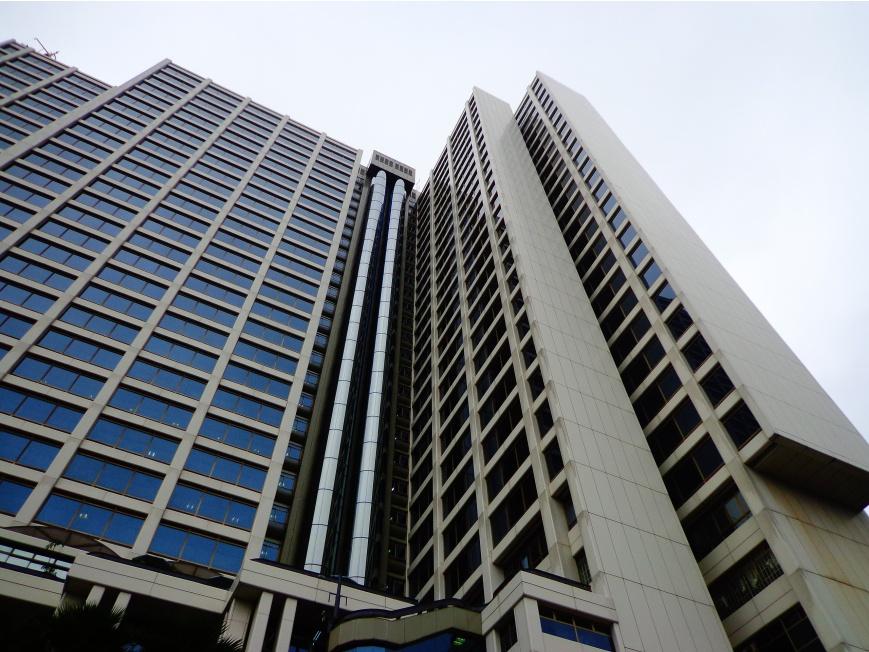
Real estate and alternatives
Few schemes globally include real estate and alternative investments due to their inherent risks. However, we believe that, despite legacy issues, we have developed the capacity to leverage these assets as a distinct advantage for the Fund. Real estate provides diversification benefits, particularly evident during volatile equity markets. In such situations, a single-digit positive return is preferable to a negative one. Our goal is to achieve double-digit returns at the total portfolio level moving forward.
Long-term investment approach
We believe in a long-term investment approach. Our investment team has the scale to engage with nearly every capital market and investment opportunity in the EastAfrican region.The Fund's unique characteristics and controllable circumstances drive our investment strategy. We manage our portfolio to meet both current and future obligations, ensuring timely benefit payments, achieving real long-term annualised returns, and minimising the risk of significant, sustained asset drawdowns.This approach allows the Fund to withstand short-term downturns and focus on creating long-term value.
The progress made since the last fiscal year is summarised inTable 3 below:


3: The progress made since the review of the fiscal year 30 June 2024
Reducing the allocation to fixed income to 75% of the investment portfolio.The minimum allocation is 70% while the maximum is 82.5%
Increasing the allocation to equities to 17.5% of the investment portfolio.This will include listed and private equity.The minimum allocation is 12.5% while the maximum is 20%.
Maintaining the allocation to real estate at 7.5% of the investment portfolio.This will include investing in build and sell projects, commercial and mixed-use properties, and land banking. The minimum allocation is 5% while the maximum is 10%.
Unlocking the value of real estate land by producing concepts to have it developed.
Diversifying by country (within the investment universe), asset class, sector, currency, and many other risk factors.
Exploring new asset classes that improve the risk-return profile of the Fund.
Achieving the optimal target remains a work in progress as most of the opportunities to absorb the kind of liquidity of a scheme of our size tend to exist in the fixed-income asset class. Nevertheless, we managed to keep the allocation below 80% at 79.6% (it increased from 78.48% last year)
The optimal target weight is still a work-in progress. In the fiscal year, allocation to equities increased to 13.32% (from 12.51% last year) on account of the recovery in equities on NSE and new investments inAirtel and MTN in Uganda.
This was largely achieved.The allocation reduced from 9% in 2023 to 6.9% in the most recent fiscal year ended 30 June 2024.The Mbuya Citadel is now fully sold. Solana selling is ongoing.The reduction in allocation was largely caused by project delays at PensionTowers,Temangalo, Off taker, Bwebajja, and theYusuf Lule projects.
Construction works are ongoing inTemangalo and Mbale. Progress was also made on the PensionTowers.A Design and Build Contractor was procured forYusuf Lule Road. The project is still at the design stage.
This continues to be a work-in progress. We deployed over UGX 300Bn in equities. We were also affected by the disruptions in Fund activity in the last half of the fiscal year
We continue to engage the legal and regulatory framework and other partners for diversification opportunities.
On average, we anticipate the economies of the countries we invest in will grow by 5% to 7%. We expect yields in the region to remain elevated, while inflation should stay within targeted ranges across our markets. In this high-yield and growth environment, we aim to achieve our double-digit return target. Nonetheless, given the continuance of heightened geopolitical factors and uncertainty as to when stability can be restored, there is a downward risk of volatility. Navigating market volatility and uncertainty requires innovation and leveraging our structural advantages.
Our investment management strategy focuses on achieving the following goals:
a) Setting a well-thought-out asset allocation that balances the collection of acceptable risks.
b) Carefully selecting and sizing a range of strategies that we believe can achieve our investment objectives.
We will continue to use a comprehensive portfolio investment framework to achieve our dual goals of competitive returns and long-term member empowerment. Our commitment to the Fund's purpose is unwavering: to provide economic security and promote saving as a way of life. We remain dedicated to the Fund's success and sustainability Our mission is clear: manage the Fund's investment portfolio cost-effectively, transparently, and with a focus on risk to generate value for members. With a skilled investment team and a well-thought-out strategy, we are confident in our ability to deliver strong , long-term performance.
Gerald Paul Kasaato, CFA Chief Investment Officer

During the year, we reviewed our strategic asset allocation (SAA). Upon evaluation and analysis, we elected to maintain the optimal weight targets to 75%, 17.5% and 7.5% for fixed income, equities, and real estate, respectively.This suggests an overall modest risk profile.The asset mix as of 30 June 2024, is depicted inTable 4 below:
The asset mix trend over the last twelve years is depicted in Figure 5 below Figure 5: The Fund's asset mix trend for the last thirteen years
Essentially, the investment mix is predominantly skewed towards fixed income.There have been deliberate efforts to diversify the investment portfolio since 2011.This has resulted in more allocation to equities and a reduction in real estate allocation over the years.This is mainly attributed to the slow absorption of funds into projects caused by a rather bureaucratic process of procurement and contract management.
Moreover, the growth in the asset size of the Fund has not been consistent with the opportunities on the stock markets. Even the significant investments in MTN (secondary listing) andAirtel (IPO) with over UGX 300Bn invested in the fiscal year did not necessarily cause a dent in the allocation. Most listed companies are either small or have free floats that are less than 50% - with several at 20%.Yet the few blue chips present a concentration risk.
Nonetheless, we believe that, in the circumstances, having a moderate risk profile for the asset allocation for the Fund is reasonable for several reasons:
a) It recognises the inherent constraint posed by the nature of capital markets where the Fund invests. Compared to mature markets, the markets where the Fund invests are small, illiquid, concentrated in a few sectors, and not deep. We still have a few listings on the stock exchanges, but the free float of several listed companies is less than 50%.This is exacerbated by the dominance of the financial services and telecom sectors which technically causes a concentration risk.
b) It recognises the need for sufficient liquidity for asset/liability matching needs.This is crucial in guaranteeing a timely payout to eligible beneficiaries.
c) It takes advantage of the relatively attractive interest rates and stable inflation in Uganda and the EastAfrican region.
d) It augurs well with the investment governance structure.
e) It still allows us to recognise the need to search for growth of the assets by taking calculated risks.There is no return without risk. We believe that the Fund can earn sufficient risk premiums by leveraging its liquidity and longterm investment horizon.
The investment portfolio is mainly exposed to six risk factors as depicted below The exposure to these risk factors has largely stayed the same if you observe the periods of 30 June 2022, to 30 June 2024.
risk factors
Risk Profiling of Nssf Total June 2022
Profiling of Nssf Total June 2023
Source: Internal
The overall risk of the portfolio on 30 June 2024, was lower compared to what it was on 30 June 2022. Nevertheless, the biggest exposure of the portfolio is the level of interest rates.This is consistent with the large allocation to fixed income and investments in interest rate-sensitive stocks like financial services companies, mainly banks.The other key risk factors are market volatility, company-specific factors, and credit risk. Equities explain most of the volatility of the portfolio occasioned by the change in prices on the stock exchanges. Uganda being a frontier market also explains the existence of commodity and credit risk as key risk factors for the portfolio.
The fixed income portfolio stood at 79.74%of total assets while the equity and real estate portfolios stood at 13.32%and 6.94%respectively. Compared to one year ago, the allocations to fixed income largely remained flat, while equities have increased with the recovery of the stock market and addition of MTN andAirtel to the portfolio.These allocations are consistent with the Fund's preferred strategic exposures as per the SAAlimits inTable 5.
We continued to take advantage of opportunities in the fixed income markets in both Uganda and the region, albeit in a constrained way The fixed income asset class recorded a return of 17.61%, an increase from 10.45%recorded the previous year Table 6 below illustrates the movement in the regional yield curves.
Table 6: Regional yield curves movements
In Kenya, we observed an upward shift in short-term yields, creating favourable opportunities in the second half of the year after a cautious approach in the first half. Yields in Uganda also improved year-over-year. In Tanzania, yields increased at the long end of the curve following the Bank ofTanzania's decision to reopen highcoupon rate bonds in February 2024.The Fund primarily invests in the long end of the yield curve to match the duration of its member fund.As a result, we secured attractive yields at this segment, which will provide substantial interest income in the years ahead.

The equity portfolio generated a return of 20.07% during the year ended 30 June 2024.This was primarily driven by forex and capital gains in the regional markets; the recovery of the NSE and addition of MTN andAirtel to the Uganda portfolio, to mention but some. Over the last two years performance of listed securities at the NSE came under significant pressure due to various macro-economic developments, both locally and internationally. Protracted global inflation and the subsequent rise in interest rates following the fiscal stimulus packages after Covid-19 in developed markets, led to significant capital reallocation from frontier markets such as Kenya to global markets.
The economic policies pursued by President William Ruto - such as raising taxes, cutting the fiscal deficit, taming inflation, refinancing a maturing Eurobond in June 2024 and stabilising the exchange rate – have been credited with enthusing the investors who are flocking back to the NSE.
Following the election of H.E William Ruto, tough measures were implemented to improve the fiscal position, initially causing unrest and resistance.
The Finance Bill of 2024 included proposals to eliminate subsidies, double VATon fuel to 16%, increase tax rates for high-income earners, and reduce recurrent and capital expenditures.These measures led to protests that unsettled investors, while global inflationary pressures compounded the difficulty of implementing the proposed changes.
Consequentially, the NSEASI suffered price depreciations in the month of June 2024 as foreign investors became net sellers on the country's macro issues and negative sentiments of possible spikes in NPLs in the banking sector, and Safaricom's challenges in Ethiopia.As an index, the NSEASI gained 2.33% year on year to 30 June 2024. However, this is better understood with context. For example, counters like Safaricom which had rebounded to a high price of KES 19.30 on 27 March 2024 retreated to close the year at KES 17.30 (a loss of 10.36% in KES excl. dividends) while KCB which had recorded its highest price in the year of KES 37.60 on 29 May 2024 closed the year at KES 31.25 (a loss 16.9% excl. dividends).
Equity bank which had touched a one-year high price of KES 49.20 on 26 March 2024 retreated to close the year at KES 42.25 (a loss of 14.13% excl. dividends). Nonetheless, the fact that the return on the currency in UGX (when KES is converted back to UGX) was 9.9%and starting the fiscal year from a low base for equity prices of KCB and Equity Bank (KES 29.30 and KES 38.25, respectively), returned an overall positive situation in Kenya. Even Safaricom which was flat in price terms, was positive when adjusted for currency and dividends.
Moreover,Tanzanian counters (just like the year before) continued to offer attractive returns; CRDB (20.7% when adjusted for dividends), NMB (59.3%), andTWIGAcement (11.8%).There were also strong positive returns from associates like;TDB Bank, Housing Finance Bank, andTPS Serena. The net effect was a fair value gain of UGX 306.7Bn from equity investments.This further validates a diversification strategy across different countries and sectors.

We hold real estate assets to realise capital gains and earn income. Over 40%of this asset class comprises undeveloped land.The strategy is to continuously work towards unlocking the value of some of the prime land through either, commercial developments for rent or the sale of residential units.The entire real estate portfolio (including non-income generating assets) yielded 5.56% during the financial year to 30 June 2024, which is almost flat compared to last year This return is mainly attributed to capital gains and sale of residential housing units.
The illustration below shows the build-up of the investment properties for the financial year ended 30 June 2024:
Figure 7: The growth in the Fund's investment properties and work in progress over the last year
Real estate project information update
UGX 138.5 Billion Net increase in Investment Properties
The Lubowa Housing Project is conceptualised as a self-sustaining satellite city with mixed-use housing and commercial developments on approximately 600 acres.The project branded as Solana is intended as a phased development with construction starting with an initial 306 housing units on 78 acres. Phase 1 will comprise of four (4) distinct house types:Apartments, Bungalows, Townhouses, and Villas.

The progress so far: Selling of housing units is ongoing and the market response has been excellent.
Figure 8: Some of the houses at Solana Lifestyle and Residences



PensionTowers is conceptualised as an intelligent and modern commercial complex comprising 3Towers (with a height of 32 floors) all sitting on 4 No. basement floors of parking.The total built-up area will be approximately 75,000m2 that will house office and retail space.The project has frontage on both LumumbaAvenue and Nakasero Road.
The progress so far:
Construction works are ongoing and as of 30 June 2024, the progress was estimated at 82%.
9: The progress at pension towers

TheTemangalo Housing Project (THP) is a mixed-use affordable housing project under construction on 463.87 acres of land inTemangalo, Wakiso district, just 17 km from Kampala City Centre.
It comprises 3,500 houses, retail and commercial spaces, community amenities including education, health, and social facilities, a large neighbourhood green area/park, and associated infrastructure including roads, electric power, sewage drainage, and water supply
Construction of Phase 1 started in October 2021 and comprises 550 units; 200 bungalows, 100 townhouses, 50 villas, and 200 apartments, with the starting price being UGX 90M.The construction is scheduled to be completed before the end of 2025.
10: The progress at Temangalo Housing Project

We intend to continue with portfolio rebalancing. For the fixed income asset class, this will be done by exploring corporate bonds, structured product opportunities, among others. We will also continue to seek more diversification opportunities within Uganda and the EastAfrican region.
In the equity asset class, we will explore opportunities in all the markets where we invest including private equity
In the real estate asset class, the strategy is to continuously work towards unlocking the value of some of the prime land that the Fund owns through either undertaking commercial and mixed-use developments for renting out or building residential houses for sale.About 70 percent of the real estate class comprises undeveloped land. Developing the land is one of the ways of unlocking the accumulated value over time.
We have presented our integrated report to provide all our stakeholders with balanced and transparent information, which can assist them in making more informed assessments of the organisation's prospects (including its viability/ sustainability) and value creation ability into the future.
The information in this outlook is essential when reporting to stakeholders as it completes the value creation story of the Fund as told in our report, which will also continue to evolve over coming years.
The following information covers the organisation's strategic path ahead – the leadership's view of the material uncertainties, disruptive factors, challenges that may affect the achievement of the strategic objectives and the potential implications for the organisation and of course the opportunities that have been identified. We present the information under each of the six capitals.

Key challenge
The Fund has shown robust annual performance throughout the reporting period.
However, we encountered a few challenges, including lowerthan-expected occupancy rates and reduced unit sales, which affected revenue generation from our real estate portfolio. In addition, we faced issues with low compliance rates which has a detrimental effect for members' long-term social security
Measures undertaken to address the challenge:
During the year, we enhanced our Whistleblower platform to allow members to report non-compliance, enhancing overall compliance. We also upgraded ourAI integration with the Uganda RevenueAuthority to automate the creation of social security bills for employers, addressing under-declaration issues and increasing value for our members.
Additionally we established the foundation for strategic partnerships with government bodies and other key collaborators to tackle obstacles in the real estate sector This groundwork aims to enhance the prospects of our real estate portfolio by addressing and overcoming the factors that are currently impeding us.
Trend during the reporting period:
Our strategic focus will be on implementing key actions that align with our growth and development objectives.This includes maximising value from partnerships by enhancing collaborations, improving our voluntary product offerings to better meet member needs, refining asset allocation strategies to optimise returns and manage risks, and addressing challenges in real estate development through innovative solutions and improved project management.
Together, these efforts will drive us towards a more successful and resilient future, ensuring we effectively meet our goals and deliver greater value to our members which still remains guaranteeing an interest on member savings that surpasses long-term inflation rates by a margin of at least 2%.
Our annual collections totaled UGX 1,932Bn, exceeding the budget by 0.63% and representing a 12.5% increase compared to the previous year Arrears and new registrations contributed UGX 157Bn, driving over 70% of this growth.Additionally, we registered 8,374 employers, up from 6,827 the previous year, reflecting a 23% increase.
As of the end of June 2024, the Fund's actual growth exceeded the target by UGX 1.03Tn. Our asset size increased by 19.2%, rising from UGX 18.56Tn the previous year to UGX 22.13Tn.This growth was primarily driven by unrealised gains, including UGX 255Bn in foreign currency gains and UGX 270Bn in capital gains.
Despite the challenges presented by rising global supply chain costs, we are committed to enhancing cost efficiency throughout our operations. Notably, we have achieved a cost of administration of 1.0%, surpassing our target of 1.08%.
• Enhance data capability
• Improve governance, compliance, and risk management
• Improve service delivery
Key challenge
Delays in payment of member benefits.
In the upcoming year, we will concentrate on building new capabilities by utilising our internal expertise to enhance OctoPAS. Our main initiatives will include developing an internal compliance module to ensure regulatory adherence, integrating value-driven features into the system, and creating a strategic roadmap for medium-term digitisation.
These efforts are expected to generate significant cost savings, speed up the launch of new products, and implement an ERP system to centralise data and decision-making, which will also involve deploying virtual customer service agents and languagebased support to improve customer interactions.
Our strategic target is to pay member benefits in 1 day
Measures undertaken to address the challenge:
During the year, we focused our efforts on optimising OctoPAS to enable straight-through processing across core pension services such as registration, contribution, and claims.This optimisation is crucial for enhancing efficiency, reducing manual interventions, and improving the overall member experience.
Trend during the reporting period:
Other key developments during the year included transitioning 44.8% of claims applications to digital formats to reduce manual interventions, and launching anAI-driven financial literacy agent that supports users in English, Luganda, and Swahili, enhancing financial education and accessibility Outlook
Although we have not fully met the 1-day target, we have made notable progress that has improved the member experience.The benefits payout turnaround time has remained relatively stable at 10.1 days, showing only a slight improvement from the previous year's 11.9 days, mainly due to system limitations.
We are now investing substantial resources and effort into business process re-engineering and system customisation to enhance and expand our product and service offerings. We are confident that these efforts will ultimately enable us to reduce the turnaround time to one day, increase the number of beneficiaries, and address process challenges, particularly at the verification stage, as well as manage cash flow issues during peak periods when interest is declared.
Human Capital
Ensuring that our workforce remains agile, flexible, and engaged amidst the changing operating environment.
In the coming year we will focus on advancing our team through key initiatives aimed at improving talent management, performance, and innovation. We will establish a comprehensive, digitised talent management journey that supports employees from application through to alumni, fostering growth and seamless integration. We will also introduce a new performance management approach centred on clear goals, continuous feedback, and customised development plans to boost productivity and engagement.Additionally we will prioritise enhancing innovation and productivity by implementing agile methodologies and promoting a culture of continuous improvement, enabling employees to contribute more effectively and drive the Fund's success.
Measures undertaken to address the challenge:
During the year, we introduced several key initiatives to strengthen and empower our workforce, including manager coaching, cross-functional collaboration through agile projects, HR training for non-HR managers, and strategic partnerships for employee growth.These efforts are designed to build a resilient and adaptable workforce equipped to handle current and future challenges. Employee engagement remains a top priority as we strive to create an inclusive workplace where every voice is valued
Trend during the reporting period:
Employees remain at the core of ensuring a robust and enduring Fund. Compared to the previous financial year, we have seen a notable improvement in employee satisfaction scores.Throughout the year the Fund attained a staff engagement score of 89%, largely due to several key initiatives aimed at boosting engagement and performance.
During the year, we enhanced innovation and productivity by adopting agile methodologies, creating national subject matter experts, and providing placement and secondment opportunities for employee development. Significant organisational and structural improvements included reconstituting the staff committee for better representation and finalising a new organogram to mitigate risks from the Voluntary Early Retirement initiative.
Committee oversight
StaffAdministration and CorporateAffairs Committee (SACA)



We also prioritised employee well-being by integrating mental health support into our operations and advancing inclusivity, particularly with a focus on gender parity Additionally, we optimised performance and communication by updating job descriptions and grades to align with organisational goals and strengthening transparency through improved communication channels.

Strategic priorities
• Enhance brand image • Improve customer satisfaction • Enhance product development
Key challenge
Delays in gazetting new regulations, which have significantly impeded our ability to develop a compelling value proposition for our voluntary offerings.
To remain relevant to our members and also stay competitive in the market, we will focus on accelerating the delivery of valuable products and services to our clients. We see significant growth potential in three key areas: insurance partnerships, trusts, and wealth management.
We will further implement our new business model, which emphasises streamlined processes, innovative technologies, and a client-centric approach. Our goal is to introduce the Smart Life Savings Plan, aimed at offering individuals a compelling value proposition for voluntary savings.
Measures undertaken to address the challenge:
To tackle the challenge of delays in gazetting new regulations, we took several proactive measures. We actively engaged with regulatory bodies through regular communication and meetings to expedite the approval and implementation process.
While awaiting the new regulations, we completed the development and pilot testing of the Smart Life Voluntary Savings Plan.Additionally, throughout the year we strategically utilised our existing partnerships and formed new ones, including successful collaborations with Ministries and Government departments.These efforts expanded our network and improved our capacity to serve a wider range of clients and stakeholders.
Trend during the reporting period:
The overall CSI score has experienced a notable improvement, reaching 88%.This can be attributed to an improvement in the Fund's brand health rating, which rose from 71% to 78% this year, driven by increased member confidence in the Fund's engagement and perceived value. Members feel more secure about their investments and value the competitive returns, boosting overall trust and positive perception of the brand.
Additionally positive sentiment has increased significantly, rising from 56% in July 2023 at the beginning of the financial year to an average of 92.1%. This improvement is closely linked to increased exposure and enhanced engagement initiatives.
In the coming year we aim to achieve a 20% reduction in energy consumption over the next three years, with the previous fiscal year serving as our baseline.To support this goal, we will implement regular maintenance of transformers, stabilisers, and HVAC systems to ensure they operate at peak efficiency Additionally we will explore the installation of solar panels in the parking tower to harness renewable energy. We also plan to enhance energy efficiency by installing timer systems for security lights, ensuring they are only active when needed and are not left on during daylight hours.
We are targeting a 15% reduction in water consumption within the next two years. We will also focus on improving waste management by ensuring all waste from our buildings is diverted to city pipelines, in accordance with local waste management regulations.These initiatives reflect our commitment to advancing our sustainability efforts and minimising our environmental footprint.
Measures undertaken to address the
Our ongoing commitment to environmental sustainability is reflected in our comprehensive efforts to enhance water and energy efficiency, reduce waste, and support a paperless office. We have implemented various measures to optimise water and energy use, such as installing energyefficient systems, conducting regular audits, and adopting conservation practices.
Additionally our push for a paperless office involves continued advocacy for full transitioning to digital documentation and communication methods, which not only reduces paper consumption but also streamlines our processes and improves operational efficiency These initiatives collectively demonstrate our dedication to lowering our environmental impact and fostering a more sustainable workplace.
Key outcomes:
•As of end of June 2024, the fund recorded an increase in energy consumption at both Social Security House and Workers House building due to the increase in the occupancy rate for the two buildings
• Water consumption increased by 26.95% primarily attributed to a 10% tariff increase imposed by NWSC in July 2023 and a rise in occupancy rates across both Worker's House and Social Security House
• Paper usage resulted in a savings of 4.96%



Total Revenue (UGX)
Income generated from various investment activities associated with the main operations of the Fund and shown before any costs or expenses are deducted.
Realised Revenue (UGX)
Profits or income from completed transactions.
Unrealised Revenue (UGX)
Profits or income occurring on paper, but the relevant transactions not yet completed.Also called paper profit or paper income, because it is recorded on paper but has not actually been realised. It includes gains on; Revaluation, Equity Investments and Foreign Exchange.
Cost ofAdministration
Total operating costs/expenses, associated with company management, direction, policy or business activities/operations.
Accumulated Members' Funds
Total amount of money collected over a period of time from employees and other contributors in the private sector plus interest credited to members over time.
Interest to Members
Amount credited to members accounts based on the income earned from various investments.
Asset Growth
Movement inTotalAssets.
Return onAverage Investment (%)
Gain generated on an investment relative to the amount of money invested.
Cost Income Ratio (%)
Total Operating Costs expressed as a percentage ofTotal Income.
Return on Member's Fund (%)
Gain generated in the period expressed as a percentage of Member Fund balance.
Compliance Level (%)
Active members contributing consistently as a percentage of total active members.
StrategicAssetsAllocation
Aportfolio strategy that involves setting target allocations for various asset classes and re-balancing periodically
Dividend Income
Adistribution of a portion of a company's earnings, decided by the board of directors, paid to a class of its shareholders.
Share of Results/ Profits fromAssociate/Fair Value Gain onAssociates
Aportion, allocation or share of Investee company profits in which the Fund owns a significant portion of voting shares (20 - 50%).
Fair Value
The price that would be received to sell an asset or paid to transfer a liability in an orderly transaction between market participants at the measurement date.
Investment Portfolio
Acompilation of investment assets designed to achieve a specific investment objective based on parameters such as risk tolerance, time horizon, asset preference, and liquidity needs with a potential to achieve the desired returns, while minimising risk and volatility through proper diversification and balance.
Fixed Income Portfolio
Assets or securities in an Investment portfolio paying regular income in the form of coupon, interest and principal at maturity
Equity Portfolio
Stock or any other security in an investment portfolio representing an ownership interest in Investee companies.
Real Estate Portfolio
Physical securities and assets in investment portfolio purchased, owned, sold, managed for rental income for a profit.
Convexity
Convexity is a measure of the degree of the curve, in the relationship between bond prices and bond yields. It demonstrates how the duration of a bond changes as the interest rate changes. We use it as a risk-management tool, to measure and manage out portfolio's exposure to interest rate risk.
Sharpe Ratio
Sharpe Ratio is the average return earned in excess of the risk-free rate per unit of volatility or total risk. Subtracting the risk-free rate from the mean return allows us to better isolate the profits associated with risk-taking activities.The greater the value of the Sharpe ratio, the more attractive the risk-adjusted return.
Discontinued Operations
This relates to operations that were ceased during the financial year due to disposal or cessation.
Fund Reserves
Fund Reserves relate to accumulated special contributions received in accordance with Section 13 (1) and Section 14 (1) of the National Social Security FundAct, (Cap 222).
Emphasis of Matter
Aparagraph included in the auditor's report that refers to a matter appropriately presented or disclosed in the financial statements that, in the auditor's judgment, is of such importance that it is fundamental to users' understanding of the financial statements.
KeyAudit Matter
Akey audit matter is that which in the auditor's professional judgment was of most significance during the audit of the financial statements.
Association of Chartered CertifiedAccountants
Advanced DigitalArchival
Allied Democratic Forces
Artificial Intelligence
Annual Members' Meeting
Audit and RiskAssurance Committee
Bachelor ofArts
Business-to-Business
Business-to-Customer
Billion
British-American Investments Company
Bachelor of Sciences
Buy Uganda Build Uganda
CompoundAnnual Growth Rate
Central Business District
Central Bank of Kenya
Central Bank of Rwanda
Central Bank Rate
Customer Connect Week
Chief Executive Officer
Central Organisation of FreeTrade Unions
Capital MarketsAuthority
Crisis Management Plan
Cooperative Rural Development Bank
Control Self-Assessment
Corporate Social Investment
Corporate Social Responsibility
Diversity, Equity and Inclusion
Directorate of IndustrialTraining
Democratic Republic of the Congo
Disaster Recovery Plan
Dar-Es-Salam Stock Exchange
Development Finance Company of Uganda Bank Ltd
EastAfrican Breweries Limited
East and CentralAfrican Social SecurityAssociation
Environmental ImpactAssessment
Electricity RegulatoryAuthority
Enterprise Risk Management
Environmental, Social and Governance
Executive Committee
Fellow of the Chartered CertifiedAccountants
Financial ReportingAwards
Financial Literacy
Foreign Exchange
Federation of Ugandan Employers
Global Reporting Initiative
Housing Finance Bank
Human Resources
InternationalAccounting Standards
InternationalAccounting Standards Board
Institute of Certified PublicAccountants of Uganda
International Financial Reporting Standards
International Labour Organisation
Investment and Project Monitoring Committee
International Social SecurityAssociation
International Sustainability Standards Board
International Monetary Fund
Information
InformationTechnology
Interactive Voice Response
Thousand
KampalaAmateur Volleyball
Kenya Commercial Bank
Kampala Capital CityAuthority
Kenyan Shilling
KnowYour Customer
Key Performance Indicator
LegalAid Providers Network
Million
Masters Degree in BusinessAdministration
Medium Density Fibreboard
Ministry of Finance, Planning and Economic Development
Ministry of Gender, Labour and Social Development
Minister of Health
Masters Degree in Science
Morgan Stanley Capital International
MidtermAccess
National Environmental ManagementAuthority
National Identification and RegistrationAuthority
National Insurance Corporation
National Organisation ofTrade Unions
Net Promoter Score
Nairobi Stock Exchange
National Social Security Fund
National Water and Sewerage Corporation
The Organisation for Economic Co-operation and Development
Occupational Safety and Health
PensionAdministration System
Public Procurement and Disposal of PublicAssets Authority
Premier Developments Limited
Public RelationsAssociation of Uganda
PricewaterhouseCoopers International Limited
RiskAppetite Framework
Robotic ProcessAutomation
Rwandese Franc Road
Risk Management Policy and Procedures
Rwanda Stock Exchange
StrategicAssetAllocation
Savings and credit cooperative services
StaffAdministration and CorporateAffairs Committee
Sustainable Development Goals
Stanbic Bank Uganda
Small, Medium and Micro Enterprise
Short Messaging Services
Straight through process
Turnaround time
Transformation Business Network
Tanzania Breweries Limited
Trillion
Tanzania Portland Cement Company Limited
Tanzanian Shilling
Uganda BloodTransfusion Services
Uganda Clays Limited
User interface
United Kingdom
United Nations International Children's Emergency Fund
Uganda NationalAssociation of Building and Civil Engineering Contractors
Ugandan National RoadsAuthority
Uganda People's Defence Force
Uganda RevenueAuthority
Unstructured Supplementary Service Data
Uganda Retirement Benefits RegulatoryAuthority
Uganda Registration Services Bureau
Uganda Securities Exchange
Uganda Shilling
Unstructured Supplementary Service Data
Uganda BloodTransfusion Services
User experience
Victoria Properties Development Limited
WithholdingTax
Year to Date
Year onYear Acronyms
FinancialYear